Chinese Herbal Medicine
How to submit an article:
- Registered users can submit any published journal article that has a unique DOI (Digital Object Identifier) name or link to Research Hub.
- For example, you can paste the full DOI link:
https://doi.org/10.1109/5.771073or just the DOI name:10.1109/5.771073into the field above and click submit. - The person who is first to submit a valid article to Research Hub will forever be credited for it, and every article submission earns you +6 Research Points.
Sub-Topics:
- Ai Ye
- An Gong Niu Huang Wan
- An Shen Ding Zhi decoction
- Ba Ji Tian
- Ba Zhen Tang
- Bai Hua She She Cao
- Bai Ma Gu
- Bai Zhi
- Bai Zhu
- Ban Xia
- Bu Gu Zhi
- Bu Shen Tian Jing Formula
- Bu Yang Huan Wu
- Bu Zhong Yi Qi Tang
- Chai Hu
- Chai Hu Jia Long Gu Mu Li Tang
- Chai Hu Shu Gan San
- Chan Tui
- Chuan Xiong
- Da Cheng Qi Tang
- Da Huang
- Dan Dou Chi
- Dan Shen
- Dan Shen Decoction
- Dang Gui
- Dang Gui Bu Xue Tang
- Dang Gui Shao Yao San
- Dang Gui Si Ni Decoction
- Dang Shen
- Di Huang
- Dingji Fumai Decoction
- Du Huo
- Du Huo Ji Sheng Wan
- Du Zhong
- Er Xian Decoction
- Er Zhi Wan
- Fang Feng
- Field Mint
- Fu Ling
- Fu Pen Zi
- Fu Zi
- Gan Cao
- Gan Cao Gan Jiang Tang
- Gan Mai Da Zao Tang
- Gan Mai Da Zao Wan
- Ge Gen
- Ginseng
- Gu Sui Bu
- Gui Pi Tang
- Gui Zhi
- Gui Zhi Fu Ling Wan
- Gui Zhi Shao Yao Zhi Mu Decoction
- Gui Zhi Tang
- Hu Zhang
- Hua Jiao
- Huang Bai
- Huang Lian
- Huang Qi
- Huang Qin
- Huangqi Xixin decoction
- Ji Gu Cao capsule
- Ji Sheng Shen Qi Wan
- Jia Wei Di Tan Tang
- Jia Wei Jing Jie Lian Qiao Tang
- Jia Wei Xiao Yao San
- Jian Pi Yi Shen Formula
- Jie Geng
- Jie Geng (Platycodon grandiflorum)
- Jin Yin Hua
- Jing Jie
- Juan Bi Tang
- Lei Gong Teng
- Lian Hua Qing Ke Li
- Lian Qiao
- Liu Wei Di Huang Wan
- Long Dan Xie Gan Tang
- Ma Huang
- Ma Huang Tang
- Mai Dong
- Mu Li
- Mu Zei
- Naoxintong Capsule
- Ningxin Tongyu Zishen Tang (NTZT)
- Niu Bang Zi
- Pei Tu Qing Xin Tang
- Pi Pa Qing Fei Yin
- Qiang Huo
- Qing Dai
- Qing Fei Da Yuan Granules
- Qing Fei Pai Du Decoction
- Ru Xiang
- Run Zao Zhi Yang Capsule
- San Qi
- Sang Ju Yin
- Sang Ye
- Sha Shen
- Sha Shen Mai Dong Decoction
- Shan Yao
- Shan Zhu Yu
- Shao Yao
- Shen Ling Bai Zhu San
- Shen Qi Wan
- Shen Yan Xiao Bai granule
- Sheng Ma
- Sheng Mai San
- Shi Quan Da Bu Tang
- Shi Wei Qing Wen Decoction
- Shu Feng Jie Du Capsule
- Shu Mian capsule
- Si Jun Zi Tang
- Si Ni Jia Ren Shen Decoction
- Si Ni San
- Si Ni Zuo Jin Decoction
- Si Wu Tang
- Suan Zao Ren
- Suan Zao Ren Tang
- Tai Zi Shen
- Tao He Cheng Qi Decoction
- Tao Hong Si Wu Tang
- Tian Ma
- Tian Qi
- Tian Wang Bu Xin Dan
- Tong Yang Huo Xue Decoction
- Wen Dan Tang
- Wen Jing Tang
- Wen Xin Ke Li
- Wu Wei Zi
- Xi Xian Cao
- Xi Xin
- Xia Ku Cao
- Xian He Cao
- Xian Ling Gu Bao Formula
- Xiang Fu
- Xiang Ru
- Xiao Chai Hu Tang
- Xiao Hui Xiang
- Xiao Yao San
- Xin Yi
- Xin Yi Qing Fei Tang
- Xu Duan
- Xuan Fei Bai Du decoction
- Xue Fu Zhu Yu Tang
- Yi Mu Cao
- Yi Qi Bu Shen Huo Xue decoction
- Yin Huo Tang
- Yin Yang Huo
- You Gui Wan
- Yu Nu Jian
- Yu Ping Feng San
- Yu Xing Cao
- Yu Zhu
- Zhe Bei Mu
- Zhen Wu Decoction
- Zheng Yi Fang
- Zhi Bai Di Huang Wan
- Zhi Zi
- Zi Shen Yu Tai Wan
- Zi Su Ye
- Zuo Gui Wan
Related Topics
Published research studies are articles that present the findings of original research that has undergone a peer-review process and has been made publicly available in scholarly journals, books or other media.

Exploring the mechanism of Danggui Sini Decoction in the treatment of myocardial infarction: A systematic review, network pharmacology, and molecular docking
2024 Oct 18 Medicine Li Z, Liu S, Zhang R, Li B
Network Pharmacology Myocardial Infarction Dang Gui Si Ni DecoctionThe Danggui Sini Decoction, a Traditional Chinese Medicine, may prevent myocardial infarction by positively influencing cell proliferation, inflammatory responses, and aging processes.
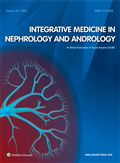
Can Prostate Cancer Patients be Prescribed Chinese Herbal Medicine? A Review of its Potential Modulatory Effects on the Androgen Receptor
2024 Jul 31 Integrative Medicine in Nephrology and Andrology Wu YL, Xian YF, Zhang J, Guo J, Lin ZX
The review suggests that Chinese medicine, especially CHM, shows potential as a complementary therapy for prostate cancer by inhibiting androgen receptor activity, improving patient quality of life, and addressing challenges like castration-resistant disease and drug resistance.
Review Article Prostate Cancer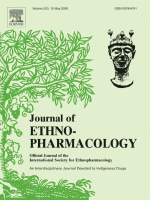
Potential Mechanisms of Guizhi Fuling Wan in Treating Endometriosis: An Analysis Based on TCMSP and DisGeNET Databases
2024 Jul Journal of Ethnopharmacology Yee JL, Huang CY, Yu YC, Huang SJ
Systematic Review Endometriosis Gui Zhi Fu Ling WanGuizhi Fuling Wan, a traditional Chinese herbal formula, can inhibit endometriosis growth and enhance the effects of western medicines used to treat the condition.
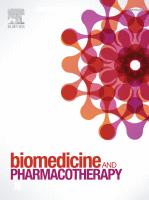
Shen Qi Wan ameliorates nephritis in chronic kidney disease via AQP1 and DEFB1 regulation
2024 Jan Biomedicine & Pharmacotherapy Liu Y, Hong X, Liu L, Li X, Huang S, Luo Q, et al.
SQW demonstrated a reduction in renal collagen deposition, decreased serum inflammatory cytokine levels, and improved renal function in adenine-induced CKD mice and AQP1-/- mice. The potential therapeutic target β-defensin 1 (DEFB1) was identified, and SQW was found to alleviate inflammatory responses by fostering AQP1-mediated DEFB1 expression. The renal-protective effect of SQW was partly attenuated after AQP1 gene knockout, highlighting its potential as a novel strategy for CKD management.
Experimental Study Shen Qi Wan
Jian-Pi-Yi-Shen formula alleviates renal fibrosis by restoring NAD+ biosynthesis in vivo and in vitro
2023 Dec 28 Aging Gao L, Huang X, Deng R, Wu S, Peng Y, Xiong G, et al.
Experimental Study Animal Study Renal Fibrosis Jian Pi Yi Shen Formula Chronic Kidney DiseaseJian-Pi-Yi-Shen formula has shown potential in delaying kidney deterioration in chronic kidney disease by rejuvenating the process of creating nicotinamide adenine dinucleotide.
Research insights are moderated by the Research Hub team and offer an at-a-glance overview of interesting research findings.

2024 Medicine
The Danggui Sini Decoction, a Traditional Chinese Medicine, may prevent myocardial infarction by positively influencing cell proliferation, inflammatory responses, and aging processes.
Network Pharmacology Dang Gui Si Ni Decoction Myocardial Infarction
Exploring the mechanism of Danggui Sini Decoction in the treatment of myocardial infarction: A systematic review, network pharmacology, and molecular docking
Li Z, Liu S, Zhang R, Li B

2024 Journal of Ethnopharmacology
Guizhi Fuling Wan, a traditional Chinese herbal formula, can inhibit endometriosis growth and enhance the effects of western medicines used to treat the condition.
Systematic Review Endometriosis Gui Zhi Fu Ling Wan
Potential Mechanisms of Guizhi Fuling Wan in Treating Endometriosis: An Analysis Based on TCMSP and DisGeNET Databases
Yee JL, Huang CY, Yu YC, Huang SJ

2023 Aging
Jian-Pi-Yi-Shen formula has shown potential in delaying kidney deterioration in chronic kidney disease by rejuvenating the process of creating nicotinamide adenine dinucleotide.
Experimental Study Chronic Kidney Disease Jian Pi Yi Shen Formula Renal Fibrosis
Jian-Pi-Yi-Shen formula alleviates renal fibrosis by restoring NAD+ biosynthesis in vivo and in vitro
Gao L, Huang X, Deng R, Wu S, Peng Y, Xiong G, et al.

2023 Biomedicine & Pharmacotherapy
Fructus Lycii and Salvia miltiorrhiza Bunge extract (FSE) shows potential as a clinical treatment for retinitis pigmentosa by inhibiting photoreceptor cell death following oxidative stress.
Experimental Study Dan Shen Retinitis Pigmentosa
Fructus Lycii and Salvia miltiorrhiza Bunge extract attenuate oxidative stress-induced photoreceptor ferroptosis in retinitis pigmentosa
Yang Y, Wang Y, Deng Y, Lu J, Xiao L, Li J, et al.
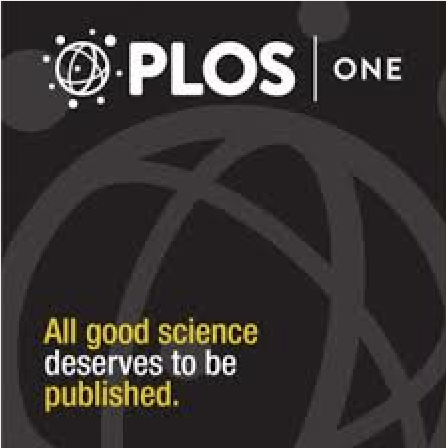
2023 PLOS One
Oral Chinese herbal medicines appear to enhance recovery when used as supplements to conventional treatment after sinus surgery.
Meta-Analysis Chronic Rhinosinusitis
Orally administered Chinese herbal therapy to assist post-surgical recovery for chronic rhinosinusitis—A systematic review and meta-analysis
Cui J, Lin W, May BH, Luo Q, Worsnop C, Zhang AL, et al.
Review Articles
Review articles summarise and critically evaluate the current state of research on a specific topic or field by synthesising multiple primary research studies.

Can Prostate Cancer Patients be Prescribed Chinese Herbal Medicine? A Review of its Potential Modulatory Effects on the Androgen Receptor
2024 Jul 31 Integrative Medicine in Nephrology and Andrology Wu YL, Xian YF, Zhang J, Guo J, Lin ZX
The review suggests that Chinese medicine, especially CHM, shows potential as a complementary therapy for prostate cancer by inhibiting androgen receptor activity, improving patient quality of life, and addressing challenges like castration-resistant disease and drug resistance.
Review Article Prostate Cancer
Potential Mechanisms of Guizhi Fuling Wan in Treating Endometriosis: An Analysis Based on TCMSP and DisGeNET Databases
2024 Jul Journal of Ethnopharmacology Yee JL, Huang CY, Yu YC, Huang SJ
Systematic Review Endometriosis Gui Zhi Fu Ling WanGuizhi Fuling Wan, a traditional Chinese herbal formula, can inhibit endometriosis growth and enhance the effects of western medicines used to treat the condition.

Orally administered Chinese herbal therapy to assist post-surgical recovery for chronic rhinosinusitis—A systematic review and meta-analysis
2023 Oct 05 PLOS One Cui J, Lin W, May BH, Luo Q, Worsnop C, Zhang AL, et al.
Meta-Analysis Systematic Review Chronic RhinosinusitisOral Chinese herbal medicines appear to enhance recovery when used as supplements to conventional treatment after sinus surgery.
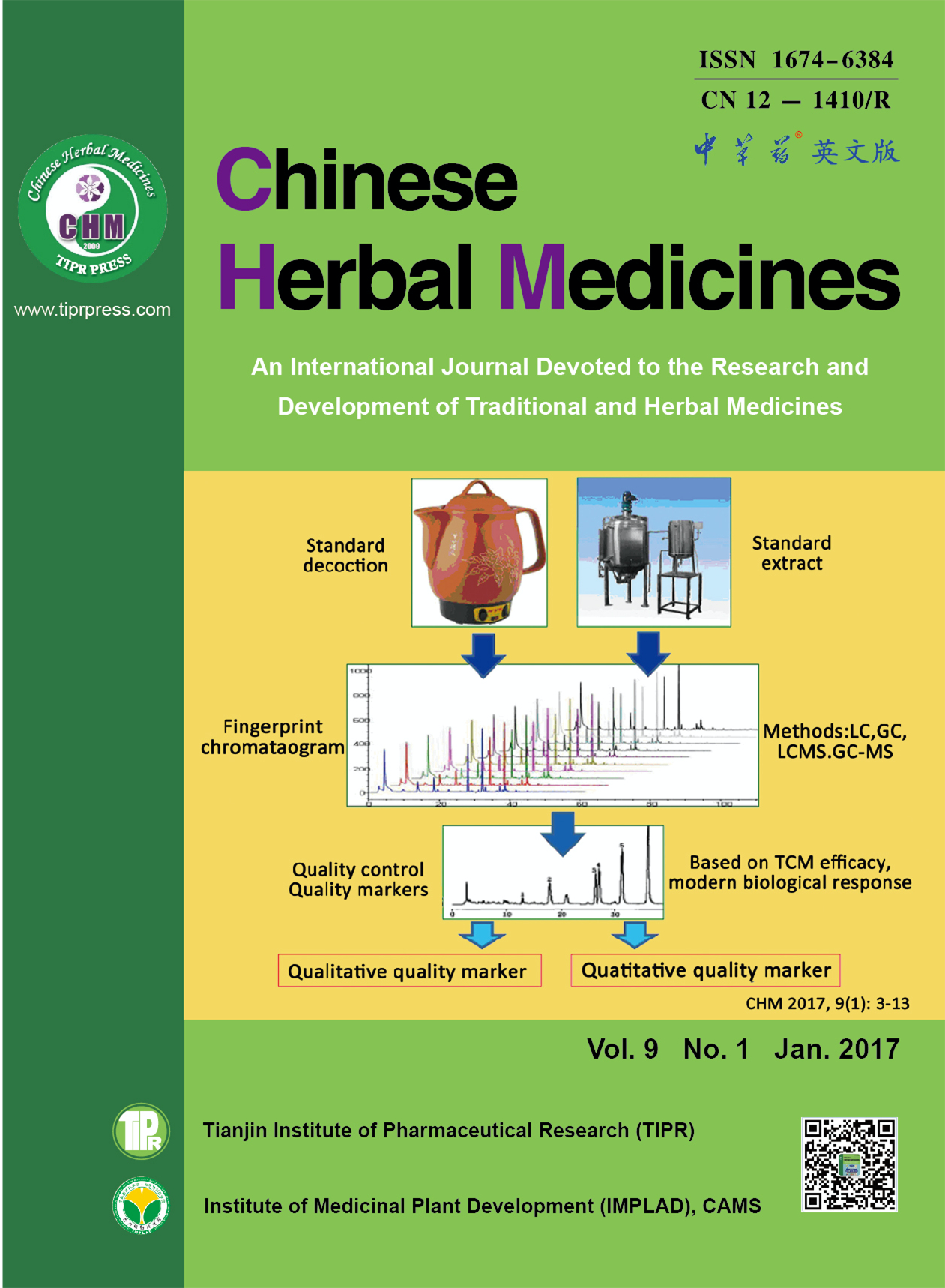
Chinese herbal medicines for prostate cancer therapy: From experimental research to clinical practice
2023 Oct Chinese Herbal Medicines Kong F, Wang C, Zhang J, Wang X, Sun B, Xiao X, et al.
Review Article Experimental Study Chinese Herbal Medicine Prostate CancerChinese herbal medicines (CHMs) possess multiple advantages, including multiple targets, pathways, and low toxicity, for the treatment of prostate cancer.
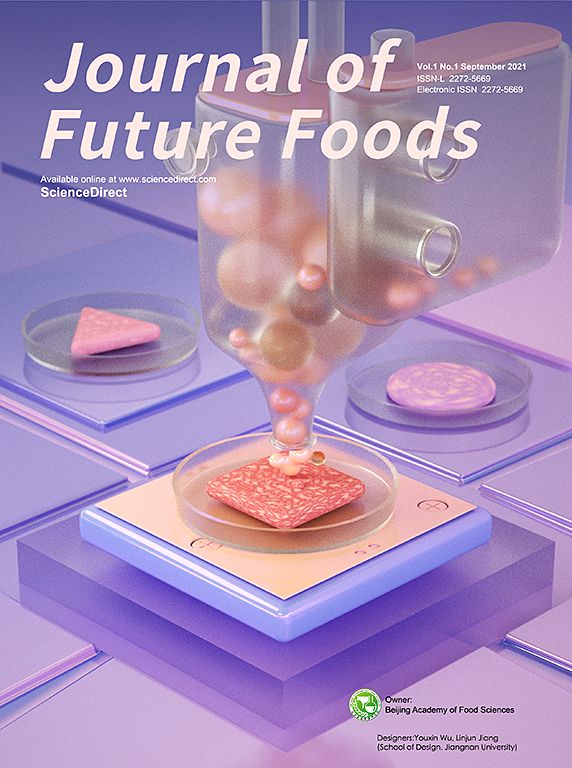
A review on the application, phytochemistry and pharmacology of Polygonatum odoratum, an edible medicinal plant
2023 Sep Journal of Future Foods Bi J, Fang H, Zhang J, Lu L, Gu X, Zheng Y
Through a comprehensive analysis of the chemical composition and pharmacological effects, it is presumed that the main active ingredients are homoisoflavanones, polysaccharides, saponins, and lectins, and the pharmacological effects are antitumour, anticancer, antioxidant, delayed aging activity, slowing senescence, relieving fatigue and immune regulation.
Review Article Yu ZhuClinical Trials
Clinical trials are research studies that involve people and are conducted to evaluate the safety and efficacy of new treatments or interventions, such as drugs, medical devices, or behavioural therapies.

Manufacture and Evaluation of Novel Chocolate for Girls' Dysmenorrhea
2023 Mar 01 Journal of Food and Dairy Sciences Shalaby, A, Moawad O, Mostafa M
Randomised Controlled Trial Dark Chocolate Iron Field Mint CinnamonCinnamon, ginger, and mint enhanced chocolates effectively reduce menstrual pain and improve blood iron levels without increasing body weight or negatively affecting cholesterol.
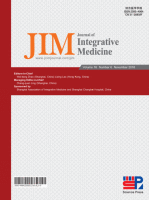
Efficacy of the herbal formula of Foeniculum vulgare and Rosa damascena on elderly patients with functional constipation: A double-blind randomized controlled trial
2022 May Journal of Integrative Medicine Azimi M, Niayesh H, Raeiszadeh M, Khodabandeh-shahraki S
Although both interventions significantly improved the treatment outcomes, constipation severity, stool consistency and the quality of life were improved more effectively by the herbal formula than by PEG 4000; however, the mechanism of action is not yet understood.
Randomised Controlled Trial Constipation Damask Rose Xiao Hui Xiang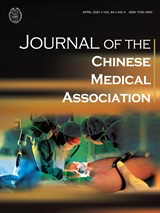
A Houttuynia cordata–based Chinese herbal formula improved symptoms of allergic rhinitis during the COVID-19 pandemic
2022 Apr 14 Journal of the Chinese Medical Association Chang KW, Lin TY, Fu SL, Ping YH, Chen F, Kung YY
Zheng-Yi-Fang (ZYF) has potential effects to relieve nasal symptoms for allergic rhinitis (AR) during the COVID-19 pandemic.
Randomised Controlled Trial Yu Xing Cao Zheng Yi Fang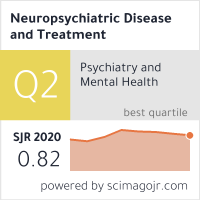
Clinical Efficacy of the Chinese Herbal Medicine Shumian Capsule for Insomnia: A Randomized, Double-Blind, Placebo-Controlled Trial
2022 Mar Neuropsychiatric Disease and Treatment Chen S, Xu Z, Li Y, Wang T, Yue Y, Hou Z, et al.
Shumian capsule (SMC) could safely improve sleep quality with depression and anxiety remission in insomnia patients.
Randomised Controlled Trial Insomnia Shu Mian capsule
Jing Si Herbal Drink as a prospective adjunctive therapy for COVID-19 treatment: Molecular evidence and mechanisms
2022 Mar Pharmacological Research - Modern Chinese Medicine Lu PH, Tseng CW, Lee JL, Lee EY, Lin YP, Lin IH, et al.
Review Article Randomised Controlled Trial Ai Ye Mai Dong Chrysanthemum Jie GengThe Jing Si Herbal Drink, composed of various antiviral, antioxidant and anti-inflammatory herbs, has been confirmed as potentially effective in treating COVID-19 symptoms.
Study Protocols
Published study protocols are detailed plans that outline the objectives, methodology, statistical analyses, and organisation of a research study that have been made publicly available for others to review and use as a reference.

Efficacy and safety of acupuncture in combination with Chinese herbal medicine in dealing with osteoporosis: A protocol for a systematic review and network meta-analysis
2022 Dec 30 Medicine Long P, Ju S, Wang J
The current systematic review and network meta-analysis will provide the effectiveness and safety of acupuncture in combination with CHM in dealing with OP. The research will provide reliable evidence for the clinical use of acupuncture in combination with CHM in dealing with OP.
Study Protocol Acupuncture
Efficacy and safety of Chinese herbal medicine Danggui Sini decoction for knee osteoarthritis: A protocol for systematic review and meta-analysis
2022 Nov 18 Medicine Zhou X, Xiang KM, Li J, Yang G, Wang Y, Xia H, et al.
This study will compare the effects of DGSND and any other different methods on patients with KOA to provide high-quality, evidence-based clinical recommendations. The study provides a trustable clinical foundation for DGSND in the treatment of KOA.
Study Protocol Dang Gui Si Ni Decoction Chinese Herbal Medicine
Efficacy and safety of Chinese herbal medicine Buzhong Yiqi decoction for postmenopausal women with osteoporosis: A protocol for systematic review and meta-analysis
2022 Nov 11 Medicine Xiang K, Yang J, Liu W, Chen L, Hou H, Zhou X, et al.
This study will evaluate the efficacy and safety of BZYQD in the treatment of PMOP, to provide high-quality, evidence-based clinical recommendations. It will also provide a trustable clinical foundation for BZYQD in the treatment of PMOP.
Study Protocol Bu Zhong Yi Qi Tang Chinese Herbal Medicine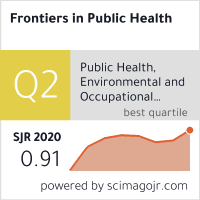
Assessing the efficacy and safety of Juan Bi Tang for dialysis-related myofascial pain in the fistula arm: Study protocol for a randomized cross-over trial
2022 Aug 19 Frontiers in Public Health Hsu YT, Ng HY, Chen YH, Huang YC, Lee YY, Tsai MY
The results of the study will provide convincing evidence on the use of Juan Bi Tang (JBT) as an adjuvant treatment for dialysis-related myofascial pain.
Study Protocol Myofascial pain Juan Bi Tang
Effectiveness and safety analysis of SanHanHuaShi granules for the treatment of coronavirus disease 2019: Study protocol and statistical analysis plan for a randomized, parallel-controlled, open-label clinical trial
2022 Aug 16 Frontiers in Pharmacology Liu Y, Chen X, Wang H, Yao C, Gou X, Gao Z, et al.
The results of this study will provide robust evidence to confirm the effectiveness and safety of SHHS in the treatment of COVID-19.
Study Protocol SanHanHuaShi GranulesPresentation Slides

Network Pharmacology
The Danggui Sini Decoction, a Traditional Chinese Medicine, may prevent myocardial infarction by positively influencing cell proliferation, inflammatory responses, and aging processes.
Li Z, Liu S, Zhang R, Li B

Systematic Review
Guizhi Fuling Wan, a traditional Chinese herbal formula, can inhibit endometriosis growth and enhance the effects of western medicines used to treat the condition.
Yee JL, Huang CY, Yu YC, Huang SJ

Experimental Study
Jian-Pi-Yi-Shen formula has shown potential in delaying kidney deterioration in chronic kidney disease by rejuvenating the process of creating nicotinamide adenine dinucleotide.
Gao L, Huang X, Deng R, Wu S, Peng Y, Xiong G, Lu J, Liu X

Experimental Study
Fructus Lycii and Salvia miltiorrhiza Bunge extract (FSE) shows potential as a clinical treatment for retinitis pigmentosa by inhibiting photoreceptor cell death following oxidative stress.
Yang Y, Wang Y, Deng Y, Lu J, Xiao L, Li J, Zhou Y, Nie F, Chen X, Peng J, Tan H, Qin Y, Peng Q

Meta-Analysis
Oral Chinese herbal medicines appear to enhance recovery when used as supplements to conventional treatment after sinus surgery.
Cui J, Lin W, May BH, Luo Q, Worsnop C, Zhang AL, Guo X, Lu C, Li Y, Xue CC

Review Article
Chinese herbal medicines (CHMs) possess multiple advantages, including multiple targets, pathways, and low toxicity, for the treatment of prostate cancer.
Kong F, Wang C, Zhang J, Wang X, Sun B, Xiao X, Zhang H, Song Y, Jia Y
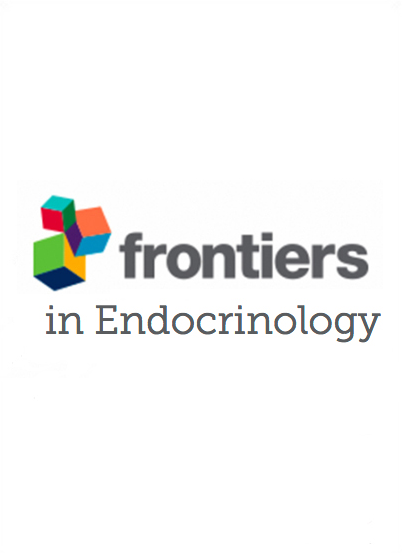
Systematic Review
Jia Wei Xiao Yao San could potentially enhance the effectiveness of antithyroid drugs in treating hyperthyroidism especially in symptom relief and side effect reduction.
Ma W, Zhang X, Zhao R, Tang Y, Zhu X, Liu L, Xu M, Wang G, Peng P, Liu J, Liu Z
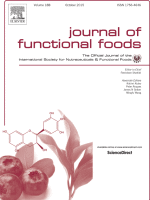
Animal Study
Fermented Pueraria lobata root extract and Glycine max extract showed estrogen-like activities, reducing depressive symptoms in menopausal mice but not increasing female cancer risks.
Ha J, Jang HM, Choi I

Experimental Study
The herbal decoction Jian-Pi-Yi-Shen reduces symptoms of chronic kidney disease and anaemia by improving iron metabolism and inhibiting the JAK2-STAT3 signaling pathway.
Li C, Huang H, Wang R, Zhang C, Huang S, Wu J, Mo P, Yu H, Li S, Chen J

Experimental Study
Zhangyanming Tablets show potential as a protective agent for retinal function in early-stage, genetically-caused blindness in mice, possibly due to their antioxidant and anti-/pro-apoptotic properties.
Huang Z, Huang Q, Xu K, Liang L, Li Y, Zhou W, Ning N, Zhou J, Hu J, Liu S, Dang L

Review Article
Chinese herbal medicines could potentially relieve ulcerative colitis by moderating the gut microbiota and intestinal immunity loop.
Yang Y, Wang Y, Zhao L, Wang F, Li M, Wang Q, Luo H, Zhao Q, Zeng J, Zhao Y, Du F, Chen Y, Shen J, Wei S, Xiao Z, Wu X

Systematic Review
Combining Guipi Decoction (GPD) with western medicine holds promise for improving chronic heart failure treatment by enhancing effectiveness and cardiac measures
Rong Y, Wu D, Li M, Teng J

Systematic Review
Meta-Analysis highlights promising role of Guipi Decoction as adjuvant therapy for chronic heart failure
Rong Y, Wu D, Li M, Teng J

Randomised Controlled Trial
Cinnamon, ginger, and mint enhanced chocolates effectively reduce menstrual pain and improve blood iron levels without increasing body weight or negatively affecting cholesterol.
Shalaby, A, Moawad O, Mostafa M
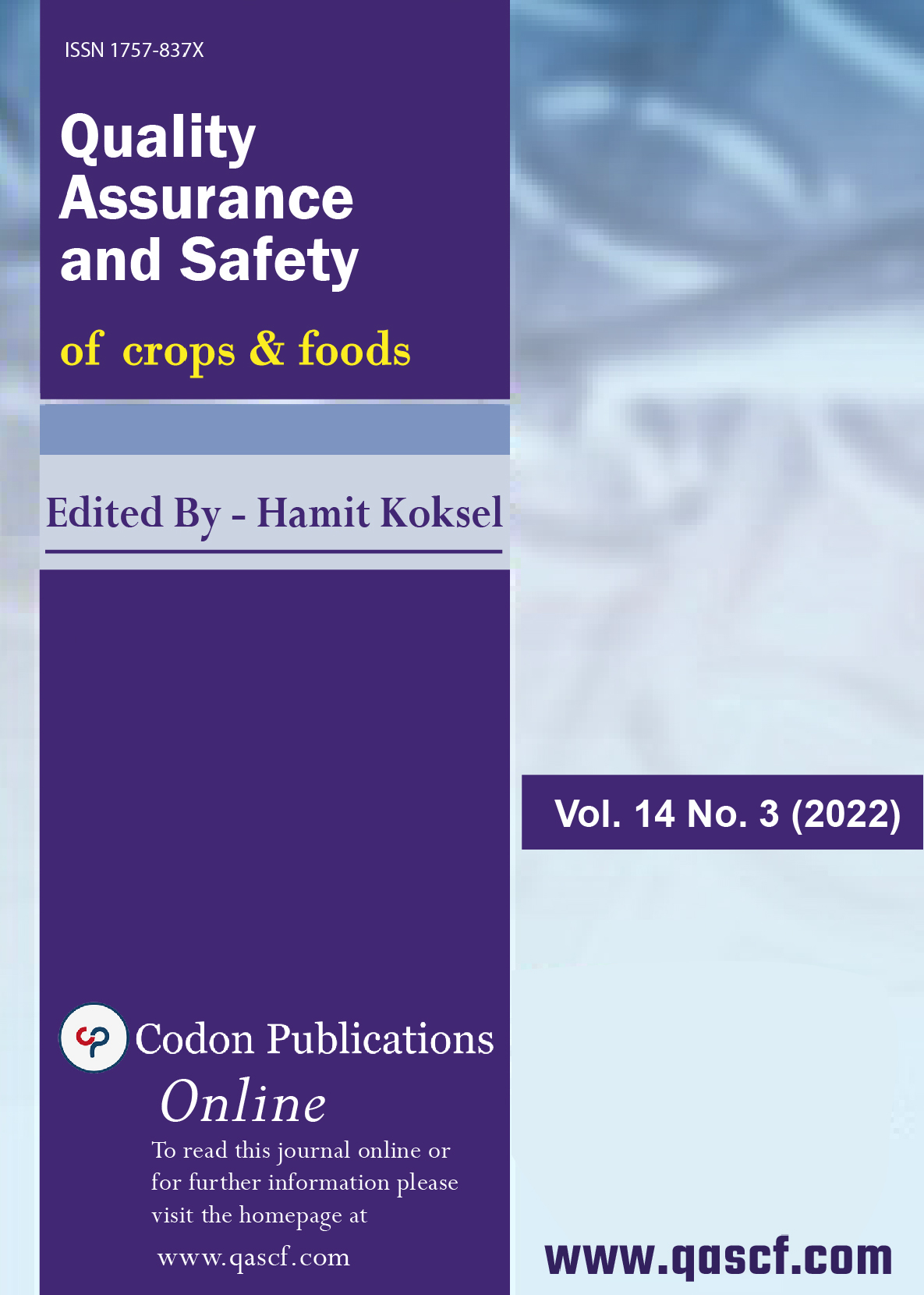
Meta-Analysis
The traditional Chinese herbal medicine Shaoyao Gancao Tang (SG-Tang) may be an effective and safe alternative treatment to relieve Restless Leg Syndrome.
Tian Z, Li R, Wei J, Huai W, Xia J, Jiang H, Xiong Y, Chen Y

Review Article
Chaihu Shugan powder, a traditional Chinese medicine, presents potential advantages in treating post-stroke depression, showing potential as an alternative to conventional antidepressants.
Gao Z, Wang Y, Yu H

Systematic Review
Chinese Herbal Medicines may help with chronic sinusitis and acute rhinosinusitis symptoms with LDXGT and modified CEZS working well, especially for CRS.
Cui J, Lin W, May BH, Luo Q, Worsnop C, Zhang AL, Guo X, Lu C, Li Y, Xue CC
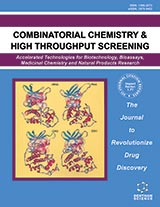
Network Pharmacology
The Chinese medicine formulas Zuo Gui Wan and You Gui Wan have the potential to treat premature ovarian failure through different pharmacological pathways.
Shanshan Mei, Chaoqin Yu, Jie Ding, Wen Cheng
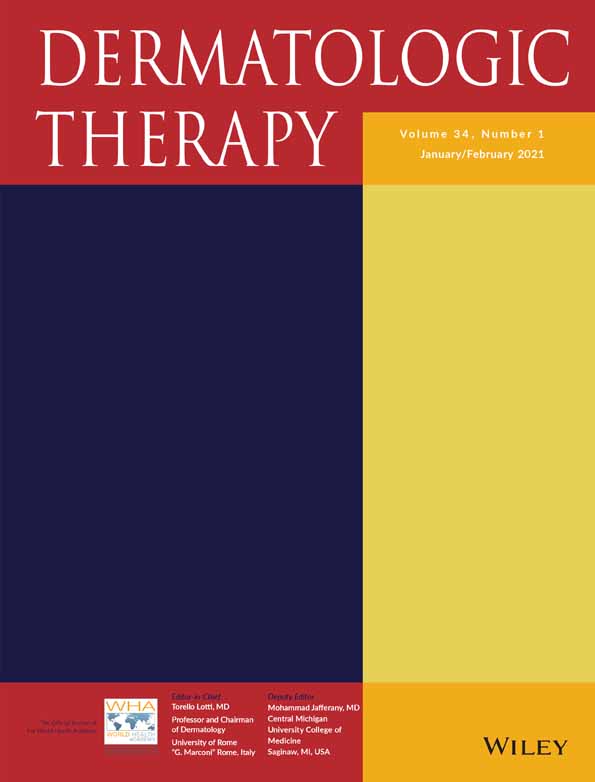
Systematic Review
Long Dan Xie Gan formula used as an adjuvant therapy may hasten skin healing, relieve pain symptoms, and prevent persistent pain in acute herpes zoster patients.
Zhang L, Duan A, Li Y, Feng J

Systematic Review
Chinese herbal medicine (CHM) improved AD symptoms but had no significant impact on patients' quality of life or IgE levels suggesting CHM's potential as an AD treatment with further research.
Cai X, Sun X, Liu L, Zhou Y, Hong S, Wang J, Chen J, Zhang M, Wang C, Lin N, Li S, Xu R, Li X

Systematic Review
HuoXiang ZhengQi (HQXXD) may be a safe and effective treatment for Chronic Cough Variant Asthma (CVA), improving clinical efficacy and airway responsiveness while reducing recurrence rates.
Wang C, Xia Q, Hu B, Jiang W, Zhang H

Network Pharmacology
Gui Zhi Fu Ling Wan can lessen the expression of certain proteins, which may be key to its ability to impede abnormal tissue invasion and metastasis in adenomyosis.
Shi Y, Zhang C, Wang X, Wang Z, Zhang Y, Liu Z, Wang X, Shi W

Review Article
Xiao Yao San has potential as an effective and safe alternative treatment for depression, offering multiple mechanisms of action for its antidepressant effects.
Chen J, Lei C, Li X, Wu Q, Liu C, Ma Q, Chen J.

Review Article
Various traditional Chinese medicine treatment strategies could potentially provide an effective alternative in slowing the progression of Chronic Kidney Disease.
Yunlai Wang, Ye Feng, Manman Li, Mo Yang, Gaoxiang Shi, Zihua Xuan, Dengke Yin, Fan Xu
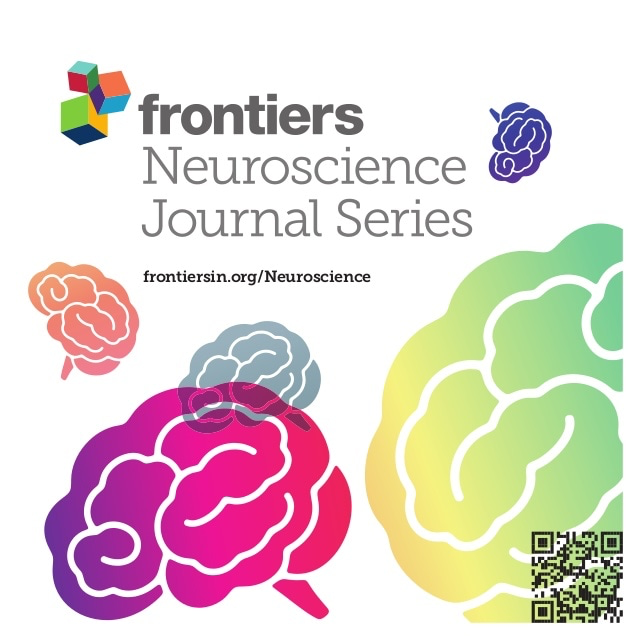
Systematic Review
Chinese herbal medicine shows promising and safe outcomes in relieving functional dyspepsia symptoms and associated psychological disorders.
Luo X, Wang L, Fang S, Qing X, Jiang T, Yang Y, Su X, Wei W
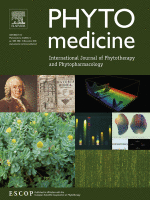
Review Article
Chinese Herbal Medicine Prescriptions (CHMPs) have demonstrated to be potentially effective in managing Inflammatory Bowel Disease (IBD) with a comprehensive, holistic approach.
Zhang S, Luo H, Tan D, Peng B, Zhong Z, Wang Y

Systematic Review
Guizhi Shaoyao Zhimu Decoction was more effective and had fewer adverse reactions compared to the control group in the treatment of gout and the combined use of modified GSZD with other treatments showed decreased levels of C-reactive protein and erythrocyte sedimentation rate.
Liu H, Chi X, Zhang H, Shi H, Pan J, Wang Y, Xue X, Lu Y, Song X, Ma K

Cohort Study
Shenling Baizhu San (SBS), combined with mesalamine, can treat ulcerative colitis effectively by changing gut microbiota structures and increasing tryptophan metabolite levels.
Jiao C, Zhang Q, Yang M, Ma J, Zhao X, Tang N, Dai M, Li Q, Jiang Z, Huang X, Zhang H, Sun L

Systematic Review
Chinese herbal medicine shows evident efficacy in treating coronary heart disease patients with anxiety or depression, notably improving symptoms of angina pectoris.
Wang B, Teng Y, Li Y, Lai S, Wu Y, Chen S, Li T, Han X, Zhou H, Wang Y, Lu Z, Li H, Ding Y, Ma L, Zhao M, Wang X

Systematic Review
Chinese herbal medicine has shown effectiveness in treating amenorrhea caused by antipsychotic drugs, with an overall treatment effectiveness rate of 0.91, but the duration of treatment is relatively long, and further research is required to explore its application in this context.
Liu L, Li H, Tan G, Ma Z

Systematic Review
Chinese herbal medicines combined with antithyroid drugs may offer benefits in lowering relapse rates, reducing the incidence of adverse effects, relieving symptoms, improving thyroid antibody status and thyroid function.
Zeng X, Yuan Y, Wu T, Yan L, Su H
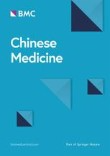
Review Article
Chinese herbal medicine interventions, particularly those based on the Bai-Tou-Weng-Tang and Shen-Ling-Bai-Zhu-San formulas, show promise in treating Ulcerative Colitis.
Zhang X, Zhang L, Chan JCP, Wang X, Zhao C, Xu Y, Xiong W, Chung WC, Liang F, Wang X, Miao J, Bian Z

Experimental Study
The Chaihu Shugan Formula, a traditional Chinese medicine, not only effectively modulates intestinal gut microbiota but also strengthens gut barrier integrity and contains powerful anti-inflammatory properties.
Liu L, Lu Y, Xu C, Chen H, Wang X, Wang Y, Cai B, Li B, Verstrepen L, Ghyselinck J, Marzorati M, Yao Q
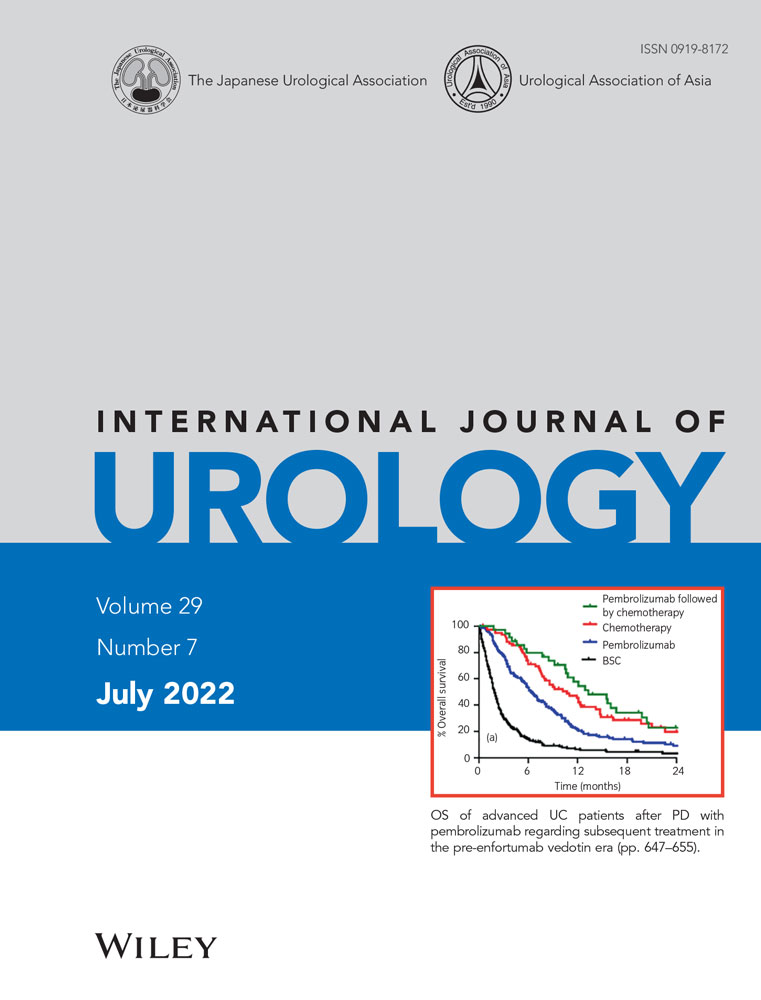
Cohort Study
Chinese herbal medicine can significantly reduce the risks of complications and need for surgery associated with benign prostatic hyperplasia.
Ou SC, Huang ST, Lin MC, Chen WC, Huang CP, Lin HJ
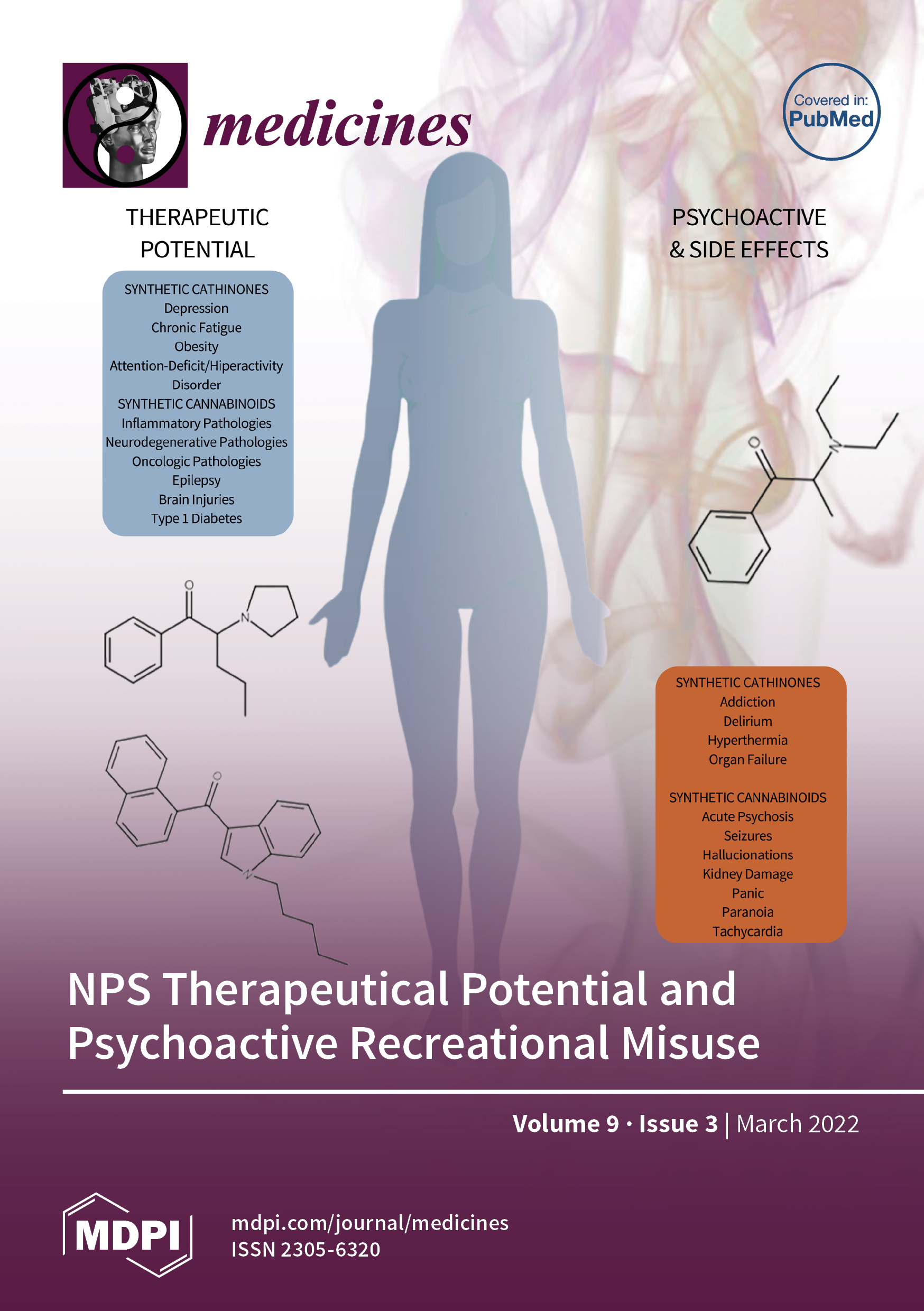
Systematic Review
Wen Dan Tang potentially treats neurological, psychiatric disorders, cardiovascular diseases, and digestive disorders, and might improve life quality in headache patients.
Pradhan SK, Li Y, Gantenbein AR, Angst F, Lehmann S, Shaban H
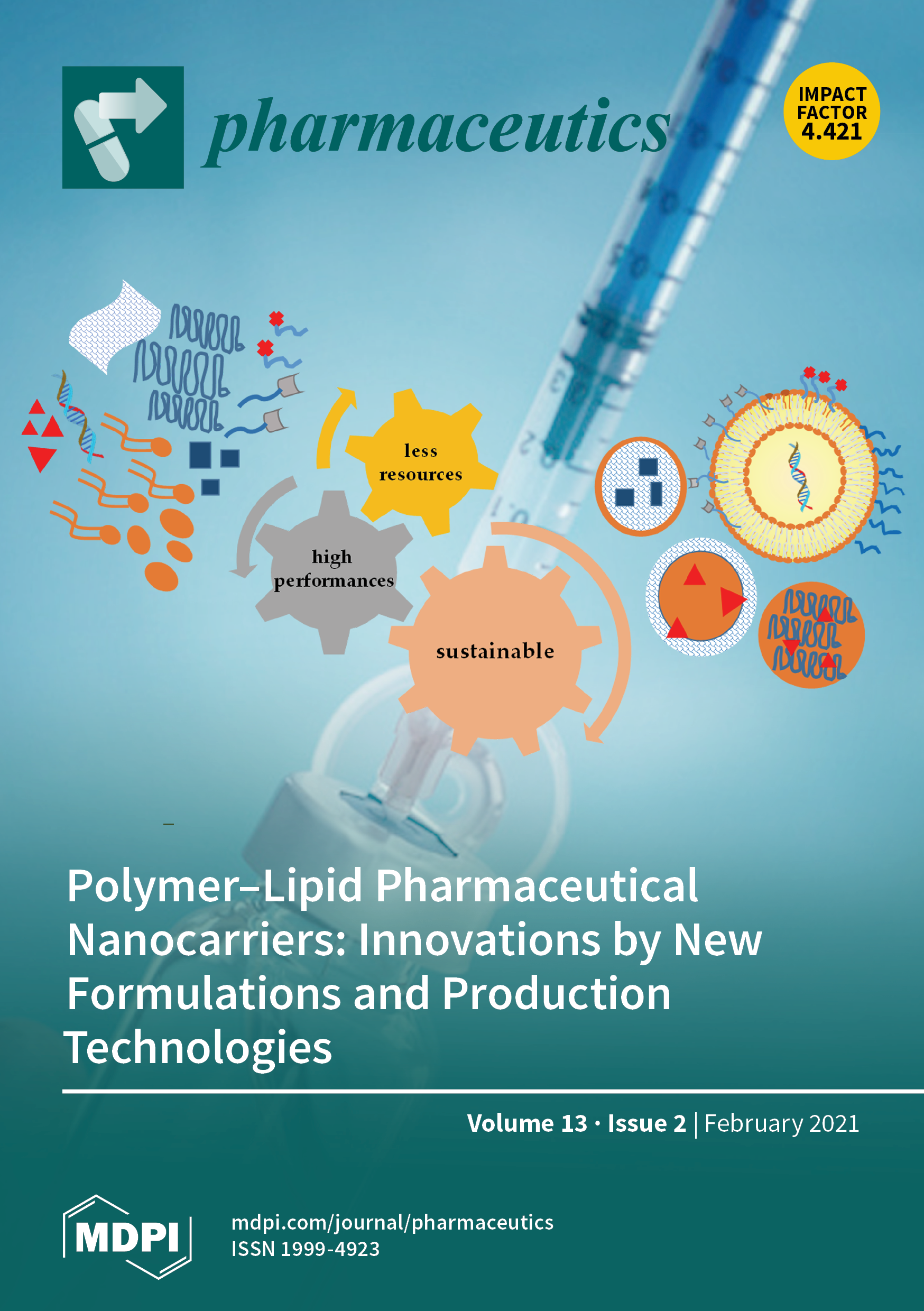
Network Pharmacology
Asthma severity can be notably reduced by Xi Xin essential oil, which decreases inflammation, immunoglobulins, and fibrotic mediators, while also alleviating airway obstruction.
Han JM, Kim MH, Choi LY, Kim G, Yang WM

Review Article
The Jing Si Herbal Drink, composed of various antiviral, antioxidant and anti-inflammatory herbs, has been confirmed as potentially effective in treating COVID-19 symptoms.
Lu PH, Tseng CW, Lee JL, Lee EY, Lin YP, Lin IH, Yu MC, Lu KC, Kuo KL

Systematic Review
Traditional Chinese medicine, including acupuncture, can provide superior pain relief and faster recovery for HIV-related Herpes Zoster compared to regular drugs.
Jiang Y, Zheng RX, Yu ZY, Zhang XW, Li J, Lan HD, Qiao SY, Han M, Cao HJ, Robinson N, Liu JP

Systematic Review
Xiao Yao San can improve symptoms and reduce recurrence rates in patients with disorders of gut-brain interaction.
Liu Q, Shi Z, Zhang T, Jiang T, Luo X, Su X, Yang Y and Wei W
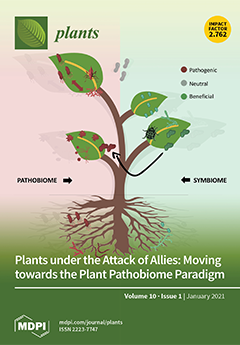
Animal Study
The traditional Chinese medicine Gan Mai Da Zao Tang may lessen depressive behaviors in rats, likely through licorice increasing serotonin transporter and brain-derived neurotrophic factor signals in the hippocampus.
Li YX, Cheng KC, Hsu CT, Cheng JT, Yang TT

Experimental Study
Si Wu Tang has improved menstrual symptoms by increasing estradiol content and antioxidative effects as a result of its herbs' synergistic relationships.
Guan-Cheng Huang, Yi-Zhe Tsai, Chia-Jung Lee, Heng-Yu Chang, Ching-Chiung Wang

Cohort Study
The majority of reproductive age women with endometriosis in Taiwan use traditional Chinese medicine, specifically Gui Zhi Fu Ling Wan, to relieve related symptoms.
Ruei-Chi Fang, Yueh-Ting Tsai, Jung-Nien Lai, Chia-Hao Yeh, Chien-Tung Wu

Systematic Review
Adding Du Huo Ji Sheng Decoction on bisphosphonate medications seems to be an effective and safe strategy in treating patients with osteoporosis.
Huang CY, Cheng CJ, Chiou WF, Chang WC, Kang YN, Lee MH
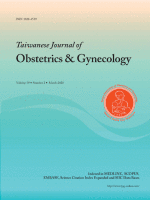
Animal Study
Combining traditional Chinese medicine Guizhi Fuling Wan with western hormonal therapies can potentially reduce their individual effectiveness in treating endometriosis.
Chen CC, Huang CY, Shiu LY, Yu YC, Lai JC, Chang CC, Fu CF, Huang SJ
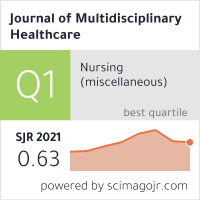
Cohort Study
Adding Chinese herbal medicines to routine treatment was found to be related to lower fracture risk in rheumatoid arthritis patients.
Liao HH, Livneh H, Chung YJ, Lin CH, Lai NS, Yen HR, Tsai TY
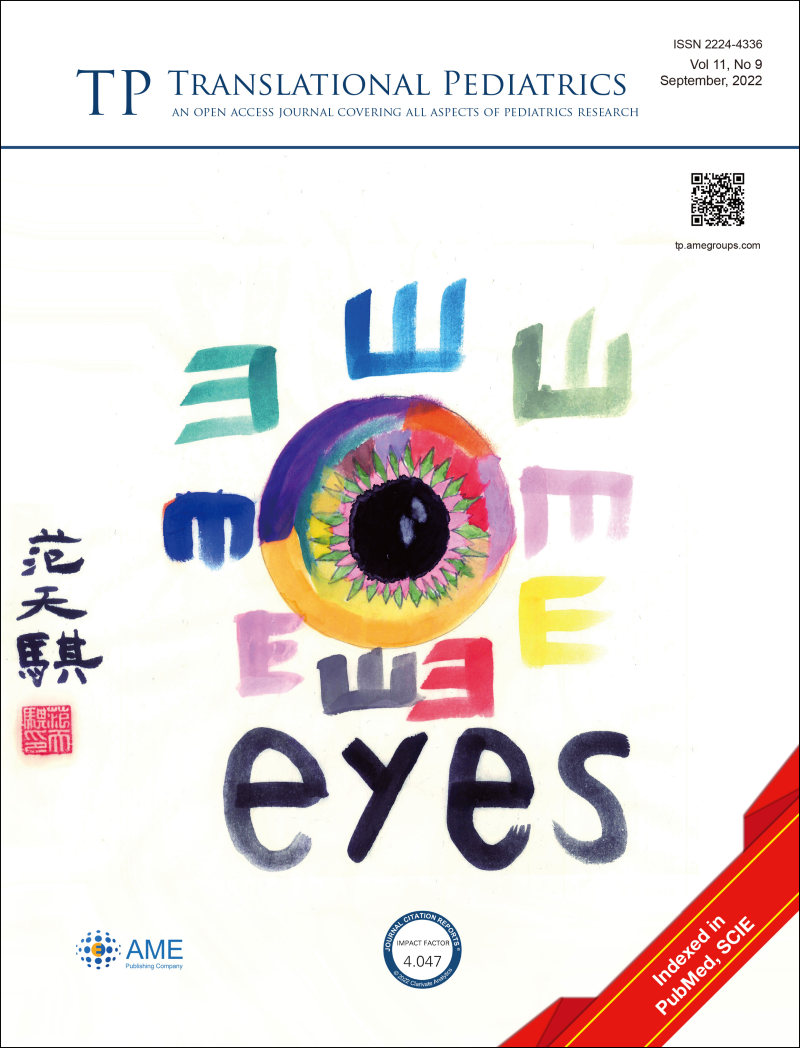
Review Article
Allergic rhinitis in children, according to traditional Chinese medicine, is interrelated with the functionality of lungs, spleen, and kidney and can be treated with combined Western and Chinese herbal medicines.
Liang J, Gu Q
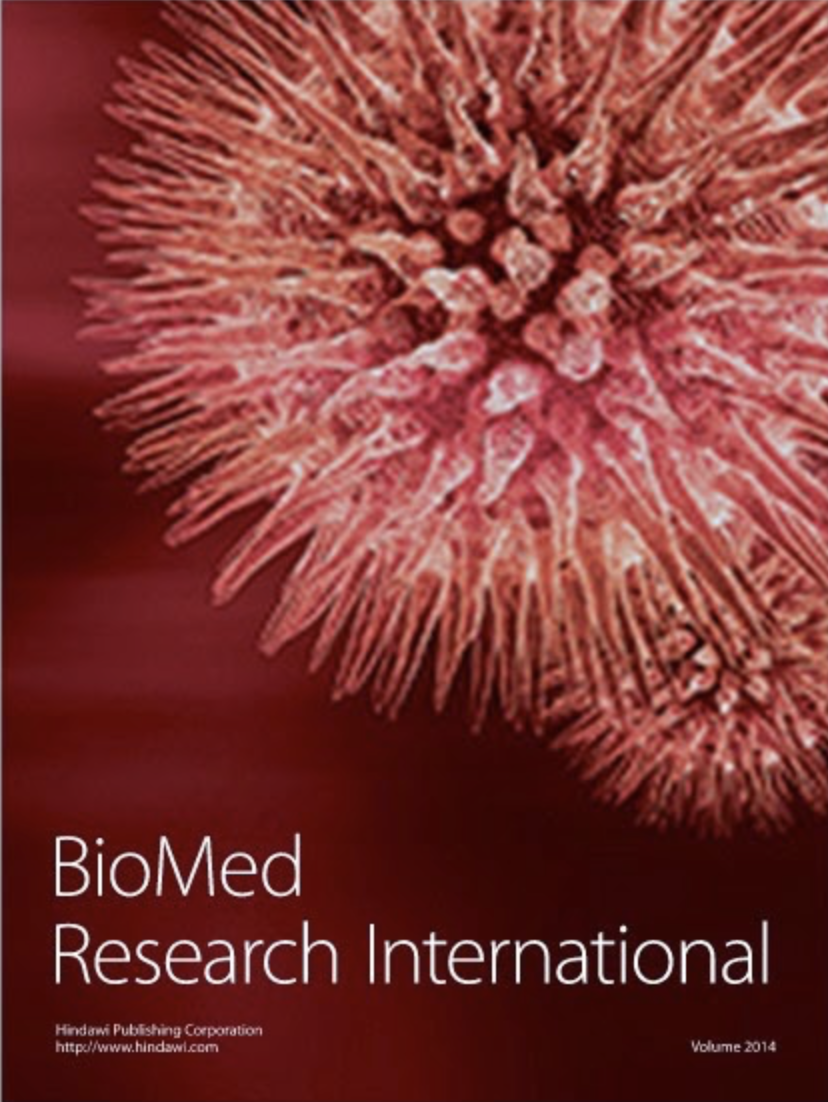
Network Pharmacology
Dang Gui Si Ni formula moderates intervertebral disc degeneration by primarily interacting with stress responses and apoptotic signaling pathways.
Wang L, Lin J, Li W

Review Article
Chinese herbal medicines could alleviate chronic kidney disease symptoms by combating fibrosis, inflammation, oxidative stress, and encouraging repair and regeneration.
Shao M, Ye C, Bayliss G, Zhuang S

Network Pharmacology
Gui Zhi Fu Ling Wan treats adenomyosis by intervening in local estrogen signalling pathways and affecting estrogen resistance via myometrium signalling pathways.
Wang H, Zhang J, Zhu Q, Fu X, Li C

Systematic Review
Chinese herbal medicine combined with conventional therapy may be effective and safe in the treatment of mild to moderate COVID-19.
Du X, Shi L, Cao W, Zuo B, Zhou A
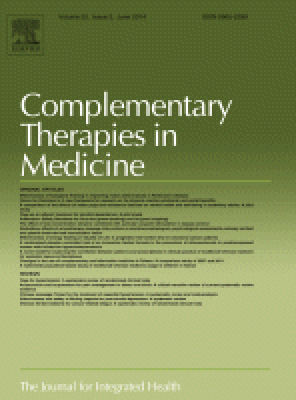
Experimental Study
The Licorice and Jujube formula is seen as commonly used and potentially effective for treating menopausal symptoms as per classical Chinese medicine.
Coyle ME, Liu J, Yang H, Wang K, Zhang AL, Guo X, Lu C, Xue CC
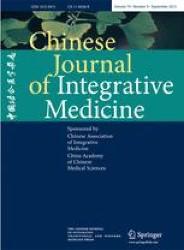
Systematic Review
Chinese herbal medicine presents beneficial effects in controlling disease activity and lowering glucocorticoid dosage in systemic lupus erythematosus patients.
Wang Y, Han M, Pedigo CE, Xie Z, Wang W, Liu J

Review Article
The autophagic-regulatory effects of Chinese herbal medicine are potentially therapeutic for allergic inflammatory diseases such as asthma.
Zhang Yun, Wang Xing, Zhang He, Tang Hongmei, Hu Hang, Wang Songping, Wong Vincent Kam Wai, Li Yuying, Deng Jun
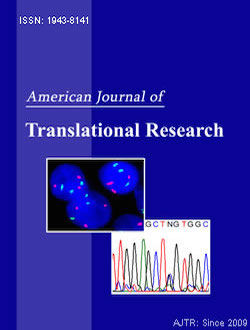
Randomised Controlled Trial
Using a combined treatment of modified Buzhong Yiqi decoction and Gangtai ointment improves wound healing and anal function for circumferential mixed hemorrhoid patients.
Lu B, Du J, Wu X

Clinical Study
Jia Wei Yu Ping Feng San, a traditional Chinese medicine, alleviates allergic asthma by reducing airway inflammation, mediated by suppressing group 2 innate lymphoid cells.
Xue L, Li C, Ge G, Zhang S, Tian L, Wang Y, Zhang H, Ma Z and Lu Z

Network Pharmacology
Honeysuckle extract could provoke anaphylaxis and specific ingredients in honeysuckle potentially trigger this reaction.
Feng Y, Qin G, Jing Z, Wang Y, Zhou Y

Systematic Review
The addition of CHM to clomiphene may improve pregnancy rates.
Zhou K, Zhang J, Xu L, Lim CED
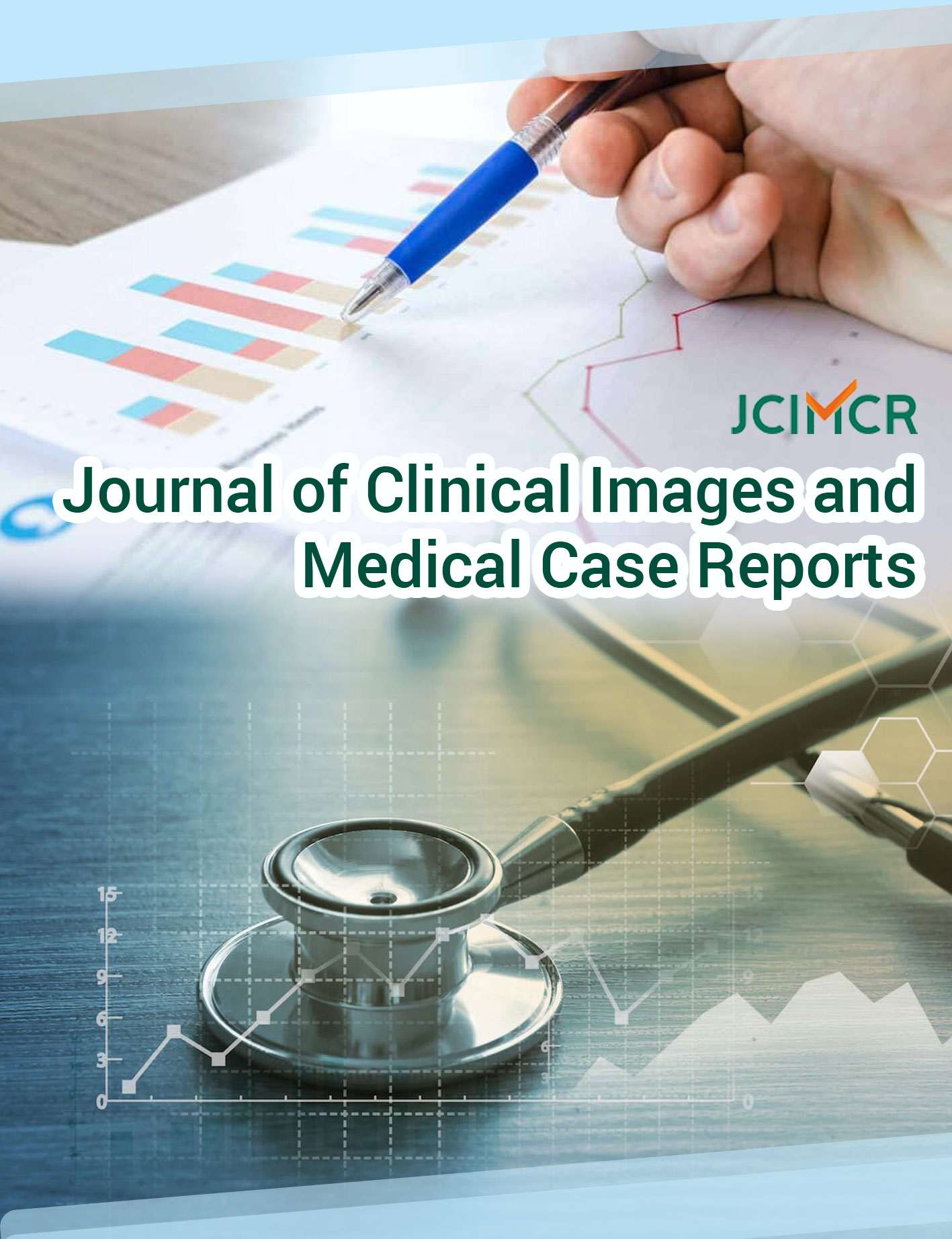
Systematic Review
Long Dan Xie Gan Decoction combined with valacyclovir appears to enhance the treatment of herpes zoster, improving pain intensity, and crust formation time.
Wang X, , Wu L, Hou Y, Ding S, Wang S, Zhang Y, Zhang G, , , , , ,

Systematic Review
Chinese herbal medicines or their components can potentially delay aging by regulating aging-related genes via different signaling pathways.
Wang L, Zuo X, Ouyang Z, Qiao P, Wang F
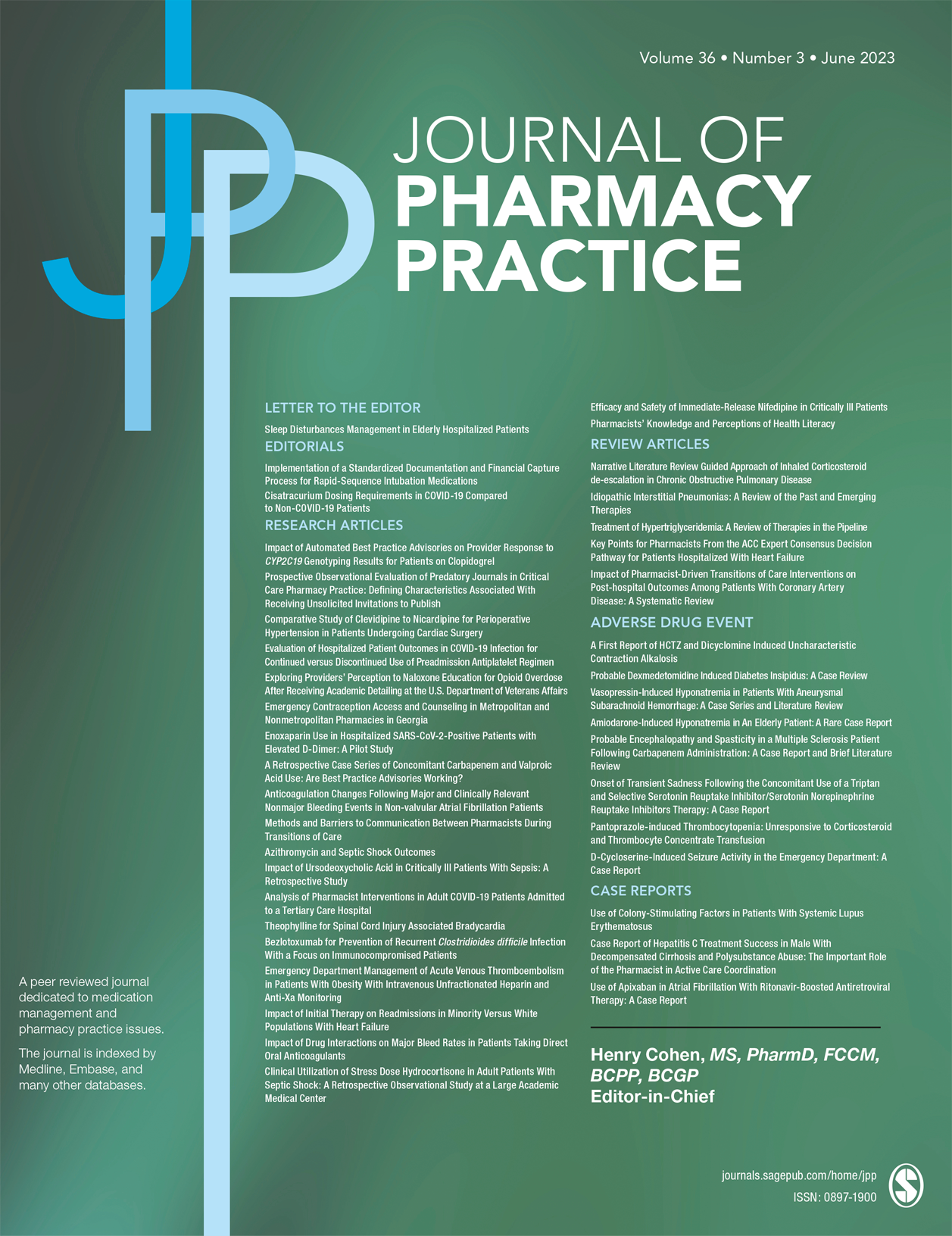
Systematic Review
Black cohosh indicated potential benefits in hormone regulation and endometrial thickness, alongside safety in short-term use.
Fan CW, Cieri-Hutcherson NE, Hutcherson TC

Systematic Review
Acupuncture, moxibustion and Chinese herbal medicines are the most commonly used complementary and alternative medicine in the treatment of female infertility.
Feng J, Wang J, Zhang Y, Zhang Y, Jia L, Zhang D, Zhang J, Han Y, Luo S

Study Protocol
Gynoclear™, a formulation of six herbs, could potentially reduce the severity and duration of pain and other symptoms associated with endometriosis.
Armour M, Al-Dabbas MA, Ee C, Smith CA, Ussher J, Arentz S, Lawson K, Abbott J

Review Article
Chinese herbal medicines may improve treatment for those with chronic kidney disease, due to their anti-inflammatory, antioxidative, anti-apoptotic, autophagy-mediated, and antifibrotic effects.
Zhao M, Yu Y, Wang R, Chang M, Ma S, Qu H, Zhang Y

Experimental Study
The Jian-Pi-Yi-Shen (JPYS) traditional Chinese medicine formula aids in the alleviation of renal dysfunction and fibrosis in chronic kidney disease (CKD) rats by combating inflammation and cellular apoptosis.
Zhou F, Zou X, Zhang J, Wang Z, Yang Y, Wang D

Systematic Review
Gui Zhi Decoction and associated formulas significantly improve the effectiveness of allergic rhinitis treatments when used alone or combined with Western medicine.
Yang S, Fu Q, Deng H, Wu J, Zhang Q, Wang L, Yao X

Systematic Review
Chinese herbal medicine seems to be as effective as flunarizine in reducing the frequency of migraines in adults.
Lyu S, Zhang CS, Guo X, Zhang AL, Sun J, Lu C, Xue CC, Luo X
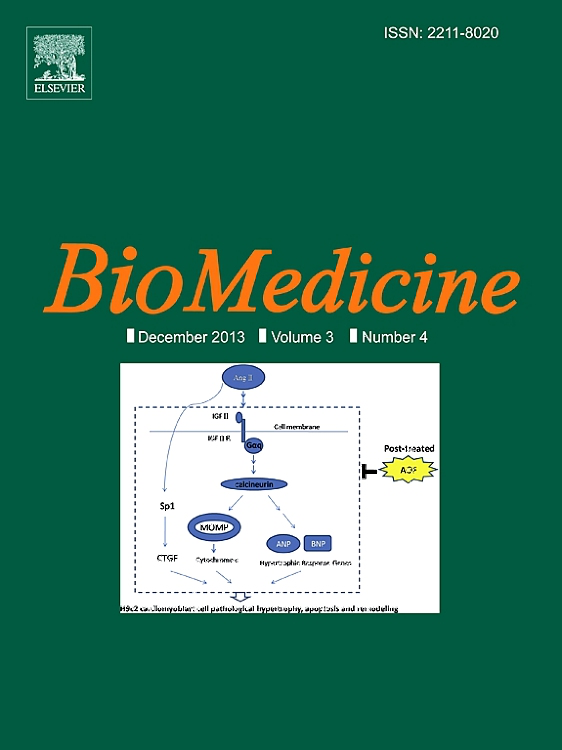
Randomised Controlled Trial
Consumption of jujube seed had a positive impact on improving the sleep quality of postmenopausal women and could be recommended as a useful herbal medication.
Mahmoudi R, Ansari S, Haghighizadeh MH, Maram NS, Montazeri S.

Systematic Review
In a meta-analysis of 14 trials with 1030 women, acupoint stimulation and Chinese Herbal Medicine were effective in improving menstrual cycles, perimenopausal symptoms, and sex hormone levels in comparison to Hormone Replacement Therapy.
Li Y, Xia G, Tan Y, Shuai J

Animal Study
Jian-Pi-Yi-Shen, a traditional Chinese medicine, helps treat anemia in chronic kidney disease by stimulating erythropoietin production and regulating iron recycling.
Wang F, Yu H, Huang S, Zheng L, Zheng P, Zhang S, Li S, Chen J

Review Article
Traditional Chinese medicine has unique advantages in relieving symptoms, shortening treatment time and reducing the development of severe viral pneumonia.
Xi S, Li Y, Yue L, Gong Y, Qian L, Liang T, Ye Y

Experimental Study
Jujube seed extract has been found to primarily reduce anxiety by regulating the GABAergic and serotonergic synapse pathways, specifically modulating GABRA1, HTR1A, and HTR2A.
Chen L, Zhang X, Hu C, Zhang Y, Zhang L, Kan J, Li B, Du J
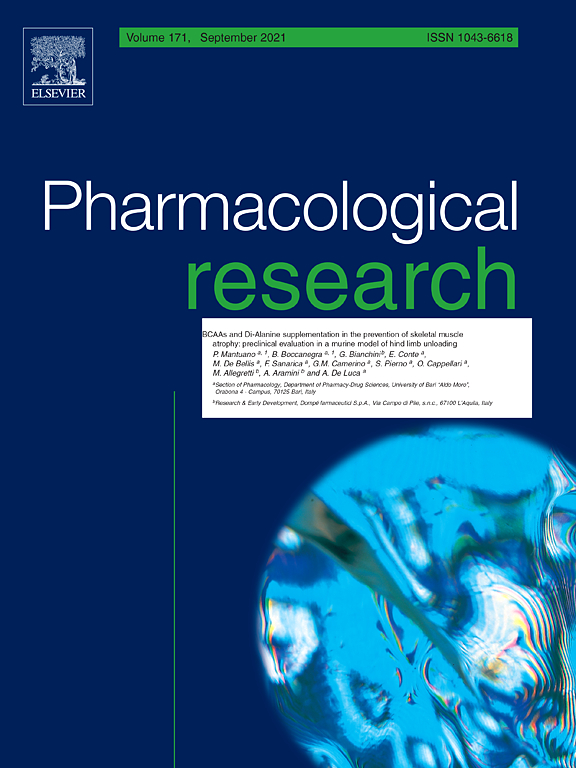
Systematic Review
Chinese herbal formulas could be used as potential candidates for treatment of COVID-19.
Xiong, X., Wang, P., Su, K., Cho, W. C., & Xing, Y.

Systematic Review
Du Huo Ji Sheng Decoction monotherapy or combined with antiosteoporosis drugs may have beneficial effects for postmenopausal osteoporosis.
Li J, Wang W, Feng G, Du J, Kang S, Li Z, Zhu W, Shang H
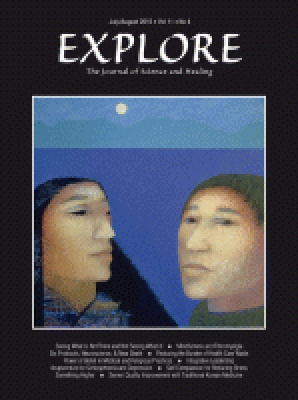
Systematic Review
Modified Tao-Hong Siwu Tang (MTST) appears more effective than non-steroidal anti-inflammatory drugs (NSAIDs), and a combination of Tao-Hong Siwu Tang with oral contraceptives (OCs) offers benefits over OCs alone for treating primary dysmenorrhea.
Ji HR, Park KS, Woo HL, Lee MJ, Yoon JG, Lee HJ, Hwang DS, Lee CH, Jang JB, Lee JM

Randomised Controlled Trial
Combining acupuncture via shu-stream acupoints with the Chinese herbal formulation Dang Gui Yin Zi presents a potentially effective treatment for Chronic Spontaneous Urticaria.
Qin Y, Guo J, Song P, Hou T, He Y, Han M, Yu Q, Lin W, Chen M, Su H

Review Article
Herbal medicines were shown to normalize female hormones, diminish male hormones, recover the estrous cycle, ameliorate insulin resistance, and improve lipid metabolism in PCOS.
Kwon Chan-Young, Cho Ik-Hyun, Park Kyoung Sun

Clinical Study
Chinese herbal medicine might improve lower urinary tract symptoms in patients with benign prostatic hyperplasia.
Yeh HF, Li TF, Tsai CH, Wu PW, Huang YH, Huang WJ, Chen FJ, Hwang SJ, Chen FP, Wu TP
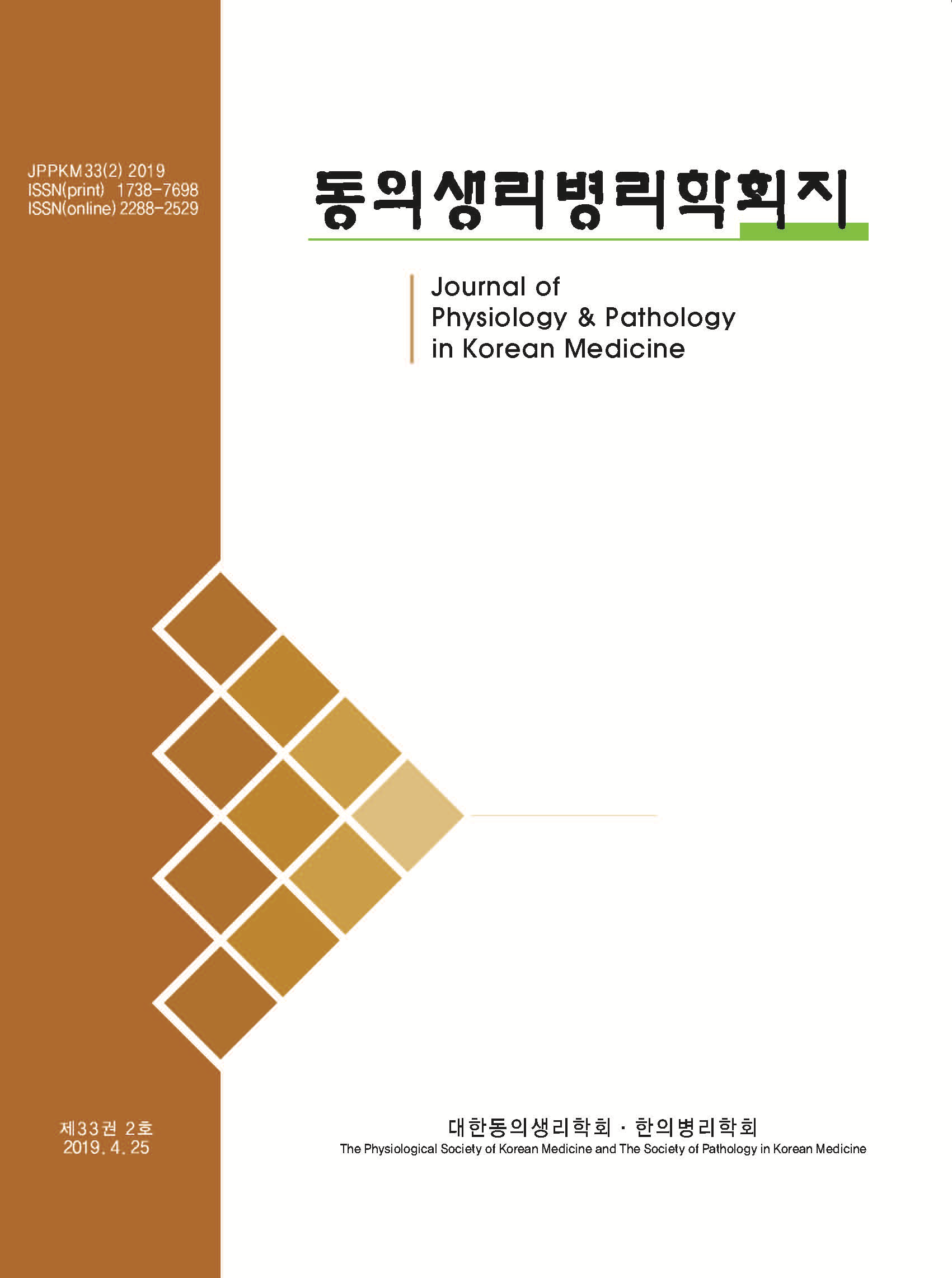
Systematic Review
Xiao Yao San and its modifications were effective for the improvement of general symptoms and fatigue severity in chronic fatigue syndrome post-treatment.
Kim J, Song J, Nam D

Systematic Review
Compared with conventional Western medicine alone, Chinese herbal medicine plus antihypertensive drugs might be effective in reducing blood pressure levels and improving vascular endothelial function in patients with hypertension.
Ren W, Wang M, Liao J, Li L, Yang D, Yao R, Huang L

Cohort Study
Adding Chinese herbal medicines to conventional therapy could decrease subsequent stroke risk for atrial fibrillation patients.
Zheng LC, Livneh H, Chen WJ, Lin MC, Lu MC, Yeh CC, Tsai TY
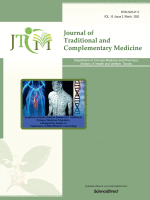
Cohort Study
Chinese herbal medicine usage in children with asthma can reduce their risk of hospitalization.
Lo PC, Lin SK, Lai JN
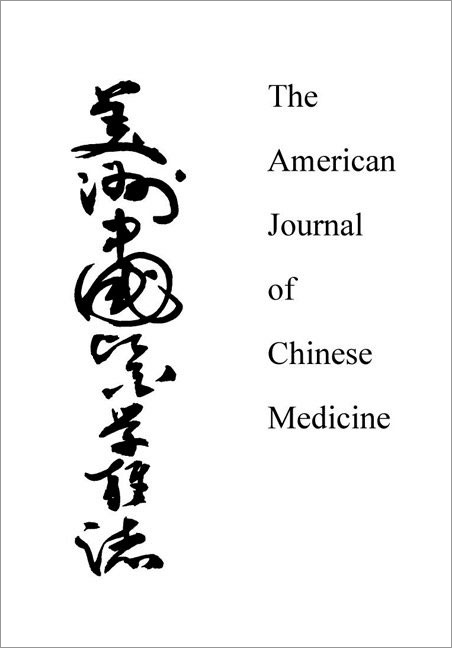
Systematic Review
Current evidence suggests that Chinese herbal medicine is an effective and safe treatment for spinal cord injury and could be treated as a complementary and alternative option with few side effects.
Zheng Y, Qi S, Wu F, Hu J, Zhong R, Hua C, Jiang D, Quan R

Animal Study
A traditional Chinese prescription, Yu Ping Feng San, significantly mitigates symptoms in cases of asthma recurrence, outperforming commonly prescribed asthma medications.
Bao K, Yuan W, Zhou Y, Chen Y, Yu X, Wang X, Jia Z, Yu X, Wang X, Yao L, Wang S, Xu Y, Zhang Y, Zheng J and Hong M

Cohort Study
Traditional Chinese Medicine when combined with Western methods, could improve survival rates in patients with colorectal cancer.
Yeh MH, Chiu HP, Wu MC, Koo M, Lin NW, Liao KK, Yeh CC, Li TM

Systematic Review
Danggui Shaoyao San provides clinically important reductions in symptoms of Alzheimer's disease and vascular dementia and can be a promising anti-dementia drug candidate.
Kim Y, Cho SH.
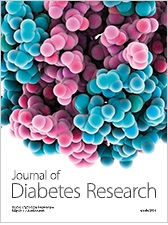
Review Article
Traditional Chinese medicine, especially Zuo Gui Wan, red raspberry leaves, and Orthosiphon stamineus, seems to control gestational diabetes effectively without reported toxicity.
Xu YXZ, Xi S, Qian X

Network Pharmacology
Guizhi Fuling Wan, a traditional herbal formula, can improve peripheral blood flow in menopausal hot flush sufferers, despite not changing the frequency or severity of the flushes.
Li , Hung , Li , Yang

Review Article
Chrysanthemum, rich in unique chemical compounds, offers significant health benefits such as stress relief, cardio protection, immunity boost, improved eye health, and osteoporosis risk reduction.
SHAHRAJABIAN, M. H., SUN, W., ZANDI, P., CHENG, Q.

We showed that Angelica sinensis is not that stimulatory in breast cancer both in vitro and in vivo, though Angelica sinensis should still be used with caution in estrogen receptor-positive breast cancer patients.
Yue Grace Gar-Lee, Wong Lok-Sze, Leung Hoi-Wing, Gao Si, Tsang Julia Yuen-Shan, Lin Zhi-Xiu, Law Bonita Ka-Bo, Tse Gary Man-Kit, Lau Clara Bik-San
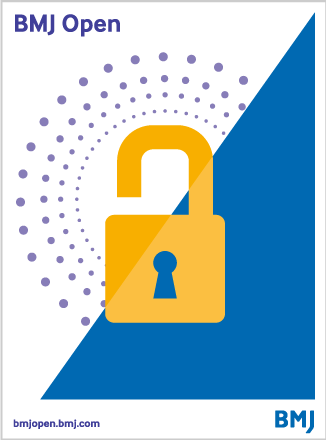
Systematic Review
Chinese herbal medicine may be effective and safe for treating diabetic kidney disease, although evidence quality varies.
Zhang L, Yang L, Shergis J, Zhang L, Zhang AL, Guo X, Qin X, Johnson D, Liu X, Lu C, Xue CC, Mao W

Systematic Review
Chinese herbal medicine in conjunction with conventional western medicine proved effective in improving symptoms in Parkinson's disease patients.
Jin XC, Zhang L, Wang Y, Cai HB, Bao XJ, Jin YY, Zheng GQ

Systematic Review
Existing trials show a positive impact of Xuefu Zhuyu decoction (XZD), a traditional herbal formula that treats primary dysmenorrhea.
Leem J, Jo J, Kwon CY, Lee H, Park KS, Lee JM

Animal Study
Gan Mai Da Zao decoction has shown comparable anxiolytic effects to Diazepam and Buspirone in mice, possibly regulated by serotonin and gamma-aminobutyric acid receptors.
Chen HS, Gu LJ, Yang YX, Guo JY
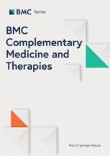
Experimental Study
The Jian-Pi-Yi-Shen Formula (JPYSF) has been found to significantly improve chronic kidney disease, potentially through the modulation of the mitochondrial quality control network.
Liu X, Chen J, Liu X, Wang D, Zheng P, Qi A, Yi T, Li S

Systematic Review
Berberine's potential similarity to metformin in addressing glycolipid metabolism and insulin sensitivity, and exploring promising combinations involving berberine, metformin, and cyproterone acetate for treating polycystic ovary syndrome with insulin resistance.
Meng-Fei Li, Xiao-Meng Zhou, Xue-Lian Li

Systematic Review
Chinese herbal medicine improved depression symptoms and severity compared to antidepressants for postpartum depression.
Yang L, Di YM, Shergis JL, Li Y, Zhang AL, Lu C, Guo X, Xue CC

Review Article
Shu Di Huang, traditionally used in Chinese medicine, may effectively treat attention deficit hyperactivity disorder by rectifying neurodevelopmental abnormalities, neuronal apoptosis, and energy metabolism failures.
Yuan H, Yang M, Han X, Ni X

Experimental Study
Danggui Buxue Tang (DBT) supplement helps reduce running times and control exercise-induced hepcidin levels, boosting iron levels and speeding up iron balance during recovery.
Chang CW, Chen CY, Yen CC, Wu YT, Hsu MC
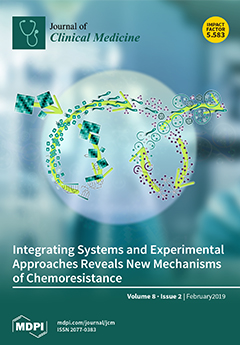
Traditional Chinese Medicine, particularly Jia Wei Xiao Yao San and Xiang Fu, is widely utilized in Taiwan for managing Polycystic ovary syndrome symptoms.
Liao WT, Chiang JH, Li CJ, Lee MT, Su CC, Yen HR

Animal Study
The herbal formula B210 can alleviate snoring in aged rats by modifying the activities and breathing time of relevant nerves.
Chung KT, Hsu CH, Lin CL, Wang SE, Wu CH
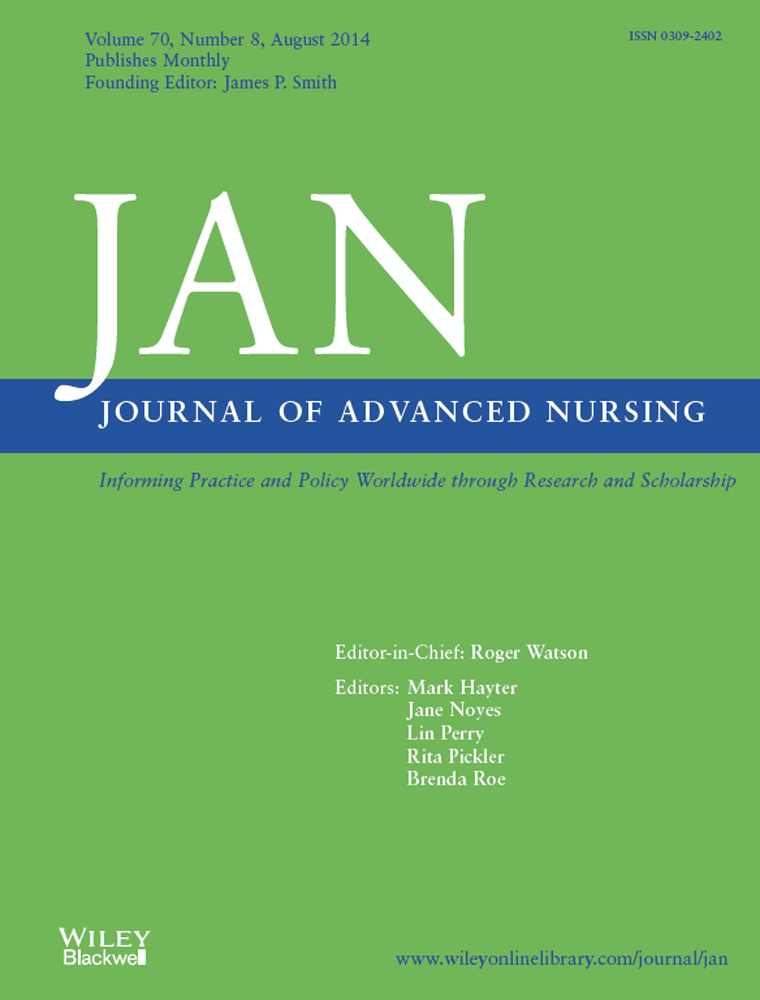
Systematic Review
Skin-patches of Chinese herbal medicine combined with Western medicine seemed to be more effective than Western medicine alone to reduce the pain scores of patients with acute gouty arthritis.
Wang HR, Fu Q, Liu Z, Li ML, Zhai SQ

Theoretical Article
The Chinese herbal formula Jian-Pi-Yi-Shen can enhance the immune system, treat anemia, and regulate erythropoietin and pro-inflammatory cytokines expression.
Chen J, Gong AGW, Liu X, Li Z, Qi A, Dong TTX, Yi T, Tsim KWK, Li S

Systematic Review
Ma Huang Tang may lower the duration of fever when it is used alone or in combination with neuraminidase inhibitors and may be a well-tolerated treatment.
Yoshino, T., Arita, R., Horiba, Y. et al
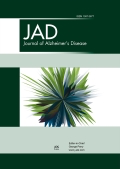
Systematic Review
Chinese herbal medicine as adjuvant therapy exerted an additive anti-vascular dementia benefit on Mini-Mental State Examination (MMSE) scores.
Xu, Qing-qing et al

Meta-Analysis
The herbal formula Modified Bu Zhong Yi Qi Tang significantly improves functional constipation symptoms with fewer adverse events.
Gong H, Qin F, He H

Experimental Study
The Jian-Pi-Yi-Shen formula appears to slow down chronic kidney disease progression by inhibiting inflammation via the nuclear factor-kappa B signaling pathway.
Lu J, Liu X, Liao Y, Wang D, Chen J, Li S
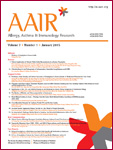
Systematic Review
Chinese herbal medicine tends to improve the quality of life of patients suffering from allergic rhinitis.
Zhang X, Lan F, Zhang Y, Zhang L

Systematic Review
Yu Ping Feng San, a Chinese herbal medicine, combined with pharmacotherapy could be effective for treating allergic rhinitis in adults.
Luo Q, Zhang CS, Yang L, Zhang AL, Guo X, Xue CC, Lu C
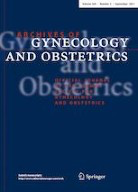
Systematic Review
Results support Wenjing decoction (a traditional Chinese medicine) clinical use in treating primary dysmenorrhea.
Gao L, Jia C, Zhang H, Ma C

Systematic Review
There is a significant effect of Chinese herbal medicine for improving Expanded Disability Status Score, annual relapse frequency and the total clinical efficacy rate for multiple sclerosis compared with western conventional treatment.
Liang Song, Qi-hui Zhou, Hui-lin Wang, Feng-jiao Liao, Liang Hua, Hong-feng Zhang, Li-bo Huang, Yan Lin, Guo-qing Zheng
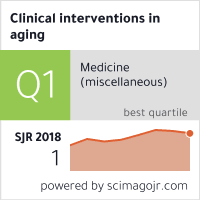
Systematic Review
The Chinese herbal formula Erxian decoction appears to be more effective than basic supplements in treating osteoporosis.
Li JY, Jia YS, Chai LM, Mu XH, Ma S, Xu L, Wei X
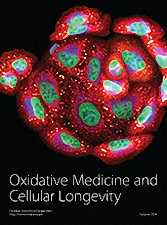
Experimental Study
Angelica Sinensis polysaccharide treatment has been found to effectively alleviate anaemia of chronic disease in rats by inhibiting inflammatory pathways and mobilizing iron.
Wang K, Wu J, Cheng F, Huang X, Zeng F, Zhang Y

Systematic Review
Bu Zhong Yi Qi Tang treatment improves clinical symptoms, exercise capacity, lung function and quality of life for patients with stable chronic obstructive pulmonary disease.
Yuanbin Chen, Johannah Linda Shergis, Lei Wu, Xuhua Yu, Qigang Zeng, Yinji Xu, Xinfeng Guo, Anthony Lin Zhang, Charlie Changli Xue, Lin Lin

Randomised Controlled Trial
The combination of traditional Chinese medicine and endocrine therapy may be more effective in slowing prostate cancer progression and increasing patients' survival time.
Cao H, Mu Y, Li X, Wang Y, Chen S, Liu J
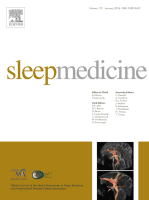
Systematic Review
Chinese herbal medicine was superior to placebo and benzodiazepine drugs and was superior to benzodiazepines and psychotherapy alone as an adjunct therapy in terms of subjective sleep quality and quantity and safety.
Xiaojia Ni, Johannah Linda Shergis, Xinfeng Guo, Anthony Lin Zhang, Yan Li, Chuanjian Lu, Charlie Changli Xue

Systematic Review
Chinese herbal medicine may provide an effective treatment during the acute phase of UTI and when given prophylactically to prevent recurrence in the six months following treatment.
Flower A, Wang LQ, Lewith G, Liu JP, Li Q.

Systematic Review
Our review suggests that management of female infertility with Chinese herbal medicine can improve pregnancy rates 2-fold within a 3-6 month period compared with Western medical fertility drug therapy.
Ried K.

Systematic Review
TCM pattern-based treatments for depression frequently use Xiao Yao and Chai Hu Shu Gan decoctions, with Bai Shao and Chai Hu herbs common across different TCM patterns.
Yeung WF, Chung KF, Ng KY, Yu YM, Zhang SP, Ng BFL, Ziea ETC
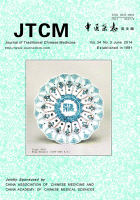
Systematic Review
Chinese herbal medicine combined with western medicine used to treat subacute thyroiditis may improve clinical symptoms and signs, reduce relapse rate, and alleviate the side effects of hormones.
Hui Luo, Meng Lü, Xiaohua Pei, Zhongyuan Xia

Systematic Review
Guizhi Fuling formula shows potential in treating uterine fibroids.
Chen NN, Han M, Yang H, Yang GY, Wang YY, Wu XK, Liu JP
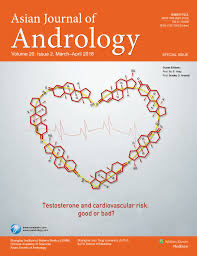
Systematic Review
Chinese herbal medicine appears to be more effective than Western medication in improving quality of life and reducing prostate volume in benign prostatic hyperplasia patients.
Ma CH, Lin WL, Lui SL, Cai XY, Wong VT, Ziea E, Zhang ZJ

Systematic Review
Chinese herbal medicine may help in functional recovery in gout patients, while safely controlling serum uric acid level and inflammation severity.
Li XX, Han M, Wang YY, Liu JP

Review Article
Chinese herbal medicine as an adjunct therapy can potentially alleviate symptoms of Parkinson's Disease and is typically well-tolerated by patients.
Wang Y, Xie CL, Lu L, Fu DL, Zheng GQ

Systematic Review
Acupuncture shows potential for reducing dysmenorrhoea scores in endometriosis patients.
Zhu X, Hamilton KD, McNicol ED

Cohort Study
Gui-zhi-fu-ling-wan, a traditional Chinese medicine, can effectively alleviate hot flashes in young patients in a safe manner.
Cho KH, Kim YS, Jung WS, Kim TH

Experimental Study
Angelica sinensis polysaccharide (ASP) efficiently stimulates erythropoietin secretion and suppresses the liver's hepcidin expression, potentially aiding in treatments of hepcidin-induced diseases.
Wang KP, Zeng F, Liu JY, Guo D, Zhang Y

Randomised Controlled Trial
Gui-zhi-fu-ling-wan, a herbal therapy, depicts to be a viable alternative to hormone replacement therapy for treating hot flashes in post-menopausal women experiencing coldness in lower extremities.
Ushiroyama T, Ikeda A, Sakuma K, Ueki M
Executive Summary
Write an executive summary in the form of a blog article on the topic of "Research into Chinese medicine treatment for Chinese Herbal Medicine" summarising the research below and using language that can be easily understood by patients and avoiding medical jargon using a professional and caring tone of voice.
Write an executive summary in the form of a blog article on the topic of "Researched Chinese medicine treatments for Chinese Herbal Medicine" summarising the research below in an objective and easy to understand way, and using language that can be easily understood by patients. Group the article into Chinese medicine treatments first, followed by nutrition and other treatments. Avoid using medical jargon and use a professional and caring tone of voice.
Write me a concise but easy to understand executive summary on the topic of "Chinese medicine treatments for Chinese Herbal Medicine" based on the following research that I will give you. Your summary should be 2 paragraphs long in Australian English spelling and include references to the studies.
A Network Pharmacology published in 2024 in the journal Medicine found that The Danggui Sini Decoction, a Traditional Chinese Medicine, may prevent myocardial infarction by positively influencing cell proliferation, inflammatory responses, and aging processes. The researchers utilized network pharmacology and molecular docking to uncover the main components and targets of Danggui Sini Decoction (DSD) in the treatment of myocardial infarction. They examined myocardial infarction-related genes using the Genecards database and screened the active ingredients of DSD based on criteria relating to oral bioavailability and drug likeness. To understand the relationship between these components and their potential targets, the researchers generated a protein-protein interaction network diagram using the STRING database. Findings of the investigation led to the identification of 120 primary active ingredients and 561 putative active target genes. The main therapeutic targets were a number of genes associated with processes such as inflammation and cell proliferation. Furthermore, the researchers conducted gene ontology and Kyoto encyclopedia of gene and genome analyses to understand the pathways that DSD acts upon in treating myocardial infarction. The results indicated that DSD treatment involves the positive regulation of certain cellular cascades signifying positive impact on cell proliferation, inflammatory responses, aging, and other biological processes. Molecular docking results indicate potential interactions between DSD and certain genes, suggesting its role in treatment.
A Systematic Review published in 2024 in the journal Journal of Ethnopharmacology found that Guizhi Fuling Wan, a traditional Chinese herbal formula, can inhibit endometriosis growth and enhance the effects of western medicines used to treat the condition. In the methodology, a bibliographic assessment of publications on "Guizhi Fuling Wan" and "endometriosis" indexed in international and chinese databases was conducted. Out of these, five pre-clinical studies and thirteen clinical were selected. Thereafter, targeted molecules of each herb in the formula were extracted from a Traditional Chinese Medicine Systems Pharmacology Database and compared with endometriosis-related genes from DisGeNET. To expose potential therapeutic mechanisms of Guizhi Fuling Wan, pathway and gene ontology analyses were performed using David Bioinformatics Resources. In the results discussion, it was found that both pre-clinical and clinical studies suggested that Guizhi Fuling Wan can inhibit the growth of endometriotic lesions by modulating immunity, apoptosis-regulating molecules, and angiogenesis-associated factors, while also enhancing the effects of western medicines for endometriosis. The formula likely achieves this through its impact on key pathways involved in diabetes complications, Kaposi sarcoma-associated herpesvirus infection, human cytomegalovirus infection, and atherosclerosis, which all regulate inflammation, angiogenesis, and apoptosis. The review also notes a strong connection between endometriosis and abnormal inflammatory, angiogenic, and apoptotic activities.
A Experimental Study published in 2023 in the journal Aging found that Jian-Pi-Yi-Shen formula has shown potential in delaying kidney deterioration in chronic kidney disease by rejuvenating the process of creating nicotinamide adenine dinucleotide. The study was conducted utilizing an adenine-diet feeding model for inducing chronic kidney disease in a breed of mice. For 4 weeks, these mice were given Jian-Pi-Yi-Shen formula orally. Human proximal tubular epithelial cells were stimulated with a growth factor, with or without the formula. Assessments were made of renal function via serum creatinine and blood urea nitrogen levels, with renal histopathological changes evaluated through specific staining techniques. Further, cell viability and NAD+ concentrations were monitored with assay kits. The Jian-Pi-Yi-Shen formula did not only help in the improvement of renal function and reduction of pathological injury but it also inhibited renal fibrosis in the mice with chronic kidney disease. Moreover, the same formula was found to reverse fibrotic responses induced by a growth factor in human proximal tubular epithelial cells. Importantly, the formula was observed to recover the decreased NAD+ content in the chronic kidney disease mice and the human cells, bringing about the restoration of the expression of vital enzymes in the NAD+ synthesis process.
A Experimental Study published in 2023 in the journal Biomedicine & Pharmacotherapy found that Fructus Lycii and Salvia miltiorrhiza Bunge extract (FSE) shows potential as a clinical treatment for retinitis pigmentosa by inhibiting photoreceptor cell death following oxidative stress. The study utilized hydrogen peroxide to induce oxidative stress in 661 W cells, which were examined with flow cytometry and an enzyme-linked immunosorbent assay. The impact of this oxidative stress on the cells’ mitochondria was observed using an electron microscope to understand the nature of cell death. The study also analyzed the compensatory effect of the Fructus Lycii and Salvia miltiorrhiza Bunge extract on the retinal structure and function of rd10 mice using histopathological examination, fundus photographs, and electroretinography. Protein levels were evaluated using Western blot assays, specifically targeting proteins including Tumor Protein p53, Solute Carrier Family 7 Member 11, Glutathione peroxidase 4, Arachidonate-12-Lipoxygenase, and Dipeptidyl peptidase 4. The results showed that hydrogen peroxide-induced oxidative stress in 661 W cells increased oxidative stress products and certain protein expressions, while decreasing others. Notably, the activation of Glutathione peroxidase 4 did not lessen reactive oxygen species generation and had little impact on cell death. The research discovered that both Ferrostatin-1 and the extract could lessen reactive oxygen species generation and inhibit cell death of photoreceptors in retinitis pigmentosa, achieving this by inhibiting the expression of one protein and increasing the expression of two others.
A Meta-Analysis published in 2023 in the journal PLOS One found that Oral Chinese herbal medicines appear to enhance recovery when used as supplements to conventional treatment after sinus surgery. This study systematically reviews and conducts a meta-analysis of randomised controlled trials, gathered from a wide range of nine databases and clinical trial registries, to evaluate the impact of orally administered Chinese herbal medicines (CHMs) on the post-surgical management of chronic rhinosinusitis. The participants across these trials included adults and children diagnosed with sinusitis or rhinosinusitis, who had undergone surgery. The added interventions were orally consumed CHMs post-surgery in tandem with traditional post-surgery management. The control groups received only the conventional management without CHMs. The results from a variety of measures including Sino-Nasal Outcome Test, visual analogue scales, various computed tomography scores, and mucociliary transport rates showed greater improvements in the group consuming oral CHMs in addition to the post-surgery treatment, versus the control. Particularly, enhancements were noticeable at follow-up stages after the end of treatment. However, the reporting of adverse events was incomplete across the trials. The study also found that the quality of the studies and their reporting varied, with many studies not being blinded and some results showing substantial heterogeneity.
A Review Article published in 2023 in the journal Chinese Herbal Medicines found that Chinese herbal medicines (CHMs) possess multiple advantages, including multiple targets, pathways, and low toxicity, for the treatment of prostate cancer. The research team undertook an in-depth review of experimental research and clinical practices related to the use of CHMs for prostate cancer treatment, with the data being sourced from PubMed, Embase, and Web of Science. The focus of the review was on recent studies published within the last five years. The research identified five CHM formulas and six single CHM extracts, along with 12 CHM-derived compounds. The research findings demonstrated that CHMs induced apoptosis, autophagy, and cell cycle arrest in prostate cancer cells, and concurrently suppressed angiogenesis, proliferation, and cell migration. The CHMs also displayed efficacy in overturning drug resistance and in enhancing anti-tumor immunity. The modes of action were identified as the phosphatidylinositol 3-kinase/protein kinase-B/mammalian target of rapamycin, androgen receptor, epidermal growth factor receptor, and Wnt/beta-catenin signaling pathways which are known to play key roles in the development of prostate cancer. Additionally, the researchers discussed the benefits of CHMs in treating hormone-sensitive and castration-resistant prostate cancer.
A Systematic Review published in 2023 in the journal Frontiers in Endocrinology found that Jia Wei Xiao Yao San could potentially enhance the effectiveness of antithyroid drugs in treating hyperthyroidism especially in symptom relief and side effect reduction. To evaluate this claim, a systematic and comprehensive dive into eight databases and three trial registries up until May 2023 was performed. From this, Randomized Controlled Trials (RCTs) were earmarked and subjected to further analysis using the Review Manager software application (RevMan 5.4) and Stata 14.0. Assessments of bias in these studies were conducted using the Cochrane risk of bias tool 1.0, while the GRADE tool was implemented for overall quality assessment. In addition, any case reports utilizing JWXYS in singular use and relevant pharmacological studies were summarized for further understanding. This investigation involved 13 RCTs with a total of 979 participants. It was found that, when compared with standalone antithyroid drug treatment, the combination of JWXYS and antithyroid drugs resulted in improved control of thyroid hormones, better efficacy in treating traditional Chinese medicinal syndrome, lesser incidence of goiter, fewer side effects, and lower levels of thyroid stimulating hormone receptor antibodies. Furthermore, dosage reduction of antithyroid drugs when used in combination with JWXYS also led to fewer side effects. However, when compared to antithyroid drugs treatment in a single trial, JWXYS showed mixed results indicating it is not recommended for use as a standalone treatment except in patients intolerant to antithyroid drugs. The evaluation of three case reports highlighted that patients may opt for traditional Chinese medicine only as an alternative due to severe side effects and recurrent relapses. Three other pharmacological studies showed the potential of JWXYS in restoring Th17/Treg balance, regulating thyroid cell growth, and alleviating oxidative stress in liver.
A Animal Study published in 2023 in the journal Journal of Functional Foods found that Fermented Pueraria lobata root extract and Glycine max extract showed estrogen-like activities, reducing depressive symptoms in menopausal mice but not increasing female cancer risks. The researchers focused on Pueraria lobata roots and Glycine max (also known as soybeans) extracts, which are rich in isoflavones but often limited in practical use due to their high molecular weight and low bioavailability. The researchers chose to ferment these extracts with Lactiplantibacillus plantarum strains which are known to convert glycosides to aglycones, potentially enhancing the beneficial effects of the isoflavones. Specifically, the study was conducted using ovariectomized mice. The research found that both fermented Pueraria lobata root extract and Glycine max extract exhibited estrogen-like activities. More intriguingly, the fermentation process increased the expression of estrogen receptor beta, suggesting that these extracts may not increase the risk of various female cancers—a common side effect of hormone replacement therapy—as was previously believed. Also, the ingestion of these extracts not only increased the estrogen receptor beta in the mice but also upregulated the expression of the brain-derived neurotrophic factor in the hippocampal region of the brain, thus improving depressive symptoms. The highest expression was observed in the group given a mixture of both extracts.
A Experimental Study published in 2023 in the journal Journal of Ethnopharmacology found that The herbal decoction Jian-Pi-Yi-Shen reduces symptoms of chronic kidney disease and anaemia by improving iron metabolism and inhibiting the JAK2-STAT3 signaling pathway. Methodology used included an analysis of network pharmacology, chemical profiling, and in vivo experiments on the effect of Jian-Pi-Yi-Shen (JPYS) on renal anemia and chronic kidney disease (CKD). The active compounds in JPYS were detected in in vivo experiment, and their potential targets were predicted by network pharmacology. An animal model of CKD-related anemia was developed using adenine-feeding for further analysis. The estimation of renal injury was conducted using blood tests, histopathological examinations, and fibrosis degree assessment while the levels of JAK2, STAT3 and iron metabolism-related factors were measured through various techniques. Discussion of the results reveals that 164 active ingredients, including prototypes and metabolites in JPYS, were discovered and 21 core targets were identified. Many of these core targets were associated with the JAK2-STAT3 signaling pathways. Experimental results demonstrated that JPYS treatment significantly improved hematological parameters and iron metabolism in CKD rats, decreased certain indicators of renal damage, and suppressed the expression of JAK2 and STAT3.
A Experimental Study published in 2023 in the journal Biomedicine & Pharmacotherapy found that Zhangyanming Tablets show potential as a protective agent for retinal function in early-stage, genetically-caused blindness in mice, possibly due to their antioxidant and anti-/pro-apoptotic properties. Eighty mice with Retinitis Pigmentosa (RP) were divided into two groups, with one group receiving Zhangyanming Tablets (ZYMT) and a control group getting distilled water. After a period of 7 and 14 days, the researchers conducted tests through electroretinogram, fundus photography, and histological examination to assess the retinal function and structure of the subjects. They furthered the study using TUNEL, immunofluorescence and qPCR to evaluate cell apoptosis and the expressions of particular genes. The ZYMT-treated mice displayed a notable enhancement in retinal reactions and overall preservation of retinal structure when compared to the control group. Particularly noticeable were increases in retinal thickness and cell count, alongside a significantly lowered rate of cell death. A comprehensive follow-up shows the altered expressions of several genes in the retina following the application of ZYMT. These results, combined, suggest a key role of ZYMT in mitigating the effects of RP especially in early stages.
A Review Article published in 2023 in the journal Chinese Herbal Medicines found that Chinese herbal medicines could potentially relieve ulcerative colitis by moderating the gut microbiota and intestinal immunity loop. The study emphasizes on the possible use of Chinese herbal medicines, which include single herbs, herbal formulas and derived constituents, in treating ulcerative colitis (UC), a recurring inflammatory bowel disease. With a focus on how these medicines interact with and modify the gut microbiota, the mechanism involves regulating the intestinal homeostasis to counter UC. It deals with balancing microbial dysbiosis, or the imbalance of microbes in the body, and abnormal gut immunity, two key initiators of inflammatory responses in UC. The paper reviews several clinical trials which have been conducted, all exhibiting the effectiveness of Chinese herbal medicines on patients diagnosed with UC. In the trials, these derived substances have shown a protective effect against UC, offering the potential possibility of them being explored as conventional methods of UC treatments in the future. Not every trial has resulted in absolute success, but the overall results are promising and indicate a robust potential direction for UC treatment science.
A Systematic Review published in 2023 in the journal Medicine found that Combining Guipi Decoction (GPD) with western medicine holds promise for improving chronic heart failure treatment by enhancing effectiveness and cardiac measures Guipi decoction (GPD) for chronic heart failure (CHF), revealed that when combined with western medicine it improved clinical effectiveness, echocardiographic measures, and reduced CHF biomarker levels, suggesting potential benefits for cardiac function and CHF progression.
A Systematic Review published in 2023 in the journal Medicine found that Meta-Analysis highlights promising role of Guipi Decoction as adjuvant therapy for chronic heart failure Gui Pi decoction, when combined with Western medicine, significantly improved the clinical effective rate and cardiac function indicators. The biomarkers associated with chronic heart failure were also reduced. This suggests Gui Pi decoction could be a promising adjuvant therapy for chronic heart failure.
A Randomised Controlled Trial published in 2023 in the journal Journal of Food and Dairy Sciences found that Cinnamon, ginger, and mint enhanced chocolates effectively reduce menstrual pain and improve blood iron levels without increasing body weight or negatively affecting cholesterol. The methodology of the study involved a sample of 48 female student volunteers, aged 18-25, from Mansoura University who were experiencing dysmenorrhea. These volunteers were divided into eight groups of six and each group was given a different type of chocolate: regular chocolate, chocolate without herbal powder, chocolate with cinnamon powder, chocolate with cinnamon oil, chocolate with ginger powder, chocolate with ginger oil, chocolate with mint powder, and chocolate with mint oil. Discussion of the results demonstrated that the consumption of chocolates supplemented with cinnamon, ginger, and mint powders and their respective essential oils led to a significant improvement in participants' hemoglobin scores compared to a control group which consumed normal chocolate. Furthermore, it was found that these chocolates had a positive influence on serum total cholesterol, triglycerides, high-density lipoprotein, and low-density lipoprotein scores. Importantly, chocolate consumption did not lead to an increase in the participants' body mass index, proving that these chocolate variants could reduce menstrual pain and lift blood iron levels without instigating weight gain or having adverse effects on cholesterol levels.
A Meta-Analysis published in 2023 in the journal Quality Assurance and Safety of Crops & Foods found that The traditional Chinese herbal medicine Shaoyao Gancao Tang (SG-Tang) may be an effective and safe alternative treatment to relieve Restless Leg Syndrome. The methodology used for this study involved a systematic review and meta-analysis of Randomized Clinical Trials (RCTs) assessing the efficacy and safety of SG-Tang treatment for Restless Leg Syndrome. Databases such as the Cochrane Library, PubMed, EMBASE, Web of Science, Chinese Biological Medicine Database, China National Knowledge Infrastructure, Wanfang Database, and VIP Information Database were searched. The primary and secondary outcome measurements looked at were the total effective rate, the International Restless Legs Syndrome Study Group Rating Scale for Severity of Restless Legs Syndrome, the Pittsburgh Sleep Quality Index, and the incidence of adverse events. The results of the study indicated that SG-Tang treatment led to significant improvements compared to conventional medications; it increased the total effective rate and lifted scores on the Severity of Restless Legs Syndrome and Sleep Quality Indices, while also lessening the incidence of adverse events. However, these conclusions should be interpreted with caution due to the limited data and the methodological quality of the included studies.
A Review Article published in 2022 in the journal Medicina found that Chaihu Shugan powder, a traditional Chinese medicine, presents potential advantages in treating post-stroke depression, showing potential as an alternative to conventional antidepressants. The research approach merges both clinical and experimental studies in exploring the effectiveness of Chaihu Shugan powder, a classic traditional Chinese medicine formula, in treating post-stroke depression. Starting from current clinical cases, the study thoroughly investigates the mechanisms of action and drug and chemical effects of this treatment. The attention is given to the performance of Chaihu Shuan powder in counteracting post-stroke depression, focusing on patients who have not shown an adequate response or experienced adverse reactions to commonly used antidepressants like selective serotonin reuptake inhibitors and serotonin-norepinephrine reuptake inhibitors. The results indicate outstanding benefits of the Chinese herbal treatment for post-stroke depression. It shows that Chaihu Shugan powder could potentially offer a significant contribution to incapacity and recovery of cognitive dysfunction and motor function after a stroke. It also helps to prominently lessen the probability of neurovascular events coming back. This highlights the values of Chaihu Shugan powder that serves as an effective and promising alternative to the standard drug treatments for post-stroke depression.
A Systematic Review published in 2022 in the journal PLOS One found that Chinese Herbal Medicines may help with chronic sinusitis and acute rhinosinusitis symptoms with LDXGT and modified CEZS working well, especially for CRS. The review assessed the effectiveness of Chinese herbal medicines (CHMs) in treating chronic rhinosinusitis (CRS) and acute rhinosinusitis (ARS). It found that certain CHMs showed potential in improving CRS symptoms and measures related to sinus health, with the best evidence for LDXGT and modified CEZS formulas. However, more blinded randomized controlled trials are needed to confirm these findings.
A Network Pharmacology published in 2022 in the journal Combinatorial Chemistry & High Throughput Screening found that The Chinese medicine formulas Zuo Gui Wan and You Gui Wan have the potential to treat premature ovarian failure through different pharmacological pathways. This study used a public database to identify the active ingredients and potential targets of the Zuo Gui Wan and You Gui Wan compounds. These were analyzed in relation to premature ovarian failure (POF) related genes obtained from OMIM and GeneCards. A protein-protein interaction network was established using STRING, and a drug-active ingredient-target gene network was constructed. The study thus identified similarities and differences in potential targets, active ingredients, and enriched pathways between the two compounds. Analyzing the drug-target-pathway network revealed that both compounds contain multiple common active ingredients, as well as unique components, and share several targets in the treatment of POF, showing similar core mechanisms of action. However, each compound also targets some unique pathways, which indicates their differential approaches to POF treatment.
A Systematic Review published in 2022 in the journal Dermatologic Therapy found that Long Dan Xie Gan formula used as an adjuvant therapy may hasten skin healing, relieve pain symptoms, and prevent persistent pain in acute herpes zoster patients. For the methodology, multiple databases such as PubMed, Embase, Cochrane Library, China National Knowledge Infrastructure, Chinese Scientific Journal Database, and Wanfang were searched by two independent authors for relevant randomized controlled trials (RCT) until July 31, 2021. The chosen studies analysed the additive effects of LDXG formula, in different forms such as decoction, capsule, or pill, for acute herpes zoster management. Nine RCTs fitting the criteria were selected, totaling 821 patients for the meta-analysis. Concerning the results, statistical analysis using a random effect model revealed that adding LDXG formula to conventional therapy noticeably shortened the time of blister resolution, crust formation, and pain resolution. It also reduced the pain intensity and incidence of lingering pain for those with acute herpes zoster in comparison to conventional treatment alone. Yet, this evidence was assessed as being of very low to moderate certainty, indicating interpretation of these results should be cautious due to statistical heterogeneity and/or an unclear risk of bias existing.
A Systematic Review published in 2022 in the journal Frontiers in Pharmacology found that Chinese herbal medicine (CHM) improved AD symptoms but had no significant impact on patients' quality of life or IgE levels suggesting CHM's potential as an AD treatment with further research. CHM showed benefits in improving AD symptoms, such as itching and skin appearance, compared to placebos. However, it didn't significantly affect patients' quality of life or IgE levels. CHM was safe, with only minor side effects. These findings suggest CHM could be a useful treatment for AD, but more standard guidelines are needed due to variations in herbal ingredients and dosages in different studies.
A Systematic Review published in 2022 in the journal Evidence-Based Complementary and Alternative Medicine found that HuoXiang ZhengQi (HQXXD) may be a safe and effective treatment for Chronic Cough Variant Asthma (CVA), improving clinical efficacy and airway responsiveness while reducing recurrence rates. HuoXiang ZhengQi (HQXXD) for Chronic Cough Variant Asthma (CVA) was systematically evaluated. The HQXXD group showed significantly higher total effective rates of clinical efficacy and airway responsiveness compared to the control group, while the recurrence rate was lower. Adverse reactions were not reported in HQXXD treatment, indicating its safety for CVA patients.
A Network Pharmacology published in 2022 in the journal Evidence-Based Complementary and Alternative Medicine found that Gui Zhi Fu Ling Wan can lessen the expression of certain proteins, which may be key to its ability to impede abnormal tissue invasion and metastasis in adenomyosis. Firstly, an approach called network pharmacology was utilized which involved identifying active components of GuizhiFuling Wan (GFW), its drug targets and disease targets through public databases, and finding shared targets. The biological function and pathway of GFW in treating adenomyosis were analyzed. Then, the interaction and strength of binding between key components and targets of GFW were verified by a method known as molecular docking. In the animal part of the study, the impact of GFW on the expression of several proteins in mice with adenomyosis was observed using different staining, protein analysis, and immunohistochemical techniques. Through collecting and intersecting data, 26 common targets were identified, with the key active compounds being baicalein, sitosterol, and -sitosterol, and the key targets being certain proteins. Enrichment analyses showed that processes such as the positive regulation of vascular endothelial migration and signaling pathways were involved in regulating angiogenesis, invasion, and metastasis in adenomyosis. Furthermore, the molecular docking results suggested that the key active compounds had substantial binding potential with the key proteins. In vivo analysis suggested that GFW could decrease the serum content and protein expression of certain proteins in mice with adenomyosis. These findings reinforce the hypothesis that reducing the expression of these proteins might be a significant mechanism for GFW in inhibiting the invasion and metastasis of atypical tissues associated with adenomyosis.
A Review Article published in 2022 in the journal Frontiers in Pharmacology found that Xiao Yao San has potential as an effective and safe alternative treatment for depression, offering multiple mechanisms of action for its antidepressant effects. The article discusses the use of Xiaoyaosan, a traditional Chinese medicine formulation, in the treatment of depression. It reviews recent evidence from animal and clinical studies, highlighting the pharmacological mechanisms and effective components involved in the antidepressant effects of Xiaoyaosan. The review explores various factors such as neurotransmitters, neuroplasticity, inflammatory response, gut-brain axis, oxidative stress, and autophagy that contribute to its therapeutic effects. The article emphasizes the potential of Xiaoyaosan as an alternative therapy for depression and provides an overview of its mechanisms of action.
A Review Article published in 2022 in the journal Frontiers in Pharmacology found that Various traditional Chinese medicine treatment strategies could potentially provide an effective alternative in slowing the progression of Chronic Kidney Disease. The study explores the use of Traditional Chinese Medicine (TCM) and various Chinese materia medica (CMM) to manage Chronic Kidney Disease (CKD). The review delves deeper into the principles and treatment approaches of TCM in battling CKD, dictating that the disease's nature is deficient in the root and excessive in the branches, where deficiency and excess persist simultaneously throughout the condition. The main strategies employed by TCM in the treatment of CKD include invigorating Qi, tonifying kidneys, promoting blood circulation, removing stasis, eliminating heat and dampness, reducing turbidity, and controlling edema. The discussion highlights the effectiveness of several CMMs in treating CKD, which are undergirded by clinical evidence or experimental studies. Notably, it points out a correlation between the macroscopic view of TCM and the microscopic view of modern medicine. These TCM and CMM strategies are hailed for their multi-targeted and multi-functional characteristics, potentially providing an effective alternative treatment approach for CKD.
A Systematic Review published in 2022 in the journal Frontiers in Neuroscience found that Chinese herbal medicine shows promising and safe outcomes in relieving functional dyspepsia symptoms and associated psychological disorders. The methodology for this research involved a comprehensive search across various libraries and databases, such as PubMed, Embase, Cochrane Library, Web of Science, and various Chinese data sources, seeking randomized controlled trials where functional dyspepsia was treated with Chinese herbal medicine. The aim was to assess the efficacy and safety of this type of treatment for functional dyspepsia. Two researchers independently conducted each stage of the process, from searching the sources, screening the documents, extracting data, and assessing risk biases within the included studies. They used RevMan 5.4 software to do a meta-analysis of the selected research materials. The discussion of their findings showed that treatment with Chinese herbal medicine significantly alleviated the symptoms of functional dyspepsia, compared to both a placebo group and a group treated with traditional prokinetic agents and flupentixol melitracen. Patients treated with Chinese herbal medicine reported higher total effective rates and lower total symptom scores, along with smaller depression and anxiety scores. The symptoms of functional dyspepsia, in this case, were improved more successfully with Chinese herbal medicine than with other treatment types, without any significant adverse reactions.
A Review Article published in 2022 in the journal Phytomedicine found that Chinese Herbal Medicine Prescriptions (CHMPs) have demonstrated to be potentially effective in managing Inflammatory Bowel Disease (IBD) with a comprehensive, holistic approach. In their methodology, the authors reviewed both preclinical and clinical researches to evaluate the effectiveness of CHMPs in treating IBD. They performed screenings of articles that highlighted the use of CHMP as a treatment option for IBD, giving them an insight into the complexity of the disease and the sophistication of CHMP treatments. Subsequently, they conducted an umbrella review of multiple meta-analyses linked to CHMPs to comprehend the efficacy of these herbal prescriptions in a clinical setting; they narrowed down from 1174 records to 12 substantial references for the review. In discussing their results, the authors analyzed a variety of 14 CHMPs that have a historical usage background and discussed their respective mechanisms of action. They delve into the inherent characteristics of the herbs used to provide a comprehensive understanding of the CHMPs. Recognizing the holistic nature being integral to CHMP, the authors discussed how the implementation of omics, studying the gut microbiome, and network pharmacology can enhance the understanding of CHMPs' bioactions in treating IBD.
A Systematic Review published in 2022 in the journal Pharmacological Research - Modern Chinese Medicine found that Guizhi Shaoyao Zhimu Decoction was more effective and had fewer adverse reactions compared to the control group in the treatment of gout and the combined use of modified GSZD with other treatments showed decreased levels of C-reactive protein and erythrocyte sedimentation rate. This meta-analysis of 22 randomized controlled trials showed that Guizhi Shaoyao Zhimu Decoction (GSZD) was more effective and had lower adverse reactions compared to the control group for gout, and the combined use of modified GSZD with other treatments showed significant decreases in C-reactive protein and erythrocyte sedimentation rate levels.
A Cohort Study published in 2022 in the journal Journal of Ethnopharmacology found that Shenling Baizhu San (SBS), combined with mesalamine, can treat ulcerative colitis effectively by changing gut microbiota structures and increasing tryptophan metabolite levels. The methodology involved conducting a prospective cohort study to explore the potential therapeutic effects of SBS, used as a complementary medicine with mesalamine, on ulcerative colitis patients. There were 48 patients included in the study, out of which 24 were a part of the control group and given just mesalamine, while the remaining patients in the experimental group were administered mesalamine along with SBS. The efficacy of these treatments was evaluated after an elapsed period of 8 weeks. The study utilized procedures like 16S rRNA sequencing to observe the structures of gut microbiota (GMB), and UPLC-MS/MS to analyze microbial tryptophan metabolites. In terms of results discussion, the study noticed that the combination of SBS and mesalamine significantly enhanced the clinical symptoms of ulcerative colitis. This was observed through mucosal healing and reduced damage to the colon that the medicinal combination induced. The research also highlighted a novel discovery, the alteration of gut microbiota structures, and an observable increase in microbial levels of tryptophan metabolites when both SBS and mesalamine were used. This led to the conclusion that SBS acted as an effective supplementary therapy to the standard treatment, easing ulcerative colitis through an identified GMB-tryptophan metabolite axis.
A Systematic Review published in 2022 in the journal Frontiers in Pharmacology found that Chinese herbal medicine shows evident efficacy in treating coronary heart disease patients with anxiety or depression, notably improving symptoms of angina pectoris. Method: The study was conducted through a systematic approach, wherein literature search was performed based on certain screening studies. Information was extracted by two researchers who independently assessed the quality of the articles. These articles covered numerous studies concerning the active ingredients of Chinese herbal medicine utilized for treating coronary heart disease accompanied by anxiety or depression. The analysis of this data was performed through network pharmacology. Results: According to 32 chosen studies, Chinese herbal medicine was found to be markedly beneficial in treating anxiety or depression in patients who also had coronary heart disease. This was true in comparison to blank control groups, and the efficacy of Chinese herbal medicine appeared not to be inferior to that of Western medicine. Chinese herbal medicine also significantly enhanced angina stability. Observations after usage of Chinese herbal medicine demonstrated similar trends in terms of angina frequency and electrocardiogram analysis. From the network pharmacology viewpoint, a set of certain compounds were found to possess the greatest correlation to the pathological targets of coronary heart disease, anxiety, and depression. Anti-damage or apoptosis, anti-inflammation, oxidative stress reduction, and maintaining neurotransmitter homeostasis were believed to be the principal functional mechanisms.
A Systematic Review published in 2022 in the journal Journal of Ethnopharmacology found that Chinese herbal medicine has shown effectiveness in treating amenorrhea caused by antipsychotic drugs, with an overall treatment effectiveness rate of 0.91, but the duration of treatment is relatively long, and further research is required to explore its application in this context. The passage presents a meta-analysis of traditional Chinese herbal medicine for treating amenorrhea caused by antipsychotic drugs. Chinese herbal medicine was found to be effective, with an overall success rate of 0.91, but the treatment duration was often lengthy, exceeding three months. Commonly used herbal remedies included Danggui, Chuanxiong, Taoren, Honghua, Gancao, Fuling, Baizhu, Xiangfu, Chaihu, Shudihuang, and Baishao. The study suggests that Chinese herbal medicine can be a viable option for managing this condition, but further research is needed to understand its mechanisms and optimize treatment approaches.
A Systematic Review published in 2022 in the journal Cochrane Database of Systematic Reviews found that Chinese herbal medicines combined with antithyroid drugs may offer benefits in lowering relapse rates, reducing the incidence of adverse effects, relieving symptoms, improving thyroid antibody status and thyroid function. The results suggest that traditional Chinese herbal medicines added to other routine treatment have a therapeutic potential for people with hyperthyroidism. However, due to methodological limitations, we could not identify a well‐designed trial to provide strong evidence for Chinese traditional herbal medicine in the treatment of hyperthyroidism. Thus, we currently cannot recommend any single preparation or formulation for clinical use.
A Review Article published in 2022 in the journal Chinese Medicine found that Chinese herbal medicine interventions, particularly those based on the Bai-Tou-Weng-Tang and Shen-Ling-Bai-Zhu-San formulas, show promise in treating Ulcerative Colitis. This study analyzed Ulcerative Colitis clinical trials that used Chinese Herbal Medicine (CHM) interventions by systematically searching seven electronic databases for articles published in English and Chinese until November 25, 2020. The focus was on different CHM treatments, including both single herbs and CHM formulas. Descriptive statistics were utilized to portray the characteristics of these studies, along with collecting commonly Chinese Medicine (CM) patterns of UC and frequently used CHM herbs and formulas. The data from a total of 2311 studies were compiled, most of which were Randomized Controlled Trials (RCTs) that utilized CHM formulas. Findings revealed that the most commonly reported CM pattern in UC was 'Large Intestine Dampness-Heat', with 'Spleen Deficiency' being the basic CM pattern-type reported. Top CHM treatment formulas included Bai-Tou-Weng-Tang and Shen-Ling-Bai-Zhu-San. The most frequently used single medicinals were Huang Lian and Bai Zhu. Common Western medicine compounds used in tandem with CHM treatments were Sulfasalazine and Mesalazine.
A Experimental Study published in 2022 in the journal Frontiers in Pharmacology found that The Chaihu Shugan Formula, a traditional Chinese medicine, not only effectively modulates intestinal gut microbiota but also strengthens gut barrier integrity and contains powerful anti-inflammatory properties. The study began by analysing the impact of the Chaihu Shugan Formula (CSF) on the simulated colonic microbiota of five healthy donors, while concurrently examining gut barrier integrity, and intestinal immunity. This was achieved by marrying the use of the simulator of the human intestinal microbial ecosystem technology platform with the co-culture of intestinal and immune cells. The examination revealed an increase in the production of certain healthy short-chain fatty acids, a boost in health-promoting Bifidobacterium species, and a decrease in certain pathogenic branching short-chain fatty acids. The proceeding phase of the study investigated the influence of colonic fermentation of CSF on gut barrier and intestinal immunity utilizing the Caco-2/THP1-blue™ cell co-culture model. The research demonstrated that CSF induces protective effects on inflammation-induced intestinal epithelial barrier disruption. Concurrently, the study benignly revealed the treatment of CSF unfailingly unveiling pronounced anti-inflammatory properties induced by the stimulation of anti-inflammatory cytokines IL-6 and IL-10 and the reduction of the pro-inflammatory cytokine TNF-α.
A Cohort Study published in 2022 in the journal International Journal of Urology found that Chinese herbal medicine can significantly reduce the risks of complications and need for surgery associated with benign prostatic hyperplasia. The methodology of the retrospective cohort study involved analyzing data from Taiwan's National Health Insurance Research Database, covering the period between 2001 to 2013. 4142 patients newly diagnosed as having benign prostatic hyperplasia were divided into Chinese herbal medicine users and non-users. To compare these groups, they employed 1:1 propensity score matching, and the risk of complications related to benign prostatic hyperplasia was evaluated using the Cox proportional hazard model. The results showed that during the study period, the risk of complications related to benign prostatic hyperplasia was considerably lower in the Chinese herbal medicine group compared to the non-Chinese herbal medicine group, even when other variables were controlled for. The Chinese herbal medicine users had a significantly lower risk of urinary tract infection and urine retention. Plus, the Chinese herbal medicine users experienced a lower incidence rate of surgery related to benign prostatic hyperplasia and enjoyed a longer surgery-free interval than non-Chinese herbal medicine users. Among the Chinese herbal medicine, Salviae miltiorrhizae and Ji-Sheng-Shen-Qi-Wan were prescribed the most by traditional Chinese medicine practitioners.
A Systematic Review published in 2022 in the journal Medicines found that Wen Dan Tang potentially treats neurological, psychiatric disorders, cardiovascular diseases, and digestive disorders, and might improve life quality in headache patients. The methodology of the study included the utilization of various online databases like PubMed, Medline, Cochrane Library, AcuTrials, Embase, Semantic Scholar, Jstor, and internet research. The study also involved reviewing ancient and modern Chinese medical textbooks. The research noted that while there were no dedicated studies on Wen Dan Tang in the context of migraine and tension-type headaches, it gathered and examined data for each compound found in the formula. The discussion of the results revealed the therapeutic potential of the bioactive compounds present in Wen Dan Tang. This was especially in the case of patients with neurological and psychiatric disorders, cardiovascular diseases, metabolic syndrome, and digestive disorders. Additionally, the correlations between Wen Dan Tang and the reduction of headaches were explored. A potential improvement in the quality of life was highlighted, especially for patients suffering from migraines and tension-type headaches.
A Network Pharmacology published in 2022 in the journal Pharmaceutics found that Asthma severity can be notably reduced by Xi Xin essential oil, which decreases inflammation, immunoglobulins, and fibrotic mediators, while also alleviating airway obstruction. AEO was administered via a nebulizer for three weeks ahead of exposing mice to ovalbumin (OVA), a protein commonly used to provoke an allergic reaction, and particulate matter (PM), common air pollutants. Co-treatment of AEO, OVA, and PM was carried out for four weeks. Additionally, A549 lung epithelial cells were exposed to PM to study the influence of AEO on lung-fibrosis-related factors. In our study, we found that AEO notably inhibited goblet cell accumulation, which led to a decrease in epithelial thickness. Collagen deposition in lung tissues, a common marker of airway remodeling, was significantly inhibited by AEO in asthmatic mice exposed to OVA and PM. AEO also lessened the influx of inflammatory cells into the bronchoalveolar lavage fluid, an indicator of respiratory inflammation. Similarly, the increases in serum IgE and IgG, immunoglobulins associated with allergic reactions, and cytokines in lung tissues were reduced by AEO. Moreover, AEO successfully managed the expression of key fibrotic mediators, particularly POSTN and TGF-β. All these indicators point to AEO's potential as a promising therapeutic treatment to alleviate asthma symptoms.
A Review Article published in 2022 in the journal Pharmacological Research - Modern Chinese Medicine found that The Jing Si Herbal Drink, composed of various antiviral, antioxidant and anti-inflammatory herbs, has been confirmed as potentially effective in treating COVID-19 symptoms. The methodology incorporated in this study involves analyzing the efficacy of the component herbs present in Jing Si Herbal Drink (JSHD). This was done through in vivo and in vitro testing to understand their potential in treating COVID-19. JSHD comprises a combination of 5 antiviral, 7 antioxidant, 7 anti-inflammatory herbs. Furthermore, it includes 2 herbs that inhibit the overactive immune system, one herb that reduces cell apoptosis, and another with antithrombotic ability. These constituent herbs were evaluated for their impact on the pathogenesis of COVID-19. Discussion of the results showed that the ingredients in JSHD have demonstrated potential effectiveness against COVID-19. The active ingredients in the drink were effective in providing symptomatic relief for infected patients. The antiviral, antioxidant, and anti-inflammatory herbs, along with those altering immune response, inhibiting cellular apoptosis and providing antithrombotic capacity, were all found beneficial against the disease. Thus, JSHD holds promise as a useful adjuvant or supplementary treatment in handling COVID-19.
A Systematic Review published in 2022 in the journal Evidence-Based Complementary and Alternative Medicine found that Traditional Chinese medicine, including acupuncture, can provide superior pain relief and faster recovery for HIV-related Herpes Zoster compared to regular drugs. The review began by searching nine electronic databases for randomized controlled trials focused on the use of traditional Chinese medicine in treating HIV-associated Herpes Zoster. Two independent authors extracted data on interventions and outcomes, and the Cochrane risk-of-bias tool was used to evaluate the quality of the trials. Meta-analyses were subsequently performed using specific software. Results of the review showed that in general, the use of Chinese herbal medicine resulted in lower pain intensity and shorter herpes-related pain duration. Additionally, patients treated with this type of medicine and combined treatments recorded lower incidences of postherpetic neuralgia. The cure rate, defined as the complete absence of pain and herpes, also significantly improved with acupuncture and Chinese herbal medicine, compared to regular drugs. Notably, four trials reported on side effects, and no severe adverse events were mentioned.
A Systematic Review published in 2022 in the journal Frontiers in Pharmacology found that Xiao Yao San can improve symptoms and reduce recurrence rates in patients with disorders of gut-brain interaction. The paper's methodology involved a meta-analysis of randomized controlled trials found in seven databases, up until November 22, 2021. The trials, which totaled 48 all together, were included to determine the efficacy of Xiao-Yao-San in treating disorders of gut-brain interaction (previously known as functional gastrointestinal disorders). A range of measures, including therapeutic efficacy, symptom score, Self-Rating Anxiety Scale score, Self-Rating Depression Scale score, and the recurrence rate, were analysed using both random-effects and fixed-effects models, as well as trial sequential analysis. In terms of results, Xiao-Yao-San showed a marked improvement in the effective rate of managing disorders of gut-brain interaction compared to western drugs, both when used alone and in combination with western medicine. The paper also found the treatment notably reduced symptom scores, anxiety scores, and depression scores for patients with the disorder. Further, instances of recurrence were also reduced. Overall, Xiao-Yao-San was well tolerated and no serious adverse events were reported in any of the trials included in this analysis.
A Animal Study published in 2022 in the journal Plants found that The traditional Chinese medicine Gan Mai Da Zao Tang may lessen depressive behaviors in rats, likely through licorice increasing serotonin transporter and brain-derived neurotrophic factor signals in the hippocampus. This study experimentally examined the antidepressant impacts of Gan-Mai-Da-Zao (GMDZ), a Chinese traditional medicine that contains blighted wheat, licorice, and jujube. The researchers used an unpredictable chronic mild stress model in rats, some of whom received an injection with p-chlorophenylalanine to generate a chemical model for depression. The investigators employed behavioral tests, including forced swim tests, open field tests, and sucrose preference tests, to evaluate the chronic influence of GMDZ. The oral application of GMDZ over 21 days considerably eased depressive behaviors in rats induced by either the unpredictable chronic mild stress or p-chlorophenylalanine. The treatment increased the expression of the serotonin transporter and brain-derived neurotrophic factor in the hippocampus in the rats with depression. However, rats provided with a similar herbal mixture that did not include licorice showed a significantly worse response, suggesting that licorice may play an essential role in the efficacy of GMDZ in combatting depression-like behaviors.
A Experimental Study published in 2022 in the journal Frontiers in Pharmacology found that Si Wu Tang has improved menstrual symptoms by increasing estradiol content and antioxidative effects as a result of its herbs' synergistic relationships. In the methodology of the study, a testosterone-treated MCF-7 cell model was employed to determine the effects of each herb in the SWT formula. Key metrics that were considered included the regulation of estradiol, antioxidative effects, and the total polyphenol and polysaccharide contents as quality markers. The study also explored the potential ability of certain elements within the formula to act as an aromatase promoter, notably catalpol and other elements. In terms of results, certain herbs in SWT such as catalpol showed an ability to significantly increase estradiol content and boost upregulation in cell culture, indicating their role as potential aromatase promoters within the formula. Antioxidant activity was also strong in other compounds like pentagalloylglucose, gallic acid, and ferulic acid. These antioxidative effects were attributed to the presence of polyphenols in the herbs. Furthermore, the herb with the strongest antioxidant effects could possibly help ameliorate menstrual disorder patterns due to its ability to prevent ROS damage to the ovaries.
A Cohort Study published in 2022 in the journal Frontiers in Pharmacology found that The majority of reproductive age women with endometriosis in Taiwan use traditional Chinese medicine, specifically Gui Zhi Fu Ling Wan, to relieve related symptoms. The methodology of this study involved analyzing the use of TCM among women with endometriosis in Taiwan. Researchers evaluated the usage, frequency of service, and the specific Chinese herbal products prescribed for endometriosis using a randomly sampled cohort of 1,000,000 beneficiaries from the National Health Insurance Research Database. In terms of results, it was found that most women with endometriosis used TCM in dealing with their symptoms. These women were more likely to seek out TCM treatment than those without symptoms. Gui-Zhi-Fu-Ling-Wan, a Cinnamon Twig and Poria Pill known for its sedative and anti-inflammatory properties, was the most commonly prescribed Chinese herbal formula. This specific TCM plays a significant role in treating the discomfort associated with endometriosis, showing a preference towards natural remedies over conventional ones.
A Systematic Review published in 2022 in the journal Journal of Ethnopharmacology found that Adding Du Huo Ji Sheng Decoction on bisphosphonate medications seems to be an effective and safe strategy in treating patients with osteoporosis. Seventeen RCTs (n = 1526) met eligibility criteria, and were included in this synthesis. Pooled estimates demonstrated that as compared with no DHJSD, DHJSD-B led to significantly higher efficacy rates, more lumbar BMD, lower pain score, and lower overall adverse event rates.
A Animal Study published in 2022 in the journal Taiwanese Journal of Obstetrics and Gynecology found that Combining traditional Chinese medicine Guizhi Fuling Wan with western hormonal therapies can potentially reduce their individual effectiveness in treating endometriosis. In this study, endometriosis was induced in mice. This was achieved by suturing endometrial tissue onto the peritoneal wall of the subjects. The mice were then treated with varying combinations of Guizhi Fuling Wan (GFW), a traditional Chinese medicine, and current western hormonal therapies for a period of 28 days. The results show that the traditional Chinese medicine Guizhi Fuling Wan (GFW), hormonal therapies, and combinations of these two were able to inhibit the development of endometriosis. They also observed that these treatments, either alone or in combination, could inhibit the expression of Intercellular Adhesion Molecule 1 (ICAM-1) and Vascular Endothelial Growth Factor (VEGF). These agents could also reduce the population of macrophages in the peritoneal fluid while enhancing the B-cell population. However, when GFW was combined with hormonal therapies, it was observed that the efficiency of each agent individually was potentially reduced.
A Cohort Study published in 2021 in the journal Journal of Multidisciplinary Healthcare found that Adding Chinese herbal medicines to routine treatment was found to be related to lower fracture risk in rheumatoid arthritis patients. This is the largest population-based cohort study based on Taiwan's national health database designed to determine the association between the use of CHMs and the risk of incident fracture in RA patients. Longer duration of incorporating CHMs into routine treatment for RA patients was found to significantly reduce the risk of fracture by 53%. Results of this study may serve as a reference to help healthcare providers when planning and implementing therapeutic interventions that seek to improve the overall health of patients with RA. Further prospective randomized trials are recommended to clarify whether the association revealed in this study supports a causal link.
A Review Article published in 2021 in the journal Translational Pediatrics found that Allergic rhinitis in children, according to traditional Chinese medicine, is interrelated with the functionality of lungs, spleen, and kidney and can be treated with combined Western and Chinese herbal medicines. The methodology of this study was based on a review of both traditional Chinese and Western medical theories and practices. Chinese theory postulates that BiQiu, or allergic rhinitis in children, is primarily related to a congenital deficiency in vital qi, dysfunction of the lungs inhibiting nose orifices, and a deficiency of spleen and kidney leading to lung qi deficiency. The review looked into herbal monomers and compounds of Chinese herbal medicines as potential treatments for allergic rhinitis, while also considering the impact of external factors like the cold and inadequate diet. The review highlighted some of the effects and shortcomings of Chinese herbal medicines used alongside Western medicines for treating allergic rhinitis. Particularly, it focussed on how the unique perceptions of life science of the human body from both Eastern and Western cultures can be brought together for a comprehensive method of treatment. The study also outlined future trends of research to enhance this combined treatment approach.
A Network Pharmacology published in 2021 in the journal BioMed Research International found that Dang Gui Si Ni formula moderates intervertebral disc degeneration by primarily interacting with stress responses and apoptotic signaling pathways. The study used traditional Chinese medicine SP (TCMSP), UniProt, and five disease gene databases to identify a gene set possibly responsive to DSF treatment of IVDD. In order to establish a protein interaction network involving DSF and IVDD, the STRING database was used. Gene Ontology (GO) and Kyoto Encyclopedia of Genes and Genomes (KEGG) enrichment analyses were performed using the R platform, in order to deduce potential mechanisms. Molecular docking including the calculation of binding energy, was validated with AutoDock Vina. Subsequent to the identification of 119 active ingredients and 136 shared genes, the study reveals 10 core genes that are involved. Enrichment analysis signposts that DSF's therapeutic targets are primary focusses on certain signaling pathways relating to diabetic complications, Interleukin (IL)-17, Tumor Necrosis Factor (TNF), Toll-like receptor, apoptosis, cellular senescence, PI3K-Akt, and FoxO. Reactive oxygen species and stress responses as well as the controlling of apoptotic signalling pathways are the main biological processes these focus on. A stable affinity between the key components and the core genes was shown by molecular docking. Overall, the study used a combination of network pharmacology and molecular docking to affirm the multi-target and multi-pathway attributes of DSF for IVDD treatment.
A Review Article published in 2021 in the journal Frontiers in Pharmacology found that Chinese herbal medicines could alleviate chronic kidney disease symptoms by combating fibrosis, inflammation, oxidative stress, and encouraging repair and regeneration. The study's methodology consisted of both clinical and experimental approaches. It started with an examination of an array of traditional Chinese herbs. The criteria for considered herbs were their clinical efficacy, frequency of use in treating chronic renal disease, and a well-studied mechanism of action. Five herbs, namely, Tanshinone II A, Salvianolic acid A & B, Triptolide, Tripterygium glycosides and a monomer from Kudzu root, made the cut after having met the set criteria. The results showed that these Chinese herbs were found to possess pharmaceutical properties that were effective against fibrosis, inflammation, and oxidative stress. Furthermore, these also showed the potential to promote renal repair and regeneration, which are fundamental for treating chronic kidney disease. These findings suggest a broader scope of therapeutic treatments that could benefit the patients in a more natural and potentially less invasive way.
A Network Pharmacology published in 2021 in the journal Evidence-Based Complementary and Alternative Medicine found that Gui Zhi Fu Ling Wan treats adenomyosis by intervening in local estrogen signalling pathways and affecting estrogen resistance via myometrium signalling pathways. This study utilized network pharmacology, molecular docking and animal experiments to understand the treatment mechanisms of Guizhi Fuling Wan on adenomyosis. Initially, key indices and target components of the traditional Chinese medicine were identified through various databases, which resulted in isolation of 55 active ingredients and 44 targets specifically related to adenomyosis treatment. These components were then subjected to protein interaction analysis and compound-hub target network constructions. Main active elements and hub targets were subsequently studied with molecular docking tech. The pathway enrichment analysis showed that the medicinal effects were primarily linked to estrogen signaling, endocrine resistance, and a specific tyrosine kinase signaling pathway. The molecular docking revealed that significant compounds of Guizhi Fuling Wan had a strong binding ability with a couple of cellular receptors. Animal trials indicated that this medicine could reduce abnormal infiltration of specific cells without interrupting normal sexual cycles. These results point towards the importance of the estrogen signaling pathway and cell receptors in the treatment capabilities of Guizhi Fuling Wan.
A Systematic Review published in 2021 in the journal PLOS One found that Chinese herbal medicine combined with conventional therapy may be effective and safe in the treatment of mild to moderate COVID-19. Twelve eligible RCTs including 1393 participants were included in this meta-analysis. Our meta-analyses found that lung CT parameters and the clinical cure rate of Chinese herbal medicine combined with conventional therapy in the treatment of mild to moderate COVID-19 were better than those of conventional therapy. The rate of conversion to severe cases, TCM symptom score of fever, cough cases, TCM symptom score of cough, TCM symptom score of fatigue, and CRP of combination therapy was significantly lower than that of conventional therapy. The WBC count was significantly higher than that of conventional therapy. Our meta-analysis results were robust through sensitivity analysis.
A Experimental Study published in 2021 in the journal Complementary Therapies in Medicine found that The Licorice and Jujube formula is seen as commonly used and potentially effective for treating menopausal symptoms as per classical Chinese medicine. The methodology of this study involved exploring classical Chinese medicine textbooks to find the most frequent herbal mix used for symptoms similar to menopause. The approach taken was to sort and identify the formulas from the Encyclopedia of Traditional Chinese Medicine, a comprehensive resource in this field. Following this, a thorough review of randomized controlled trials was performed in order to determine the efficacy of the most common formula. In terms of results, it was discovered that the Licorice and Jujube formula (LJF) was the most commonly found, mentioned in 36% of the analyzed references. The review of controlled trials revealed that the LJF might be effectively utilized for the improvement of sleep-related symptoms. Additionally, experimental studies hinted at potential benefits of the LJF, including sedative, antidepressant-like, estrogenic, and antiprogestogenic effects.
A Systematic Review published in 2021 in the journal Chinese Journal of Integrative Medicine found that Chinese herbal medicine presents beneficial effects in controlling disease activity and lowering glucocorticoid dosage in systemic lupus erythematosus patients. An extensive search of seven electronic databases was conducted for all randomized controlled trials focusing on Chinese herbal medicine treating systemic lupus erythematosus. These trials could consist of Chinese herbal medicine used either independently or as an adjunct to conventional treatments, and trials up until August 16, 2020, were considered. Data was gathered with a particular focus on measurement outcomes such as the lupus disease activity index, traditional chinese medicine symptom scores, glucocorticoids dosage, main serological testing, and the occurrence of adverse events. The collected data was pooled and analyzed using Review Manager 5.3 software. The compiled data was resulted from thirteen randomized controlled trials with a total of 856 participants. The analyzed data revealed that compared to placebos, Chinese herbal medicine showed significant indications of reducing the lupus disease activity index and traditional Chinese medicine symptom scores. It also underscored a lowered dosage of glucocorticoids, decreased erythrocyte sedimentation rate, and increased levels of serum complement C4. No significant differences were noticed between Chinese herbal medicine and placebos when considering adverse events.
A Review Article published in 2021 in the journal Frontiers in Pharmacology found that The autophagic-regulatory effects of Chinese herbal medicine are potentially therapeutic for allergic inflammatory diseases such as asthma. Chinese herbal medicine is one of the main lines of complementary and alternative therapy of bronchial asthma, as it is the third most popular choice of both adults and children suffering from this condition. An increasing number of CHMs have been discovered as autophagy modulators. Such autophagic-regulatory effects are potentially therapeutic for allergic inflammatory diseases such as asthma. Although we have found that many autophagy modulators isolated from anti-asthmatic-CHMs were possibly related to new mechanisms and functions of these plants in the treatment of asthma diseases, we are still far away from translating these traditional herbs or formula into clinical applications in asthma therapy.
A Randomised Controlled Trial published in 2021 in the journal American Journal of Translational Research found that Using a combined treatment of modified Buzhong Yiqi decoction and Gangtai ointment improves wound healing and anal function for circumferential mixed hemorrhoid patients. The researchers enrolled 120 patients with circumferential mixed hemorrhoids into this trial. After undergoing a surgical procedure, these participants were randomly sorted into two groups for treatment. The control group received chitosan hydrogels for wound healing on a daily basis. Meanwhile, the research group was treated with a daily oral dose of modified Buzhong Yiqi decoction together with Gangtai ointment applied externally twice a day for two weeks. Observations for comparison between groups included effective rates, pain indexes, perianal edema scores, quality of life score, wound healing and pain resolution times, anal functions, wound exudate scores, as well as adverse reactions. In comparing the results of the experiment, it was found that the modified Buzhong Yiqi and Gangtai ointment combination gave better results across most measured outcomes. The research group showed a higher effective rate, reduced pain, and less perianal edema. The group's quality of life was improved, and their wounds healed more quickly with less pain experienced during recovery. Being able to maintain anal function was found to be more successful in the research group, and they had fewer incidences of adverse reactions. Furthermore, changes in wound exudate scores at 7 and 14 days post-treatment were lesser than those observed in the control group.
A Clinical Study published in 2021 in the journal Frontiers in Pharmacology found that Jia Wei Yu Ping Feng San, a traditional Chinese medicine, alleviates allergic asthma by reducing airway inflammation, mediated by suppressing group 2 innate lymphoid cells. In this study, a model of allergic asthma was established by sensitizing and challenging female C57BL/6 mice with Ovalbumin (OVA). Following this, the assessment of airway hyperresponsiveness was done using direct airway resistance analysis. Levels of inflammation were examined in bronchoalveolar lavage fluid (BALF), and lung tissue sections were analyzed through HE and PAS staining, studying mucus hypersecretion and inflammatory cell infiltration. The number and proportion of ILC2s, their related transcription factors (GATA3, IRF4), and type 2 cytokines were also measured from lung tissue samples. Moreover, the ILC2s were extracted from mouse lungs followed by evaluation of ILC2s-related cytokines, and transcription factors GATA3 and IRF4 after IL33-induced activation of ILC2s. The results showed that JWYPFS treatment significantly mitigated airway resistance and decreased inflammatory cells such as eosinophils in these mice. It also hindered mucus production and type 2 cytokines. Importantly, JWYPFS dramatically decreased the number and proportion of ILC2s, and the mRNA levels of their related transcription factors - GATA3, and IRF4. This research indicates that JWYPFS could be an effective agent in treating allergic asthma by alleviating ILC2s-mediated airway inflammation.
A Network Pharmacology published in 2021 in the journal Chinese Herbal Medicines found that Honeysuckle extract could provoke anaphylaxis and specific ingredients in honeysuckle potentially trigger this reaction. In the methodology, rat peritoneal mast cells were separated and purified, then incubated with a compound, saline, and honeysuckle extract at 37°C for varying time intervals. Cell degranulation was observed under microscopes, and the percentage of Annexin V positive cells, which reflect cell degranulation rate, was detected via flow cytometry. Rats were given honeysuckle extract injections, and afterward, symptoms, histamine, and tryptase levels were analysed to study the anaphylaxis effect. In the discussion of results, it was discovered that the percentage of Annexin V positive cells and cell degranulation ratio significantly rose in cells treated with honeysuckle extract. Histamine and tryptase levels also increased noticeably after injection of honeysuckle extract. Regression analysis identified certain peaks as potential anaphylactoid ingredients, indicating that honeysuckle could induce anaphylaxis and there were likely specific substances in honeysuckle that caused this reaction.
A Systematic Review published in 2021 in the journal Cochrane Database of Systematic Reviews found that The addition of CHM to clomiphene may improve pregnancy rates. The study aimed to assess the effectiveness and safety of Chinese herbal medicine (CHM) for subfertile women with polycystic ovarian syndrome (PCOS). They conducted a comprehensive search across databases and trials registries, ultimately including eight randomized controlled trials with 609 participants. The trials compared various interventions, such as CHM versus clomiphene, CHM plus clomiphene versus clomiphene alone, CHM plus other treatments versus those treatments alone. The evidence quality was generally very low, and the primary outcome of live birth rate was not reported. While some comparisons suggested potential benefits, such as the addition of CHM to clomiphene leading to higher pregnancy rates, the overall uncertainty and lack of consistent evidence hindered conclusive findings. The study underscores the need for well-designed trials focusing on live birth rates and safety indicators in assessing the use of CHM for subfertile women with PCOS.
A Systematic Review published in 2021 in the journal Journal of Clinical Images and Medical Case Reports found that Long Dan Xie Gan Decoction combined with valacyclovir appears to enhance the treatment of herpes zoster, improving pain intensity, and crust formation time. For this systematic review, a comprehensive search was conducted in bibliographic databases - PubMed, Chinese Scientific Journals Database, China National Knowledge Infrastructure, and Wan-fang Database until the 6th of April, 2021. The main focus was on Randomised Controlled Trials (RCTs) that looked at herpes zoster treatments involving the combined use of Longdanxiegan Decoction (LDXGD) and valacyclovir. The quality of these studies was assessed using the Cochrane risk of bias tool and a meta-analysis was conducted using RevMan 5.4.1 software. The analysis incorporated five studies with a total of 414 participants. The methodological quality of these studies ranged from low to moderate. The combined use of LDXGD and valacyclovir showed relative benefits in efficacy rates compared to the use of valacyclovir alone. This was reflected in the lower pain intensity noted by a visual analogue scale, decreased incidence of postherpetic neuralgia (PHN), and shorter time frame to crust formation. However, the safety profile for the combined treatment of LDXGD and valacyclovir remains unclear.
A Systematic Review published in 2021 in the journal Evidence-Based Complementary and Alternative Medicine found that Chinese herbal medicines or their components can potentially delay aging by regulating aging-related genes via different signaling pathways. The methodology for this paper involved conducting a systematic literature review of studies published in the past five years. The databases used for this purpose included PubMed, EMBASE, Scopus, and Web of Science. Out of a total of 2485 papers initially located, 212 were selectively screened based on the elimination of duplicate entries and their title relevance. The final selection comprised 23 studies suitable for the review. Among these studies, 13 utilized mice as the animal model, while 10 employed alternative animal models or cell lines. The results showed that Chinese herbal medicine and their active components play a significant role in combating aging. This is achieved through the regulation of genes associated with aging via various signaling pathways. This leads to the conclusion that there is significant potential for the development of Chinese herbal medicines as antiaging drugs, or for their utilization within the medical cosmetology industry.
A Systematic Review published in 2021 in the journal Journal of Pharmacy Practice found that Black cohosh indicated potential benefits in hormone regulation and endometrial thickness, alongside safety in short-term use. This passage discusses a systematic review that aimed to evaluate the effectiveness and safety of black cohosh for inducing ovulation, regulating hormones, and improving pregnancy rates in women with polycystic ovary syndrome (PCOS)-related infertility. The review involved searching various databases for relevant studies and assessing their quality. Two randomized controlled trials (RCTs) met the inclusion criteria, and additional records were identified from clinical trial registries. The findings suggest that black cohosh may improve hormone regulation and endometrial thickness compared to clomiphene citrate (CC). Three RCTs reported improved pregnancy rates with black cohosh combined with CC. Adverse events were similar between groups. However, the studies had certain risk-of-bias concerns, and overall, there is insufficient high-quality evidence to firmly support the effectiveness of black cohosh in improving pregnancy rates in PCOS-related infertility. The short-term use of black cohosh appears to be safe.
A Systematic Review published in 2021 in the journal Evidence-Based Complementary and Alternative Medicine found that Acupuncture, moxibustion and Chinese herbal medicines are the most commonly used complementary and alternative medicine in the treatment of female infertility. Currently, complementary and alternative medicine (CAM), as a new treatment for infertility, is gradually challenging the dominant position of traditional therapies in the treatment of infertility. CAM claims that it can adjust and harmonize the state of the female body from a holistic approach to achieve a better therapeutic effect and has been increasingly used by infertile women.
A Study Protocol published in 2021 in the journal Trials found that Gynoclear™, a formulation of six herbs, could potentially reduce the severity and duration of pain and other symptoms associated with endometriosis. The methodology consisted of a randomized, double-blind, placebo-controlled trial with a minimum of 90 participants across Australia who have confirmed endometriosis and moderate or greater pelvic pain. These participants were equally divided to receive either Gynoclear™ or a placebo. Gynoclear's active ingredients consist of six herbs, namely Safflower, Chinese cinnamon, Hoelen, Tree peony, Peony, and Red sage. The participants were required to document their pain experiences for a total of five months, which included a month of screening, two months of treatment, and a month post-treatment. The main variable being studied was the change in endometriosis-related pain. The results of the study aimed to establish the efficacy of Gynoclear™ in reducing endometriosis-related pain and other symptoms. Secondary outcomes encompassed change in health-related quality of life, alterations in the use of rescue analgesics, and changes in sexual discomfort and fatigue. The practicality and usefulness of Gynoclear™ intended to serve both healthcare professionals and individuals suffering from endometriosis.
A Review Article published in 2021 in the journal Frontiers in Pharmacology found that Chinese herbal medicines may improve treatment for those with chronic kidney disease, due to their anti-inflammatory, antioxidative, anti-apoptotic, autophagy-mediated, and antifibrotic effects. The methodology of the research entailed a comprehensive review of peer-reviewed English-language journals that focus on the potential benefits of Chinese herbal medicines (CHMs) in treating kidney disease. The primary factors investigated were the anti-inflammatory, antioxidative, anti-apoptotic, autophagy-mediated, and antifibrotic properties of CHMs that are commonly used in managing kidney disease. The review also incorporated newly published clinical trials and meta-analyses within this field. The results of the review found that CHMs have multiple beneficial effects, such as anti-inflammatory, antioxidative, anti-apoptotic, autophagy-mediated, and antifibrotic properties. This, backed by well-structured randomized controlled trials and meta-analyses, highlighted that the incorporation of CHMs as an auxiliary with conventional medicines could assist patients suffering from chronic kidney disease. The results, however, noted the limitations on the development of CHMs, like unknown active ingredients, inferior quality, and limited sample sizes of some clinical trials, and questions on CHMs' safety.
A Experimental Study published in 2021 in the journal Frontiers in Pharmacology found that The Jian-Pi-Yi-Shen (JPYS) traditional Chinese medicine formula aids in the alleviation of renal dysfunction and fibrosis in chronic kidney disease (CKD) rats by combating inflammation and cellular apoptosis. Using an established model of 5/6 nephrectomized (5/6Nx) rats, an evaluation of the effects of the JPYS formula on renal function and fibrosis was conducted. To scrutinize the formula's impacts, markers of apoptosis, inflammation, oxidative stress, and the activity of Nrf2 signaling were measured. Correlative parameters including urinary protein, SCr, BUN, glomerular sclerosis index, tubulointerstitial fibrosis score, and renal histopathology were analyzed to assess the formula's preventive effect on renal dysfunction and fibrosis. The study also evaluated the gene expression associated with fibrosis and related elements such as TGF-β and various types of collagen. The evaluation of JPYS's efficacy revealed significant protection against cell apoptosis, highlighted by altered gene expression of Bcl-2, Bax, caspase 3, caspase 9, and the number of TUNEL-positive cells. Moreover, it was observed that the JPYS formula countered the activation of the NF-κB-mediated inflammatory pathway, exhibiting a decrease in gene expression of numerous inflammatory markers in the kidney. Alongside this, the formula promoted antioxidant performance, alleviating oxidative stress as indicated by antioxidant index indicators and a reduction in reactive oxygen species biomarkers. The study also identified the upswing of essential elements like HO-1 and Nrf2 level and a decline in Keap1 expression, signaling rationale towards the formula's potential relief of renal oxidative damage.
A Systematic Review published in 2021 in the journal Evidence-Based Complementary and Alternative Medicine found that Gui Zhi Decoction and associated formulas significantly improve the effectiveness of allergic rhinitis treatments when used alone or combined with Western medicine. The study aimed to evaluate the efficacy of Guizhi Decoction and associated formulas for treating allergic rhinitis. It included a comprehensive search of seven online databases for studies published until February 23, 2020. Each selected study's quality was assessed using the Cochrane Collaboration risk of bias tool. The research used systematic reviews based on the Cochrane systematic review method, facilitated by RevMan 5.3 Software. Interventions in the study varied from using Guizhi Decoction and associated formulas alone to combining them with Western medicine, acupoint-based therapy, Chinese patent medicine, and placebo control. Data from 23 trials involving 2281 participants were collected and systematically analysed. The results showed that Guizhi Decoction and associated formulas, either alone or in conjunction with Western medicine or acupoint-based therapies, exhibited higher efficacy compared to Western medicine alone. The study also reported that adding nasal traditional Chinese medicine fumigation therapy to the Guizhi Decoction formulations could further improve treatment effectiveness. Adverse events were primarily mild and primarily associated with the control groups that used Western medicine alone, requiring no specific medical intervention.
A Systematic Review published in 2020 in the journal Evidence-Based Complementary and Alternative Medicine found that Chinese herbal medicine seems to be as effective as flunarizine in reducing the frequency of migraines in adults. The study involved a comprehensive search across nine databases, looking for randomized controlled trials focusing on the application of Chinese herbal medicine in treating episodic migraines as compared to flunarizine. After filtering out non-relevant trials, thirty-five studies with a total of 2,840 participants were chosen, and 31 of them were further assessed in meta-analyses. The treatment's effectiveness was evaluated at both the end of the treatment period and the end of the follow-up period. The study discovered that Chinese herbal medicine was effective in reducing the frequency of migraines at the end treatment and the end of follow-up. This was regardless of the duration of treatment or follow-up, and the dosage of flunarizine taken. Sub-analyses divided based on these parameters showed the Chinese herbal medicine was comparable, if not superior, to flunarizine. Similarly positive results were observed in terms of secondary goals like pain scale, migraine duration, response rate, and usage of acute medication. The studies using specific Chinese herb pairs were particularly promising.
A Randomised Controlled Trial published in 2020 in the journal BioMedicine found that Consumption of jujube seed had a positive impact on improving the sleep quality of postmenopausal women and could be recommended as a useful herbal medication. The results show that the medicinal jujube seed capsule improved the sleep quality of postmenopausal women. Thus, it could be recommended as a safe plant with fewer complications compared to chemical and hormone drugs for the treatment of sleep disorders. Also, during the period of consuming jujube seed capsule in this study, except for a few cases of gastrointestinal disorders and in similar studies with this herbal medicine, consumers have reported no specific side effects. Therefore, considering that about one-third of adults in the world suffer from sleep disorders, the high prevalence of sleep disorders in postmenopausal women, and the lower cost of treatment by jujube seed capsule compared to other treatments, it is suggested implementing this treatment as a useful method in improving sleep quality in postmenopausal women.
A Systematic Review published in 2020 in the journal Complementary Therapies in Medicine found that In a meta-analysis of 14 trials with 1030 women, acupoint stimulation and Chinese Herbal Medicine were effective in improving menstrual cycles, perimenopausal symptoms, and sex hormone levels in comparison to Hormone Replacement Therapy. In a meta-analysis involving 14 trials with 1030 women experiencing Premature Ovarian Insufficiency (POI), acupoint stimulation and Chinese Herbal Medicine (CHM) were found to offer benefits in normalizing menstrual cycles and improving perimenopausal symptoms, compared to Hormone Replacement Therapy (HRT). These treatments also effectively lowered follicle stimulating hormone levels and increased estradiol levels when compared to HRT. However, there were no significant differences in luteinizing hormone levels or adverse effects between the groups. The conclusion of the study is that acupoint stimulation and CHM can be considered complementary therapies for alleviating menstrual disorders, perimenopausal symptoms, and serum sex hormone levels in POI females.
A Animal Study published in 2020 in the journal Evidence-Based Complementary and Alternative Medicine found that Jian-Pi-Yi-Shen, a traditional Chinese medicine, helps treat anemia in chronic kidney disease by stimulating erythropoietin production and regulating iron recycling. To investigate the effect of Jian-Pi-Yi-Shen (JPYS), chronic kidney disease (CKD) was experimentally induced in rats using a 5/6 nephrectomy. The rats were then administered JPYS orally in both high and low doses for a period of 90 days. Observations were made regarding the serum hepcidin level to assess iron homeostasis. Additionally, the protein expressions of hypoxia inducible factor-2, erythropoietin, ferritin, ferroportin, and the phosphorylation level of extracellular signal-regulated kinase 1/2 were studied using Western blot analysis. The results showed that JPYS treatment significantly improved kidney function in the CKD rats. Alongside this, pathological kidney damage was found to be significantly restored post-JPYS treatment. The medicine was found to be effective in improving anemia in CKD through the upregulation of red blood cells, hemoglobin, and hematocrit levels. It was also discovered that JPYS stimulates the expressions of erythropoietin and hypoxia-inducible factor-2 proteins in the kidney and liver of the CKD rats, while inducing the phosphorylation of extracellular signal-regulated kinase 1/2 proteins. Furthermore, JPYS was seen to regulate the protein expressions of ferritin and ferroportin in the liver and spleen, as well as in the serum level of hepcidin, suggesting its role in systemic iron recycling.
A Review Article published in 2020 in the journal Frontiers in Pharmacology found that Traditional Chinese medicine has unique advantages in relieving symptoms, shortening treatment time and reducing the development of severe viral pneumonia. In the treatment of viral pneumonia through syndrome differentiation, traditional Chinese medicine (TCM) plays a variety of roles in inhibiting the proliferation, replication, adsorption and membrane penetration of the virus, promoting the expression of interferon in vivo, inhibiting inflammatory reaction, enhancing immunity, etc., which is one of the theoretical bases for the clinical application of TCM in the prevention and treatment of viral pneumonia. Traditional Chinese herbal medicine and compound medicinals are characterized by multi-component, multi-pathway and multi-pathway complex networks. Therefore, drug resistance is relatively rare in the clinical practice of TCM. Moreover, in the process of diagnosis and treatment of TCM, treatment based on differentiation of symptoms and signs, especially treatment based on classification of symptoms and signs, can best reflect the overall concept of TCM. TCM has precise therapeutic activity and less adverse reactions. Accumulating evidence has demonstrated the competent therapeutic effects of TCM against viral pneumonia with a prominent safety profile.
A Experimental Study published in 2020 in the journal Frontiers in Pharmacology found that Jujube seed extract has been found to primarily reduce anxiety by regulating the GABAergic and serotonergic synapse pathways, specifically modulating GABRA1, HTR1A, and HTR2A. The research relied on a system biology method supported by Ultra Performance Liquid Chromatography Quadrupole Time of Flight Mass Spectrometry (UPLC-Q-TOF/MS) and Real-Time Quantitative Polymerase Chain Reaction (RT-qPCR). Initially, 35 phytochemicals were identified from the Jujube seed extract, which related to 71 anxiolytic targets. Further investigations, including protein-protein interaction, gene cluster, Gene Ontology, and Kyoto Encyclopedia of Genes and Genomes (KEGG) pathways analyses, were conducted to identify the anxiolytic mechanisms of the extract. The results highlighted that the main anxiolytic mechanisms of the Jujube seed extract were linked to the regulation of serotonergic and GABAergic synapse pathways. The extract's impact on the mRNA expressions of multiple gamma-aminobutyric acid type A (GABA) and serotonin (5-HT) receptors subtypes was verified in human neuroblastoma cells. Surprisingly, the extract (250 μg/mL) not only amplified the mRNA level of GABRA1 and GABRA3 alongside HTR1A, HTR2A, and HTR2B in untreated cells but also suppressed the overexpressed mRNA of GABRA1, GABRA2, HTR1A, and HTR2A in stress-induced cells.
A Systematic Review published in 2020 in the journal Pharmacological Research found that Chinese herbal formulas could be used as potential candidates for treatment of COVID-19. Our meta-analyses found that comparing CHM group and conventional western medicine group, CHM group has improvements in several clinical parameters including lung CT, clinical cure rate, ranging from mild to critical cases, length of hospital stay, total score of clinical symptoms, fever reduction time, symptom score of fever, number of cough reduction cases, symptom score of cough, number of fatigue reduction cases, symptom score of fatigue, disappearing time of fatigue, TCM syndrome, viral nucleic acid testing, and inflammatory biomarkers (C-reactive protein). Besides, no severe adverse effects was identified by CHM. CHM, especially classical Chinese herbal formulas, could be used as potential candidates for COVID-19 in this battle.
A Systematic Review published in 2020 in the journal Evidence-Based Complementary and Alternative Medicine found that Du Huo Ji Sheng Decoction monotherapy or combined with antiosteoporosis drugs may have beneficial effects for postmenopausal osteoporosis. Eight studies were enrolled with 650 participants. DHJSD alone or with other interventions had a significant effect on bone mineral density of the lumbar spine, E2, and clinical effectiveness. However, no effect at bone Gla protein was seen.
A Systematic Review published in 2020 in the journal Explore: The Journal of Science & Healing found that Modified Tao-Hong Siwu Tang (MTST) appears more effective than non-steroidal anti-inflammatory drugs (NSAIDs), and a combination of Tao-Hong Siwu Tang with oral contraceptives (OCs) offers benefits over OCs alone for treating primary dysmenorrhea. This systematic review aimed to assess the efficacy and safety of Tao-Hong Siwu Tang (TST) in treating primary dysmenorrhea. Conducted across various databases, the review identified five randomized controlled trials (RCTs) meeting inclusion criteria. The meta-analysis revealed suggestive evidence that modified TST (MTST) might have a favorable effect compared to non-steroidal anti-inflammatory drugs (NSAIDs) in managing primary dysmenorrhea (RR = 1.53, 95% CI = 1.37–1.72), with one RCT indicating MTST's superiority in reducing recurrence rates (RR = 0.31, 95% CI = 0.15–0.63, P = 0.001). Furthermore, combining TST with oral contraceptives (OCs) appeared beneficial compared to OCs alone (RR = 1.35, 95% CI = 1.02–1.79, P = 0.04). However, moderate evidence quality due to bias uncertainties and limited RCTs highlighted the need for cautious interpretation. The study emphasized the demand for alternative treatments, given NSAID and OC limitations, while stressing the need for rigorous large-scale trials to clarify TST's role in primary dysmenorrhea management.
A Randomised Controlled Trial published in 2020 in the journal Medicine found that Combining acupuncture via shu-stream acupoints with the Chinese herbal formulation Dang Gui Yin Zi presents a potentially effective treatment for Chronic Spontaneous Urticaria. The research employed a multicenter, randomized, controlled study design emphasizing on evaluating the efficacy and safety of integrating Chinese herbal medicine with a particular acupuncture technique. The research participant group constituted 111 outpatients suffering from Chronic Spontaneous Urticaria, all aged between 18 to 65 years. These participants underwent randomization into three distinct groups. Group A received the basic acupuncture combined with the herbal formulation Danggui Yinzi, while Group B was given Dangui Yinzi and acupuncture using shu-stream acupoints. The control group was only treated using Dangui Yinzi. Treatment for all groups lasted for 4 weeks, with an additional 8-week monitoring period. The study (while ignoring the quantitative data) showed that the alternative approach using a combination of shu-stream acupoints and Chinese herbal medicine in treating Chronic Spontaneous Urticaria resulted in noticeable changes in the patients' conditions. This was reflected in the patients' symptoms, side effects of the treatment, and overall quality of life. This method introduced an innovative, cost-effective, and straightforward treatment strategy for solving a complex clinical issue.
A Review Article published in 2020 in the journal Frontiers in Pharmacology found that Herbal medicines were shown to normalize female hormones, diminish male hormones, recover the estrous cycle, ameliorate insulin resistance, and improve lipid metabolism in PCOS. In this review, a total of 27 studies involving 22 herbal medicines exhibited beneficial effects on PCOS. Herbal interventions in the 27 studies comprised four compounds isolated from herbs (6 studies), nine individual herbal extracts (11 studies), and nine herbal formula decoctions (10 studies). Herbal medicines were shown to normalize female hormones, diminish male hormones, recover the estrous cycle, ameliorate insulin resistance, and improve lipid metabolism in PCOS. The mechanisms underlying the beneficial effects of herbal medicines on PCOS are associated with anti-inflammation, anti-oxidative stress, inhibition of autophagy and/or apoptosis, and ovarian NGF reduction. Chinese herbal medicines can be considered as promising resources in the development of effective therapeutic agents for PCOS.
A Clinical Study published in 2020 in the journal Journal of the Chinese Medical Association found that Chinese herbal medicine might improve lower urinary tract symptoms in patients with benign prostatic hyperplasia. In the conducted single-arm pilot study, twenty patients with benign prostatic hyperplasia were instructed to take the investigated Chinese herbal medicine three times a day for 8 weeks, coupled with their ongoing Western medicine treatment. Scheduled follow-ups were completed, with patients completing questionnaires such as the international prostate symptoms scores, aging male symptoms score, and international index of erectile function, along with a questionnaire of traditional Chinese medicine body constitution. Diagnostic tools like uroflowmetry and sonography were utilized to measure changes in urine flow velocity and post-voiding residual urine volume over the study span. The results of the study showed a significant decrease in the total prostate symptoms scores post 8 weeks of Chinese herbal medicine treatment, indicating an improvement in the patients' condition. Additionally, this study found a decrease in specific subscores measuring voiding and incomplete emptying. Further to this, a declining trend was also observed in post-voiding residual urine volume, suggesting positive impacts of Chinese herbal medicine on the patients' urinary symptoms.
A Systematic Review published in 2020 in the journal Journal of Physiology & Pathology in Korean Medicine found that Xiao Yao San and its modifications were effective for the improvement of general symptoms and fatigue severity in chronic fatigue syndrome post-treatment. We performed selection/exclusion process from the found studies to conform with prespecified criteria, and assessed the final included trials according to the Cochrane risk of bias tool. The included studies were classified based on the interventions in experimental and control group. Eight randomized controlled trials and one controlled clinical trial (total 921 participants) were eligible and their results were synthesized in the meta analysis. The synthesis showed a considerable effect of Soyo-san and its modifications on improvement of general symptoms and fatigue severity in CFS patients, while effect on depression and anxiety were inconclusive.
A Systematic Review published in 2020 in the journal Frontiers in Pharmacology found that Compared with conventional Western medicine alone, Chinese herbal medicine plus antihypertensive drugs might be effective in reducing blood pressure levels and improving vascular endothelial function in patients with hypertension. In clinical practice, antihypertensive Western medicines have a clear curative effect, but all of them have certain side effects. They cannot be completely eliminated from clinical use, and it is impossible to avoid situations where some patients may not be willing to take Western drugs and may not fully meet the needs of clinical treatment for hypertension. Thus, in Asian countries, some hypertensive patients have turned to TCM treatment with fewer adverse effects (Xiong et al., 2013). To comprehensively evaluate the function of the vascular endothelium, we included many blood indicators to ensure that the results are comprehensive. The evaluation of the vascular endothelial function has not been included as one of the important factors affecting the cardiovascular prognosis of patients in the latest hypertension treatment guidelines. Moreover, there are no drugs specifically for vascular endothelial injury. The analysis in this study may provide some evidence for further improvement of the treatment guidelines. After quantitative synthesis, our review is the first to demonstrate that CPAD can lower BP and improve vascular endothelial function in patients with hypertension, suggesting that TCM as an adjuvant therapy could be used for hypertension treatment by alleviating symptoms and improving well-being.
A Cohort Study published in 2020 in the journal Medicina found that Adding Chinese herbal medicines to conventional therapy could decrease subsequent stroke risk for atrial fibrillation patients. From a nationwide database, 11,456 AF patients aged ≧ 20 years between 1998 and 2007 were identified. Afterwards, we enrolled 2670 CHMs users and randomly selected 2670 non-CHMs users using the propensity score method. The occurrence of stroke was recorded until the end of 2012. Within the follow-up period, 671 CHMs users and 900 non-CHMs users developed stroke, with incidence rates of 33.02 and 45.46 per 1000 person-years, respectively. CHMs use was associated with a 30% lower stroke risk, especially for those receiving CHMs for over two years.
A Cohort Study published in 2020 in the journal Journal of Traditional and Complementary Medicine found that Chinese herbal medicine usage in children with asthma can reduce their risk of hospitalization. The study used data from one million individuals randomly selected from the National Health Insurance Research Database's Registry of Beneficiaries. Children under 18 years old diagnosed with asthma were followed from the year 2000 to 2012. These patients were classified into two groups: the Chinese Herbal Medicine (CHM) group and the non-CHM group. The Kaplan-Meier survival curve and Cox proportional hazard regression model were utilized to estimate the adjusted hazard ratio of the two groups and to determine the correlation between the number of cumulative days the CHM was used and consequent hospitalizations due to asthma. After adjusting for variables such as gender, age, comorbidities, and the total numbers of asthma medications taken, it was found that users of CHM had a reduced risk of hospitalization due to asthma compared to non-CHM users. Children older than six years who used CHM therapy for more than 180 days demonstrated a significant reduction in the risk of subsequent hospitalization for asthma.
A Systematic Review published in 2020 in the journal The American Journal of Chinese Medicine found that Current evidence suggests that Chinese herbal medicine is an effective and safe treatment for spinal cord injury and could be treated as a complementary and alternative option with few side effects. A total of 26 studies involving 1961 participants were included in this study. No serious heterogeneity or publication bias was observed across each study. The results showed that significant improvements of the American Spinal Injury Association (ASIA)-grading improvement rate, clinical effective rate, ASIA motor score, ASIA sensory score (total), ASIA sensory score (light touch) ASIA sensory score (pinprick) and activities of daily living (ADL) score in CHM group compared with the control group. Among the CHM groups, Buyang Huanwu decoction was the most frequently prescribed herbal formula, while Astragalus membranaceus was the most commonly used single herb. In addition, there were no serious and permanent adverse effects in the two groups. The methodological quality of the most included RCTs was poor and the quality of evidence for the main outcomes was from very low to moderate according to the GRADE system. Current evidence suggests that CHM is an effective and safe treatment for SCI and could be treated as a complementary and alternative option with few side effects. However, considering the low quality, small size, and high risk of the studies identified in this meta-analysis, higher methodological quality, rigorously designed RCTs with large sample sizes are needed to confirm the results.
A Animal Study published in 2020 in the journal Frontiers in Pharmacology found that A traditional Chinese prescription, Yu Ping Feng San, significantly mitigates symptoms in cases of asthma recurrence, outperforming commonly prescribed asthma medications. In the research, an optimized mouse model was employed, which was induced with asthma recurrence by house dust mites. This model exhibited classic asthma responses, such as augmented airways hyperresponsiveness, increased serum IgE, and elevated pulmonary type 2 cytokines levels among others. Then, YPFS was applied during the remission phase preceding a second symptomatic phase. The researchers observed significant improvements in the asthmatic pathological features, and compared its effectiveness to three different types of standard clinical medications: dexamethasone, montelukast, and salbutamol, which were given during the recurrence phase. The research results revealed that the application of YPFS during the remission phase remarkably alleviated the asthma relapses induced by house dust mites. This was achieved by restoring the deficiency of desmoglein 1 (a type of protein) and decreasing thymic stromal lymphopoietin (a type of cytokine) overexpression, which are believed to be key contributors to chronic asthma relapse. Not only was the fundamental role of desmoglein 1 in asthma pathogenesis demonstrated, it also gave rise to a new and potent strategy for chronic asthma treatment.
A Cohort Study published in 2020 in the journal Evidence-Based Complementary and Alternative Medicine found that Traditional Chinese Medicine when combined with Western methods, could improve survival rates in patients with colorectal cancer. The study undertook a retrospective analysis of patients, newly diagnosed with colorectal cancer during 2004-2014, who were treated at Dalin Tzu Chi Hospital. With the help of the hospital's cancer registry database and medical records, patients were categorized into two groups: those who used Chinese Herbal Medicine (CHM) and those who did not. Survival rates between these groups were investigated with Kaplan-Meier analyses and Cox proportional hazards regression analyses. The research findings indicated a noticeable difference between the survival rates of the CHM users and the non-users. Furthermore, four specific CHM formulae - Jia Wei Xiao Yao San, Zhi Bah Di Huang Wan, Ping Wei San and Qui Pi Tang - were noted as significantly associated with enhanced survival. Therefore, it seems that integrating Chinese Herbal Medicine with Western treatment protocols could enhance survival in patients afflicted with colorectal cancer.
A Systematic Review published in 2020 in the journal Medicine found that Danggui Shaoyao San provides clinically important reductions in symptoms of Alzheimer's disease and vascular dementia and can be a promising anti-dementia drug candidate. A total of 482 studies were identified, and 5 eligible studies for Alzheimer disease (AD) and 4 studies for vascular dementia (VD) were included in the final analysis, representing a total of 567 participants. As for AD, pooled results of the Mini-Mental State Examination (MMSE) and activities of daily living favored DSS. DSS had synergistic effect with acupuncture over acupuncture alone in MMSE, Hasegawa Dementia Scale, and activities of daily living. In VD, pooled results showed a significant difference in the score of dementia scales such as MMSE and Hasegawa Dementia Scale compared with nootropic drugs. DSS significantly reduced symptoms in patients with VD. The respective size of each RCTs was small and some included studies were of low quality due to their limited description on methodological issues.
A Review Article published in 2019 in the journal Journal of Diabetes Research found that Traditional Chinese medicine, especially Zuo Gui Wan, red raspberry leaves, and Orthosiphon stamineus, seems to control gestational diabetes effectively without reported toxicity. The study initiated a systematic search across PubMed, Web of Science, and Embase databases to pinpoint research discussing the impact of traditional Chinese medicine on pregnancy. The results were then further narrowed down to focus on any correlation with all forms of diabetes mellitus. The primary thread that emerged was the beneficial effect of three main herbal remedies: Zuo Gui Wan, red raspberry leaves, and Orthosiphon stamineus. Based off of the results from this search, a focal review of these herbal elements and their associations with type 2 diabetes mellitus was undertaken. Across the board, these remedies demonstrated positive effects on metabolic health, especially among women dealing with gestational diabetes. No experimental models reported any toxicity or harmful side effects associated with these herbal treatments. The report calls out that current studies on both conventional and alternative interventions for gestational diabetes are immensely lacking, emphasizing the need for a standardized protocol to evaluate the efficacy of these herbal medicines.
A Network Pharmacology published in 2019 in the journal Biomedicines found that Guizhi Fuling Wan, a traditional herbal formula, can improve peripheral blood flow in menopausal hot flush sufferers, despite not changing the frequency or severity of the flushes. The methodology used in this study involved a comprehensive literature search across 20 English and Chinese databases for relative clinical and experimental studies. From the nearly 13,000 studies identified, only 46 were evaluated as relevant and thus included in the review. These articles were comprised of seven clinical studies detailing Guizhi Fuling Wan's effects on menopausal hot flushes and 35 phytochemical analysis studies that identified the 169 chemical compounds in the herbal formula. Four experimental studies were also utilized to discover the potential therapeutic effects and target proteins/cytokines related to these hot flushes. The findings indicate that Guizhi Fuling Wan, despite exhibiting no significant impact on the frequency or severity of menopausal hot flushes, may have positive effects on peripheral blood flow. The blood flow improvements were specifically noted in the fingertips, jaw, and toes. Additionally, the analysis of the herbal formula revealed 169 distinct chemical compounds. Through experimental studies, potential therapeutic effects on target proteins/cytokines - including estrogen receptor beta with genetic variation, the calcitonin gene-related peptide receptor, and interleukin-8, were further highlighted. However, these therapeutic effects were inconsistent across different studies, which may be due to dosage differences and genotype variation.
A Review Article published in 2019 in the journal Applied Ecology and Environmental Research found that Chrysanthemum, rich in unique chemical compounds, offers significant health benefits such as stress relief, cardio protection, immunity boost, improved eye health, and osteoporosis risk reduction. The study primarily focuses on evaluating the most important chemical extracts of chrysanthemum. These include flavonoids, betaine, choline, and vitamin B1. Further, the researchers identified thirteen compounds unique to chrysanthemum flowers. These were extracted and analyzed to unveil their potential health benefits. In the discussion of results, the authors highlight chrysanthemum's impressive range of health benefits stemming from its chemical composition. It is revealed that chrysanthemum can potentially alleviate stress and anxiety while improving cardiovascular health. It also has properties to guard against oxidative damage and inflammation, support a healthy immune function, enhance eye health, and lessen the risk of osteoporosis. Interestingly, the herb's beneficial traits align with its traditional use in Chinese medicine, underscoring chrysanthemum's potential in promoting holistic, organic health.
A published in 2019 in the journal Frontiers in Pharmacology found that We showed that Angelica sinensis is not that stimulatory in breast cancer both in vitro and in vivo, though Angelica sinensis should still be used with caution in estrogen receptor-positive breast cancer patients. The present findings provided further scientific evidences, which showed that the estrogenic herb AS are not that stimulatory in breast cancer both in vitro and in vivo, though it should still be used with caution particularly in ER-positive breast cancer patients. This is the first systematic pre-clinical study to illustrate the safety use of AS in breast cancer patients by providing varied levels of evidences.
A Systematic Review published in 2019 in the journal BMJ Open found that Chinese herbal medicine may be effective and safe for treating diabetic kidney disease, although evidence quality varies. The systematic review and meta-analysis comprised randomized controlled trials comparing the use of oral Chinese herbal medicine (CHM) to a placebo, involving a comprehensive search strategy and selecting from over 7000 articles, resulting in 20 studies with a total of 2719 participants. Potential bias was minimized by only including studies that pitted CHM against a placebo. In addition, an a priori subgroups analysis was conducted to identify potential candidate formulae and frequently used herbs for further exploration. Despite these measures, the overall evidence ranged from moderate to very low quality due to unclear randomization procedures, substantial variations in outcome measures, and reduced external validity. The latter was affected by factors such as multi-ingredient herbal formulae, brief follow-up periods, limited numbers of clinical events, and the inclusion of older patients with less advanced disease.
A Systematic Review published in 2019 in the journal Frontiers in Pharmacology found that Chinese herbal medicine in conjunction with conventional western medicine proved effective in improving symptoms in Parkinson's disease patients. The researchers carried out an extensive search of six databases up until September 2018 to gather relevant literature on the subject. The selection and extraction of data were in accordance with predetermined criteria. Two tools - A Measurement Tool to Assess Systematic Reviews (AMSTAR) and Grading of Recommendations Assessment, Development, and Evaluation (GRADE), were used to assess the methodological quality of the systematic reviews and the evidence quality of the primary outcomes respectively. The results of the study indicated that, in comparison with conventional western medicine alone, Chinese herbal Medicine (CHM) when used in conjunction with western medicine had a significant effect in improving the symptoms of Parkinson's disease patients. However, when used solely, CHM had no substantial impact. The adverse events were documented in nine out of eleven systematic reviews. In comparison with conventional western medicine, the CHM had generally fewer or milder side effects. But the researchers urged caution while considering the evidence due to certain flaws in the methodology.
A Systematic Review published in 2019 in the journal Medicine found that Existing trials show a positive impact of Xuefu Zhuyu decoction (XZD), a traditional herbal formula that treats primary dysmenorrhea. The study conducted a systematic review and meta-analysis to evaluate the effectiveness of Xuefu Zhuyu decoction (XZD), a traditional herbal formula, in treating primary dysmenorrhea. Out of 475 initially screened studies, 8 randomized controlled trials (RCTs) involving 1048 patients were included. XZD, either alone or combined with western medication (WM), showed promise in relieving pain associated with primary dysmenorrhea compared to WM alone. However, the evidence is limited due to the risk of bias in the included trials, methodological flaws, and small sample sizes. Further high-quality, large-scale RCTs are needed to establish the role of XZD in managing primary dysmenorrhea effectively. The potential mechanisms of XZD's effects on dysmenorrhea involve anti-inflammatory activity, improved blood circulation, and antinociceptive effects.
A Animal Study published in 2019 in the journal Frontiers in Neuroscience found that Gan Mai Da Zao decoction has shown comparable anxiolytic effects to Diazepam and Buspirone in mice, possibly regulated by serotonin and gamma-aminobutyric acid receptors. The mice were given the Gan-Mai-Da-Zao (GMDZ) decoction orally at different concentrations for a week, with Diazepam and Buspirone serving as positive controls. Anxiety-level testing was conducted using a combination of the elevated plus-maze, light/dark box, marble burying, open field, and rota-rod tests, providing a comprehensive assessment of the decoction's effects on mice. Furthermore, the anxiolytic effects that GMDZ induced in the mice were challenged by the application of Flumazenil, a gamma-aminobutyric acid-A receptor antagonist, and WAY-100635, a serotonin-1A receptor antagonist. They found that the effects were successfully inhibited, indicating that the mechanism of action of GMDZ could be linked to both the serotonin and gamma-aminobutyric acid receptors in the nervous system, thereby reducing anxiety-like behavior in mice.
A Experimental Study published in 2018 in the journal BMC Complementary Medicine and Therapies found that The Jian-Pi-Yi-Shen Formula (JPYSF) has been found to significantly improve chronic kidney disease, potentially through the modulation of the mitochondrial quality control network. In the study, 5/6 nephrectomized rats were treated daily for six weeks with the Chinese herbal concoction Jian-Pi-Yi-Shen Formula and Perindopril administered orally. Signs of chronic kidney disease were studied, such as renal function, pathological harm, and fibrosis, and were evaluated. Protein levels connected to the mitochondrial quality control network were measured using Western blot and immunofluorescence analysis techniques. The research observed that the rats presented significantly decreased kidney function and qualitative injuries in kidney structure, evidenced by increased blood urea nitrogen, serum creatinine, urinary protein excretion, and signs of glomerular hypertrophy, tubular atrophy, and interstitial fibrosis. By administering the JPYSF, both the kidney function and structure saw an improvement. Further analysis unveiled that the residual kidneys of the rats had an unbalanced mitochondrial quality control network characterized by decreased mitochondrial fusion, biogenesis, mitophagy, and increased mitochondrial fission. This imbalance was rectified through treatment with the JPYSF, thus suggesting a potential therapeutic pathway.
A Systematic Review published in 2018 in the journal Evidence-Based Complementary and Alternative Medicine found that Berberine's potential similarity to metformin in addressing glycolipid metabolism and insulin sensitivity, and exploring promising combinations involving berberine, metformin, and cyproterone acetate for treating polycystic ovary syndrome with insulin resistance. The passage outlines the outcomes of a comprehensive study conducted in the context of treating polycystic ovary syndrome with insulin resistance (PCOS-IR). The study involved screening 225 potential studies, ultimately selecting 9 trials from 10 studies for meta-analysis. The quality assessment of included trials is summarized in Table 2. Notably, the comparisons between berberine (BBR) and metformin (MET), as well as between MET+BBR and MET alone, demonstrated intriguing results. The former comparison showed no significant differences in various parameters, while the latter revealed a combined treatment effect involving reductions in luteinizing hormone (LH), LH/follicle-stimulating hormone (FSH) ratio, and testosterone. Another significant focus was the comparison between combining cyproterone acetate (CPA) with BBR versus CPA alone, showing a more favorable impact on parameters like waist-hip ratio, insulin resistance, and lipid profiles in the CPA+BBR group. The discussion delved into BBR's effects on glycolipid metabolism, insulin resistance, and reproductive endocrine conditions. It also explored the potential benefits of combining BBR with Chinese herbs and highlighted BBR's relatively positive safety profile. In conclusion, the study suggested BBR's promise in treating PCOS-IR, but underscored the necessity for further well-designed trials to substantiate its effects and mechanisms in various treatment contexts.
A Systematic Review published in 2018 in the journal Complementary Therapies in Medicine found that Chinese herbal medicine improved depression symptoms and severity compared to antidepressants for postpartum depression. This systematic review provides up-to-date evidence of acupuncture and Chinese herbal medicine for postpartum depression. We found Chinese herbal medicine improved depression symptoms and severity compared to antidepressants. Acupuncture was neither superior nor inferior to sham or antidepressants. Adverse events were similar to sham/placebo and less than antidepressants. The full extent of the effect remains inconclusive due to poor quality extant randomized controlled trials.
A Review Article published in 2018 in the journal Evidence-Based Complementary and Alternative Medicine found that Shu Di Huang, traditionally used in Chinese medicine, may effectively treat attention deficit hyperactivity disorder by rectifying neurodevelopmental abnormalities, neuronal apoptosis, and energy metabolism failures. Rehmanniae radix preparata, a scrophulariaceae plant that has been used for millennia for nourishing kidney-yin, essence and filling marrow in traditional Chinese medicine, has been discovered to have antioxidant, antisenescence, anti-inflammatory, and neuroprotective properties. Particularly telling is the active component, Catalpol, evidently helps elevate brain-derived neurotrophic factor and curbs neuronal apoptosis and energy metabolism failure. The results visualized with this study rest on an analysis of Rehmanniae radix preparata's effects on both mice and rats, wherein it inhibited spontaneous activity, improved learning and memory subsequent to thalamic arcuate nucleus injury, and revealed antidepressant effects. This leads us to the conclusion that the properties of Rehmanniae radix preparata align with the areas of dysfunction seen in ADHD, which exhibits hyperactivity-impulsivity and impairments in learning and memory, issues tied fundamentally to anomalies in the cortex mediated by dysfunction in neuronal development, apoptosis, and energy metabolism.
A Experimental Study published in 2018 in the journal Nutrients found that Danggui Buxue Tang (DBT) supplement helps reduce running times and control exercise-induced hepcidin levels, boosting iron levels and speeding up iron balance during recovery. The study consisted of 36 recreationally active males who were arbitrarily assigned to receive either DBT or a placebo for 11 days, in groups following their aerobic capacities. On the eighth day, they were subjected to a 13-km run at maximum effort. Blood and urine samples were collected and analysed both before the treatment (Pre-Tre), immediately after the run (Post-Ex), and 24 hours as well as 72 hours after the run. The findings showed that those supplemented with DBT significantly reduced their running times by 14.0% (12.3 minutes) in comparison to the placebo group. A notable difference was observed in serum hepcidin and iron levels. The DBT supplement suppressed the hepcidin levels after the run and 24 hours into recovery, leading to a significant increase in iron levels both immediately after the run and 72 hours post run. Despite this, DBT showed no significant anti-inflammatory or preventative effects against haemolysis.
A published in 2018 in the journal Journal of Clinical Medicine found that Traditional Chinese Medicine, particularly Jia Wei Xiao Yao San and Xiang Fu, is widely utilized in Taiwan for managing Polycystic ovary syndrome symptoms. The study administered a comprehensive survey through the Taiwan National Health Insurance Program database to scrutinize the use of TCM in women diagnosed with PCOS between 1997 and 2010. Single herbs and herbal formulas, their utilization patterns, and the top commonly prescribed items among them, were analyzed to gauge the extent and pattern of TCM usage. The analysis of the survey results revealed that a significant majority, around 89.22%, of women who were newly diagnosed with PCOS, sought TCM therapy. The single herb, Xiang-Fu, and the herbal formula, Jia-Wei-Xiao-Yao-San, emerged as the most commonly used TCM treatments. Furthermore, it was observed that the top five commonly prescribed single herbs and herbal formulas showed potential in treating symptoms associated with PCOS.
A Animal Study published in 2018 in the journal Drug Design, Development and Therapy found that The herbal formula B210 can alleviate snoring in aged rats by modifying the activities and breathing time of relevant nerves. In this study, aged rats were treated intraperitoneally with the herbal formula B210, a compound of specific herbal components, or a placebo (sham treatment). The effects of the treatment on snoring quality were analysed by comparing pressure and frequency of snoring, activities of the phrenic nerve, the recurrent laryngeal nerve, and the hypoglossal nerve, as well as inspiratory time and expiratory time of the phrenic nerve, and pre-inspiratory time of the hypoglossal nerve. The results of the study showed that the rats that received the B210 treatment exhibited a marked decrease in snoring pressure and frequency, compared to those that received the sham treatment. Furthermore, there was a notable increase in the activities of the upper airway related nerves - the phrenic nerve, the recurrent laryngeal nerve, and the hypoglossal nerve - observable in the aged rats that received the B210 treatment, demonstrating an extension in the inspiratory and expiratory times of the phrenic nerve, and a prolongation of the pre-inspiratory time of the hypoglossal nerve. These findings point to the possibility of B210's role in alleviating snoring through modulating the activities and breathing times of the nerves related to the upper airway in aged rats.
A Systematic Review published in 2018 in the journal Journal of Advanced Nursing found that Skin-patches of Chinese herbal medicine combined with Western medicine seemed to be more effective than Western medicine alone to reduce the pain scores of patients with acute gouty arthritis. Nineteen studies met our inclusion criteria. After synthesizing the data, the results showed that skin-patches of CHM combined with Western medicine seemed to be more effective than Western medicine alone for pain relief in patients with acute gouty arthritis and had fewer adverse events. Due to the quality of the data, larger and more rigorously designed clinical trials with proper outcome measures are necessary.
A Theoretical Article published in 2018 in the journal BMC Complementary Medicine and Therapies found that The Chinese herbal formula Jian-Pi-Yi-Shen can enhance the immune system, treat anemia, and regulate erythropoietin and pro-inflammatory cytokines expression. In the study, the Jian-Pi-Yi-Shen (JPYS) herbal extracts were applied onto cultured cells for 24 to 48 hours. Total RNA was collected from these treated cells for real-time quantitative PCR analysis. Additionally, the standardized herbal extracts were treated with transfected HEK293T cells which were composed of a hypoxia response element tagged with a luciferase gene. In one experiment, the treatment of JPYS extracts onto the cultured cells induced erythropoietin expression in a dose-dependent manner, showing a prominent increase. In another experiment, after the application of JPYS extract for 24 hours, the expressions of interleukin and tumor necrosis factor in cultured macrophages were stimulated. However, when the macrophages were pre-treated with the JPYS extract, the expression of the same cytokines was suppressed in lipopolysaccharide-induced macrophages. So, apart from supporting the hematopoietic function by regulating erythropoietin expression, this study demonstrated that the Chinese herbal formula, Jian-Pi-Yi-Shen, also plays a crucial role in immune-modulation, specifically in regulating the expression of pro-inflammatory cytokines in culture.
A Systematic Review published in 2018 in the journal BMC Complementary Medicine and Therapies found that Ma Huang Tang may lower the duration of fever when it is used alone or in combination with neuraminidase inhibitors and may be a well-tolerated treatment. Twelve relevant studies were identified, including two randomised controlled trials (RCTs, N = 60) and ten non-randomised studies (NRSs, N = 1110). We found that maoto plus NAIs was superior to NAIs alone in terms of the duration of fever in one RCT and four NRSs. The duration of symptoms or virus isolation did not differ between maoto and NAIs. No severe side effects or adverse reactions were reported related to maoto or NAIs. Although we could not reach a definitive conclusion because of the small sample sizes and high risk of bias in the analysed studies, maoto may lower the duration of fever when it is used alone or in combination with NAIs and may be a well-tolerated treatment. More RCTs are needed to determine the efficacy and safety of maoto.
A Systematic Review published in 2018 in the journal Journal of Alzheimer's Disease found that Chinese herbal medicine as adjuvant therapy exerted an additive anti-vascular dementia benefit on Mini-Mental State Examination (MMSE) scores. Meta-analysis showed that Chinese herbal medicine (CMH) for vascular dementia could improve Mini-Mental State Examination (MMSE), the Activities of Daily Living, Hasegawa’s dementia scale, and clinical effective rate but had statistically similar effect based on Blessed Behavior Scale (BBS) outcome when compared with WCTs. When compared with placebo, CHMs were more beneficial in improving MMSE but showed no significant difference in BBS scores. CHM as adjuvant therapy exerted an additive anti-vascular dementia benefit on MMSE scores. The participants of CHM group had fewer adverse events than that of the placebo group or WCT group. The findings of the present study support, at least to an extent, that CHM can be recommended for routine use for treatment of vascular dementia.
A Meta-Analysis published in 2018 in the journal Evidence-Based Complementary and Alternative Medicine found that The herbal formula Modified Bu Zhong Yi Qi Tang significantly improves functional constipation symptoms with fewer adverse events. Method: Extensive research was conducted on the formula Modified Buzhong-Yiqi-Tang (MBYT) used for adult patients suffering from functional constipation. Twenty-five randomized controlled clinical trials were selected and undertaken in accordance with predefined criteria. A total of 2089 patients' symptoms and responses to treatment were evaluated and compared against the effects of stimulant laxatives, osmotic laxatives, and prokinetic agents. The study also evaluated MBYT's efficacy as an adjuvant therapy. Discussion of Results: The research found that MBYT treatment made significant improvements to patients' constipation symptoms when compared to other treatments. As an adjuvant therapy, it showed superior results in comparison to osmotic laxatives alone, prokinetic agents alone, and biofeedback alone. The review indicates a lesser number of adverse events for patients using MBYT compared to those in control groups. Despite the limited quality and scope of the trials, MBYT showed a remarkable therapeutic effect on adult patients with functional constipation.
A Experimental Study published in 2018 in the journal Evidence-Based Complementary and Alternative Medicine found that The Jian-Pi-Yi-Shen formula appears to slow down chronic kidney disease progression by inhibiting inflammation via the nuclear factor-kappa B signaling pathway. In the method used for this study, a rat model was established using a 5/6 nephrectomy process. The rats were then segregated into two groups: one group given the Jian-Pi-Yi-Shen formula treatment, and another group that served as a control. The formula, measured at a dosage of 2.06g/kg per day, was administered to the rats via gavage over a six-week period. The results from this study revealed that the Jian-Pi-Yi-Shen formula treatment led to a substantial improvement in kidney function and a reduction in pathological injury in the rat model. A Multiplex analysis of various cytokines indicated that the formula triggered a reduction in proinflammatory cytokines and an increase in anti-inflammatory cytokine production. Additionally, the formula was found to inhibit the activation of the nuclear factor-kappa B signaling pathway that is typically associated with inflammation.
A Systematic Review published in 2018 in the journal Allergy, Asthma & Immunology Research found that Chinese herbal medicine tends to improve the quality of life of patients suffering from allergic rhinitis. The researchers examined randomized clinical trials (RCTs) to understand the effect of Chinese herbal medicine (CHM) on allergic rhinitis (AR). They conducted a comprehensive search of PubMed, Medline, and Springer databases till March 2017, specifically looking for trials that compared CHM's effectiveness to a placebo in treating AR. They evaluated total nasal symptoms and quality of life, also performing sensitivity and subgroup analyses to further explore the source of heterogeneity in the trial results. The study included eleven RCTs in the meta-analysis, which revealed significant heterogeneity among them. This means that the data from these individual studies varied a lot, prompting the researchers to use a random effects model to consolidate the data. While CHM did not make a notable difference in alleviating symptoms like an itchy nose, sneezing, or total nasal symptoms, it did result in a noticeable improvement in the overall quality of life of the AR patients.
A Systematic Review published in 2017 in the journal BMC Complementary Medicine and Therapies found that Yu Ping Feng San, a Chinese herbal medicine, combined with pharmacotherapy could be effective for treating allergic rhinitis in adults. The paper evaluates Chinese herbal medicine, YPFS, for treating allergic rhinitis in adults by conducting a meta-analysis and subgroup meta-analyses of several randomized controlled trials (RCTs). Seven databases were searched from their inceptions to September 2017 where RCTs evaluating YPFS for adult allergic rhinitis were included. The Cochrane risk of bias tool was used to assess the methodological quality of these studies and meta-analysis and subgroup meta-analyses were conducted to evaluate the effectiveness of YPFS. Based on the results, YPFS when used in combination with pharmacotherapy seemed to be more effective than using pharmacotherapy alone for treating allergic rhinitis. The paper highlighted an alleviation of four individual nasal symptom scores post YPFS combination treatment; these being itchy nose, sneezing, blocked nose, and runny nose. Furthermore, it was found that the YPFS combination treatment was more beneficial when it was used for more than three weeks. The paper also mentions that YPFS was safe and well-tolerated for treating adult allergic rhinitis. However, it did not seem to be superior to the second-generation antihistamine.
A Systematic Review published in 2017 in the journal Archives of Gynecology and Obstetrics found that Results support Wenjing decoction (a traditional Chinese medicine) clinical use in treating primary dysmenorrhea. The study aimed to assess the clinical effectiveness of Wenjing decoction, a traditional Chinese medicine used for primary dysmenorrhea in East Asia, through a systematic review and meta-analysis. Using eight databases, the researchers conducted a comprehensive search and included 18 studies involving 1736 patients in the analysis. The results indicated that Wenjing decoction showed significant superiority over nonsteroidal anti-inflammatory drugs in improving primary dysmenorrhea based on clinical effectiveness rate, visual analogue scale, and pain scale for dysmenorrhea. These findings supported the use of Wenjing decoction for treating primary dysmenorrhea; however, the evidence quality was deemed low due to a high risk of bias in the included studies. As a result, the study emphasized the necessity for well-designed randomized controlled trials to further validate the efficacy of Wenjing decoction for treating primary dysmenorrhea
A Systematic Review published in 2017 in the journal Complementary Therapies in Medicine found that There is a significant effect of Chinese herbal medicine for improving Expanded Disability Status Score, annual relapse frequency and the total clinical efficacy rate for multiple sclerosis compared with western conventional treatment. A total of 1,100 participants were included in the 20 studies from 2004 to 2015. The number of risk of bias which met the criteria varied from 5/12 to 7/12. The top 5 most frequently used herbs are ordinally Radix Angelicae Sinensis, Radix Glycyrrhizae, Radix Paeoniae Rubra, Radix Rehmanniae Preparata, and Bombyx Batryticatus. In analysis of annual relapse rate and annual relapse interval, there was a significant difference between CHMs and western conventional treatment. Adverse effects were monitored in 6 studies, and were well tolerated in all MS patients. The available evidence from present study supported but limited to recommend the routine use of CHM adjuvant therapy for MS because of the poor methodological quality and clinical heterogeneity. However, we identified an area that is worthy of further study.
A Systematic Review published in 2017 in the journal Clinical Interventions in Aging found that The Chinese herbal formula Erxian decoction appears to be more effective than basic supplements in treating osteoporosis. A systematic review of six databases was conducted, looking for randomized controlled trials using Erxian decoction in osteoporosis treatment. The trials measured a variety of outcomes, including fracture incidents, changes in bone mineral density, improvements in pain symptoms, alterations in bone biochemical markers, quality of life, and adverse reactions. The timeline encompassed all trials conducted up until September 17, 2016, with no restriction on language. The results from the eight trials involving a total of 644 patients were analysed. Two separate meta-analyses were conducted. The first compared the effectiveness of the decoction to caltrate tablets in improving bone density in the spine and femoral great trochanter. The second meta-analysis evaluated the decoction plus caltrate tablets and calcitriol in improving the bone density of the femoral neck, and the levels of calcium and phosphorus, when compared to calcitriol and caltrate tablets. The most common side effect was minor cases of gastrointestinal symptoms.
A Experimental Study published in 2017 in the journal Oxidative Medicine and Cellular Longevity found that Angelica Sinensis polysaccharide treatment has been found to effectively alleviate anaemia of chronic disease in rats by inhibiting inflammatory pathways and mobilizing iron. The study utilized both HepG2 cells and rats suffering from Anemia of Chronic Disease (ACD) to assess the therapeutic efficacy of Polysaccharide. The cells and rats were administered the Polysaccharide, and the researchers observed its impact on two inflammatory pathways: the IL-6/STAT3 and BMP/SMAD. The Polysaccharide administration showed significant effects, inhibiting inflammatory hepcidin in both the cell sample and the rat population. Furthermore, in the rats, the introduction of the polysaccharide triggered an increase in ferroportin expression, which enabled iron to be transported from the liver and spleen, leading to increased serum iron levels. This also led to an elevation of serum EPO and a general relief from the anemia symptoms. Additionally, the treatment inhibited the NF-B p65 activation via the IB kinases-IB pathway, leading to a reduction in interleukin-6 and TNF- secretion - both of which are known to inhibit erythropoiesis. Hence, the study provides evidence for the potential use of polysaccharide as a treatment option for anemia of chronic disease.
A Systematic Review published in 2016 in the journal Complementary Therapies in Medicine found that Bu Zhong Yi Qi Tang treatment improves clinical symptoms, exercise capacity, lung function and quality of life for patients with stable chronic obstructive pulmonary disease. Methodology: The researchers performed a systematic review of three English databases (PubMed, EMBASE and CENTRAL) and four Chinese databases (CBM, CNKI, CQVIP and WFMO), with selection ending on 30th June 2016. Participants in the reviewed studies were diagnosed with chronic obstructive pulmonary disease according to recognized guidelines and were in a stable stage of the disease. Included were randomized controlled trials of oral Buzhong Yiqi Tang, whether alone or combined with conventional treatment, compared to conventional treatment alone or with a placebo. Various outcome measures were used to evaluate the efficacy of the treatment. Discussion of Results: Sixteen studies involving 1400 participants were included. In general, patients treated with Buzhong Yiqi Tang alone or in combination with conventional treatments showed significant improvement in their condition. This improvement was noted in areas such as clinical symptoms, exercise capacity, lung function, and quality of life compared to those on conventional treatment alone or with a placebo. The treatment also reduced the number of acute exacerbations of the disease. There were very few reported adverse events, inferring a good safety profile for this treatment regimen.
A Randomised Controlled Trial published in 2016 in the journal PLOS One found that The combination of traditional Chinese medicine and endocrine therapy may be more effective in slowing prostate cancer progression and increasing patients' survival time. The team of researchers carried out a comprehensive literature search across various databases until August 2015 to identify randomized controlled trials (RCTs) on the use of traditional Chinese medicine (CHM), or its combination with conventional medicine, in treating prostate cancer. Only reports on CHM versus no treatment or on CHM as an adjunctive treatment were considered. The main outcomes evaluated were patients' survival times, time to disease progression, and quality of life, using the Cochrane Handbook's risk of bias assessment to evaluate the quality of the methodologies used in the trials. From the total of 17 RCTs involving 1,224 participants, a single trial compared CHM to no treatment, whereas the other 16 assessed CHMs as an additional treatment to endocrine therapy. However, due to the poor quality of most of the methodologies used in the trials, only limited evidence was available. This evidence suggested that the combination of CHM and endocrine therapy might be more successful in slowing the progression of the disease and improving patients' performance statuses when compared to endocrine therapy alone. Importantly, no severe adverse events related to CHM were reported.
A Systematic Review published in 2015 in the journal Sleep Medicine found that Chinese herbal medicine was superior to placebo and benzodiazepine drugs and was superior to benzodiazepines and psychotherapy alone as an adjunct therapy in terms of subjective sleep quality and quantity and safety. In this study, we systematically reviewed 79 RCTs investigating a variety of Chinese herbal medicine (CHM) treatments for participants with insomnia. We also performed meta-analyses to estimate the efficacy of CHM on subjective sleep quality assessed by validated instruments, patient-rated sleep parameters, clinician-reported severity, and PSG results, as well as to determine the safety of CHM. Overall, this systematic review and meta-analysis showed that CHM was superior to placebo and benzodiazepine drugs (BZDs) when used as a monotherapy and was superior to BZDs and psychotherapy alone as an adjunct therapy in terms of subjective sleep quality and quantity and safety. CHM was not associated with more benefit than non-BZDs, although the risks were less. These results suggest that CHM could be a promising alternative therapy with a good benefit–risk ratio.
A Systematic Review published in 2015 in the journal Cochrane Database of Systematic Reviews found that Chinese herbal medicine may provide an effective treatment during the acute phase of UTI and when given prophylactically to prevent recurrence in the six months following treatment. We found limited evidence from seven RCTs about the possible role of Chinese herbal medicine as a treatment for recurrent UTI, either as the sole intervention or as an adjunct to antibiotic treatment for post‐menopausal women. CHM may provide an effective treatment during the acute phase of UTI and when given prophylactically to prevent recurrence in the six months following treatment. However, the small number and poor quality of the included studies meant that it was not possible to formulate robust conclusions on the use of CHM for recurrent UTI in women, when administered alone or as an adjunct to antibiotics.
A Systematic Review published in 2015 in the journal Complementary Therapies in Medicine found that Our review suggests that management of female infertility with Chinese herbal medicine can improve pregnancy rates 2-fold within a 3-6 month period compared with Western medical fertility drug therapy. Forty RCTs involving 4247 women with infertility were included in our systematic review. Meta-analysis suggested a 1.74 higher probability of achieving a pregnancy with CHM therapy than with WM therapy alone in women with infertility. Trials included women with PCOS, endometriosis, anovulation, fallopian tube blockage, or unexplained infertility. Mean pregnancy rates in the CHM group were 60% compared with 33% in the WM group. In addition, fertility indicators such as ovulation rates, cervical mucus score, biphasic basal body temperature, and appropriate thickness of the endometrial lining were positively influenced by CHM therapy, indicating an ameliorating physiological effect conducive for a viable pregnancy.
A Systematic Review published in 2015 in the journal Evidence-Based Complementary and Alternative Medicine found that TCM pattern-based treatments for depression frequently use Xiao Yao and Chai Hu Shu Gan decoctions, with Bai Shao and Chai Hu herbs common across different TCM patterns. The methodology incorporated a systematic review of randomized controlled trials from both Chinese and English literatures regarding traditional Chinese medicine (TCM) pattern-based treatments for depression. This encompassed a total of 61 studies and 2504 subjects across 27 TCM patterns. Due to varied TCM patterns among participants, the analysis focused on the four most prevalent ones: liver qi depression, liver depression and spleen deficiency, dual deficiency of the heart and spleen as well as liver depression and qi stagnation. In the discussion of results, it was found that Xiaoyao decoction was most frequently used for the treatment of liver qi depression and liver depression with spleen deficiency, whereas Chaihu Shugan decoction was typically used for liver depression and qi stagnation. Commonly used herbs regardless of the prescribed Chinese herbal formulas included Bai Shao and Chai Hu. Typically, the individual studies did not provide an underlying rationale for herb selection, limiting the conclusions one could draw regarding the efficacy of certain herbal formulas and the response of specific TCM patterns to these treatments.
A Systematic Review published in 2014 in the journal Journal of Traditional Chinese Medicine found that Chinese herbal medicine combined with western medicine used to treat subacute thyroiditis may improve clinical symptoms and signs, reduce relapse rate, and alleviate the side effects of hormones. Twenty one studies were included. CHM was superior to Western Medicine (include prednisone and NSAIDs) in abating fever, relieving thyroid pain, recovering blood sedimentation, improving thyroid function, and preventing hypothyroidism (P<0.05), while no statistical differences were found in eliminating goiter and reducing relapse rate. CHM plus Western Medicine were superior to Western Medicine in abating fever, relieving thyroid pain, eliminating goiter, and reducing relapse rate, while no statistical differences (P>0.05) were found in recovering blood sedimentation and improving thyroid function. The incidence of adverse reactions in treatment group was lower than that in control group (relative risk was 0.12 and 95% confidence interval was 0.03-0.51). The methodological quality of trials is generally poor with a high risk of bias.
A Systematic Review published in 2014 in the journal BMC Complementary Medicine and Therapies found that Guizhi Fuling formula shows potential in treating uterine fibroids. This comprehensive review analyzed 21 trials (including three meta-analyses and eight individual trials) regarding the effectiveness of Guizhi Fuling Formula combined with mifepristone in treating uterine fibroids. The results indicated potential benefits in reducing fibroid volume and uterine size compared to mifepristone alone. However, the overall methodological quality of the included trials was deemed poor, with issues such as unclear randomization procedures and lack of blinding. Further high-quality clinical trials with larger sample sizes are recommended to provide more conclusive evidence on the efficacy of this treatment approach for uterine fibroids.
A Systematic Review published in 2013 in the journal Asian Journal of Andrology found that Chinese herbal medicine appears to be more effective than Western medication in improving quality of life and reducing prostate volume in benign prostatic hyperplasia patients. The method utilized in this research involved the systematic review of randomized controlled trials from diverse electronic databases. These trials were focused on comparing Chinese herbal medicine, in standalone or supplementary use with Western medication, against placebo or solely Western medication. All trials reviewed pertained to benign prostatic hyperplasia. Outcomes measured included changes in patients' urological symptoms, urodynamic measures, prostate volume and the occurrence of adverse events. The analysis revealed that Chinese herbal medicine was superior to Western medicines in terms of improving patients' quality of life as well as reducing the size of the prostate. Furthermore, the occurrence and frequency of adverse events in patients treated with Chinese herbal medicines were found to be similar to those observed in placebo groups and lesser compared to groups treated with Western medication. However, due to the limited number of trials and their methodological quality, the evidence supporting the efficacy of Chinese herbal medicine remains weak.
A Systematic Review published in 2013 in the journal Clinical Rheumatology found that Chinese herbal medicine may help in functional recovery in gout patients, while safely controlling serum uric acid level and inflammation severity. This systematic review evaluated a total of 57 randomized clinical trials on Chinese herbal medicine for gout up to December 2012, involving 4,527 patients. The methodology employed the Cochrane risk of bias tool to assess the quality of these trials and used RevMan 5.2 software to synthesize results. However, the overall quality of these trials was generally poor and none reported on health-related quality of life in patients. Through the trials evaluated, it was found that Chinese herbal medicine may not be significantly more effective than conventional medicines in terms of pain relief. However, when combined with conventional medicines, herbal medicine may exhibit better effectiveness. In trials that reported relief from function limitations, herbal remedies showed improved efficacy over standard treatments. However, there was no evidence to suggest that herbal medicine could prevent recurrence of gout. In closing, the review noted that 25 trials out of 41 found significance in lowering serum uric acid levels through the use of Chinese herbal medicine. Further, herbal medicine seemed more effective in inflammation relief when compared to conventional therapies. Importantly, data suggested the herbal treatments resulted in fewer side reactions as compared to conventional treatment methods.
A Review Article published in 2012 in the journal Evidence-Based Complementary and Alternative Medicine found that Chinese herbal medicine as an adjunct therapy can potentially alleviate symptoms of Parkinson's Disease and is typically well-tolerated by patients. The research team carried out a comprehensive literature review spanning from 1950 to April 2011, identifying randomized trials focusing on Chinese herbal medicine as an add-on treatment in comparison with western conventional treatments for Parkinson's Disease. They scrutinized the change in scores from the Unified Parkinson's Disease Rating Scale and observed any side effects. Following the careful analysis of 19 trials that involved over 1300 participants, it was found that the addition of Chinese herbal medicine to standard treatments offered more significant improvements in Parkinson's Disease scores. Notably, adverse effects were reported less frequently and were also milder in the group that received the adjunctive Chinese herbal medicine treatment as compared to the group that underwent conventional treatment only.
A Systematic Review published in 2011 in the journal Cochrane Database of Systematic Reviews found that Acupuncture shows potential for reducing dysmenorrhoea scores in endometriosis patients. Endometriosis is a prevalent gynaecological condition that significantly affects women's lives, often leading to chronic pelvic pain and dysmenorrhoea. However, the current management of pain in endometriosis is inadequate. Acupuncture has been studied in gynaecological disorders, but its effectiveness for pain in endometriosis remains uncertain. Researchers conducted a systematic review to determine the effectiveness and safety of acupuncture for pain in endometriosis. Out of twenty-four identified studies on acupuncture for endometriosis, only one trial met the inclusion criteria. The study showed that acupuncture, particularly auricular acupuncture, may reduce dysmenorrhoea scores and be more effective than Chinese herbal medicine. However, due to the limited evidence from only one study, more well-designed, double-blinded, randomized controlled trials comparing various types of acupuncture with conventional therapies are needed to draw stronger conclusions about acupuncture's efficacy in managing pain in endometriosis.
A Cohort Study published in 2011 in the journal Journal of Acupuncture and Meridian Studies found that Gui-zhi-fu-ling-wan, a traditional Chinese medicine, can effectively alleviate hot flashes in young patients in a safe manner. For the methodology, this study was conducted retrospectively, examining the medical records of patients who visited the Department of Cardiovascular and Neurologic Disease, Kyung Hee Oriental Medical Center for hot flashes from between October 1, 2003, to October 1, 2008. Out of 60 cases reviewed, 37 were selected based on the inclusion criteria. The primary measure of improvement was assessed using the visual analog scale. In the discussion of results, it was noted that the mean improvement in symptoms was significant and a majority of patients experienced a 50% improvement. The secondary analysis revealed that the outcomes of differential diagnosis of cold and hot syndrome and blood stasis syndrome did not affect the scores. Importantly, only a trivial percentage of patients reported adverse events, indicating that Gui-zhi-fu-ling-wan may be a safe therapy for hot flashes.
A Experimental Study published in 2011 in the journal Journal of Ethnopharmacology found that Angelica sinensis polysaccharide (ASP) efficiently stimulates erythropoietin secretion and suppresses the liver's hepcidin expression, potentially aiding in treatments of hepcidin-induced diseases. In observing the effects of ASP, a substance derived from a plant used in traditional Chinese medicine, the researchers administered the substance daily to rats through intragastric methods for a period of 14 days. Apart from this, a group of positive control rats also received injections of recombinant human erythropoietin. The researchers then monitored the levels of erythropoietin and hepcidin in the serum at various times using an enzyme-linked immunosorbent assay. Additionally, the researchers used the Western blot method to examine the expression of six key signal proteins in the liver. The results revealed that ASP notably diminished the liver's expression of hepcidin, a factor known for negatively regulating the body's iron metabolism. This reduction was primarily facilitated through inhibiting the expression of specific liver proteins (STAT3/5 and SMAD4) and stimulating the secretion of erythropoietin. This stimulation led to further down-regulation of hepcidin, a process aided by reducing the liver's expression of other proteins (C/EBPα, SMAD4, and the phosphorylation process of STAT3/5). Hence, the research suggests ASP can effectively suppress hepcidin expression in normal rats.
A Randomised Controlled Trial published in 2005 in the journal The American Journal of Chinese Medicine found that Gui-zhi-fu-ling-wan, a herbal therapy, depicts to be a viable alternative to hormone replacement therapy for treating hot flashes in post-menopausal women experiencing coldness in lower extremities. In this study, an examination of the connection between extremities' blood flow and hot flashes was conducted among 352 post-menopausal women aged between 46 and 58 who were showing climacteric complaints. 131 of these women, who were experiencing hot flashes, were treated either with HRT or Gui-zhi-fu-ling-wan, a type of herbal therapy. This investigation measured blood flow under the jaw, in the middle finger, and the third toe using laser doppler fluxmetry. Subsequent to the therapies, there was a notable decrease in the heightened blood flow under the jaw that is associated with hot flashes. However, the herbal therapy, Gui-zhi-fu-ling-wan, interestingly, increased blood flow in the lower extremities while the hormone replacement therapy did not. This suggests that Gui-zhi-fu-ling-wan does not uniformly affect the activity of the vasodilator neuropeptides on the sensory neurons of systemic peripheral vessels, thereby proving more effective in treating hot flashes accompanied with cold lower extremities.
Moderation Tools
Topic
Sign In
Users not signed in are limited to viewing the 5 most recent items of content.